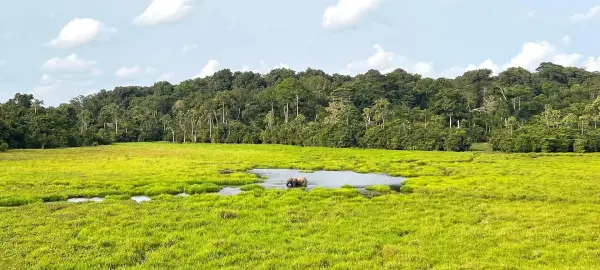- Overview
- Info & Inclusions
- Itinerary
- Map & Hotels
- Photos
- Dates & Prices
- Max Group Size 24
- Privately chartered vessel with expert guides and executive Belgian chef
- Bonobo tracking in the DRC's primary forests
- Western Lowland Gorilla encounters in Dzanga Sangha National Park
- Authentic village visits with Pygmy tribes, Teke Kingdom, and Sangha-Sangha peoples
- Navigate over 700 km along the Congo, Alima, and Sangha Rivers
- Cathedral forests, swamp ecosystems, and exceptional birdwatching with hundreds of species
- Singles friendly (view options for single travellers)
- Full-time Tour Leader services with local guide support at various locations
- All accommodation as outlined in the itinerary
- All meals as specified in the daily itinerary
- All transport including charter flight, launch boat excursions, and 4x4 transfers
- All sightseeing and entrance fees for sites noted as 'visited' in the detailed itinerary
- Gorilla tracking permit in Dzanga-Sangha National Park (CAR)
- Bonobo tracking experience in the DRC
- Onboard educational programs and expert guide lectures
- Gratuities for local guides, drivers, restaurant staff, and porters
- Airport transfers for land & air customers and for early arriving/late departing land & air customers who book their air and extra hotel nights through us
- International airfare to/from the tour (we strongly advise purchasing changeable airline tickets)
- International air taxes (if applicable)
- Airport transfers for Land Only customers
- Additional pre and post tour hotel nights
- Visa fees for Republic of Congo, Central African Republic, and Democratic Republic of Congo
- Letter of invitation to apply for the Republic of Congo visa (195 CAD/140 USD)
- Travel insurance (strongly recommended)
- Tour Leader gratuities
- Drinks and beverages, including additional drinks and mineral water
- Personal items and services including laundry service (available on board at additional cost), Optional activities not specified in the itinerary
- Seasonality and Weather:
The tour operates in early and late June through mid-July, during Central Africa's long dry season. This is the optimal time for wildlife tracking, as drier forest trails make gorilla and bonobo encounters more accessible, though some paths remain muddy year-round due to the rain forest environment. Water levels on the Congo Basin rivers are generally lower and more stable during this period, facilitating reliable navigation and launch boat excursions to remote tributaries and villages.
The dry season also concentrates wildlife at clearings like Dzanga Bai, where forest elephants gather in impressive numbers. While the Congo Basin remains humid throughout the year, this season offers the most favorable conditions for forest trekking and river exploration. Afternoon showers are possible but brief, and the lush vegetation remains verdant.
The combination of accessible wildlife, navigable waterways, and relatively dry trails makes late June through July the premier window for this expedition. - Transport and Travel Conditions:
This expedition combines comfortable vessel-based travel with active wilderness exploration requiring moderate fitness and adaptability. The Princesse Ngalessa serves as your floating base for seven nights, navigating the Congo, Alima, and Sangha Rivers. Daily excursions involve boarding aluminum launch boats (requiring balance and agility) and forest walks of varying intensity.
Gorilla and bonobo tracking demand moderate fitness, stamina, and sure-footedness on forest trails that can be muddy, steep, and slippery, with treks lasting 2-4 hours depending on animal locations. Agile mangabey tracking and visits to Dzanga Bai involve similar terrain. Village visits require walking on uneven ground, sometimes through thick vegetation or swampy areas.
The expedition includes a charter flight, extended overland drives through remote regions, and cross-border 4x4 transfers. Several full days feature extended boat journeys through pristine waterways.
The flexible itinerary accommodates different fitness levels, with options to remain aboard or at camp during strenuous activities. While this journey demands reasonable mobility and an adventurous spirit, the reward is access to one of Earth's most remote wildernesses and wildlife encounters shared by only a handful of travellers worldwide.
Please note: the 08 June 2027 departure will operate in reverse order from what is published on our website. The content, inclusions and accommodation will remain the same, and we still start and end in Brazzaville. But this journey will travel upriver instead of downriver. An accurate itinerary will be provided to those booked on this departure.
A NOTE ON SAFETY:
Travelling with Confidence: The Republic of Congo (Congo-Brazzaville) is one of the safest and most stable countries in Central Africa, with very low rates of violent crime. Our expeditions are carefully planned and led by experienced guides to remote, pristine wilderness areas that pose no direct security risks to travellers.
As part of a professionally organized group tour, you'll benefit from expert local knowledge, established safety protocols, and continuous support throughout your journey.
Understanding the Two Congos: It's important to note that there are two different countries with "Congo" in their name, which are often confused:
Republic of Congo (Congo-Brazzaville) – This is where our tours take place. It's a stable nation of approximately 5 million people with a strong safety record and welcoming environment for visitors.
Democratic Republic of Congo (DRC) – A separate, much larger country with its capital in Kinshasa. While the DRC faces challenges in some eastern border regions, this is an entirely different nation and has no bearing on travel to the Republic of Congo. We spend one night here in the middle of nowhere.
Our tour operates primarily in the Republic of Congo, where we have extensive experience and established partnerships to ensure your safety and comfort throughout your adventure.
Am I suitable for this tour? Please refer to our self-assessment form - Activity Level: 2
These are particularly busy tours that feature a lot of moving around, sometimes by train and short journeys on local transport. Walking tours of towns and cities are leisurely but you should be prepared to be on your feet for several hours. Some of our cultural trips that occur at high altitude and/or require greater independence with baggage handling (at hotels, airports, train stations) also fall into this category.
To learn more about the Activity levels, please visit our tour styles page. - Accommodation:
Well-located hotels and lodges throughout, ranging from 3-star to 5-star properties with air conditioning and modern amenities. In Brazzaville, we stay at the comfortable Pefaco Hotel Maya Maya (5-star) with convenient airport access.
In Ouesso, the Hotel Onanga (3-star, best available; no website) offers air-conditioned rooms with private bathrooms and WiFi.
During our time in the Sangha Trinational region (CAR), the group is divided between two riverside lodges—Doli Lodge and Sangha Lodge—both featuring elevated wooden bungalows with river-view terraces, en-suite bathrooms, hot water, and dining facilities overlooking the Sangha River. These remote properties blend rustic authenticity with modern comfort.
Aboard the Princesse Ngalessa (seven nights), passengers occupy one of 14 cabins across three decks, each with air conditioning, en-suite bathrooms, windows, and elegant furnishings. The ship features 600m² of communal spaces including an indoor lounge, bar, dining room, outdoor jacuzzi, and observation deck. Three aluminum launch boats facilitate daily excursions.
One night is spent in a comfortable tented camp near the bonobo conservation site in the DRC (no website). Porter service and luggage handling vary by location; guests should be reasonably independent with their luggage at certain properties.
Please note that some of our accommodation choices do not have websites; we regret if our “Map & Hotels” feature fails to yields results. - Staff and Support:
This is a fully-supported and guided expedition led by senior Tour Leader, Martin Charlton - Group Size:
Group size range 18-24 plus Tour Leader. To make the privately chartered vessel component cost-effective for all travellers, we've increased our usual group size for this special departure.
- Day 1:Arrival in BrazzavilleWelcome to Brazzaville, capital and river port of the Republic of the Congo, and the gateway to your extraordinary Congo Basin adventure!*
Far more than just an airport stopover, Brazzaville is a dynamic city that pulses with life, culture, and history. Elegant French colonial architecture lines tree-shaded boulevards, while vibrant neighborhoods burst with music, art, and the legendary style of La Sape. This is a city where tradition and modernity dance together—where Congolese rumba flows from open doorways and impeccably dressed Sapeurs strut alongside bustling markets.
Founded in 1880 and named after Pierre Savorgnan de Brazza, an Italian-born French explorer, the city served as the capital of French Equatorial Africa until independence in 1960. Brazzaville's colonial-era layout divided the city into a distinctly European center and African neighborhoods—Poto-Poto, Bacongo, and Makélékélé—each with its own character and cultural identity that persists today.
Situated on the northern bank of the mighty Congo River, Brazzaville offers a fascinating contrast to its larger neighbor across the water: Kinshasa, capital of the Democratic Republic of Congo. The two cities face each other across the river—two of the closest capital cities in the world—yet they feel remarkably different in atmosphere and energy. Both were founded as inland ports at a crucial point where the Congo River becomes impassable to the south, forcing all trade and travel to pass through these strategic locations.
Today, Brazzaville serves as an excellent starting point for journeys into the tropical rainforests of the Congo Basin, and you're about to embark on one of the most remarkable expeditions on the continent.
THIS ITINERARY may be subject to change due to weather conditions, low water levels, administrative constraints or access restrictions imposed by the State or national parks. Therefore, sailing times and excursions may be changed at the captain's discretion. Our partners will do everything they can to minimize disruption to travel plans. An alternative route will be proposed after consultation between the captain of the ship and the management of the company if necessary. If the airline is unable to provide the domestic flight and in the absence of other reasonable air alternatives, a transfer may be provided by road.
* Please note: the 08 June 2027 departure will operate in reverse order from what is published on our website. The content, inclusions and accommodation will remain the same, and we still start and end in Brazzaville. But this journey will travel upriver instead of downriver. An accurate itinerary will be provided to those booked on this departure.
Overnight in Brazzaville
Included Meal(s): Dinner, if required - Day 2:Brazzaville City Discovery: Art, Heritage & the Legendary SapeursToday we begin our Congo adventure with a half-day city tour of Brazzaville, the vibrant capital of the Republic of Congo, known as the "City of Music" for its legendary rumba scene.
Our exploration will include the Basilica of Sainte-Anne, a striking Catholic church in the heart of the city. This architectural landmark, with its distinctive green-tiled roof, has been a spiritual and cultural centerpiece of Brazzaville since colonial times.
We will be sure to visit the Congo Basin Museum, dedicated to showcasing the rich cultural heritage of the Congo Basin region. The museum highlights the remarkable diversity and complexity of traditional societies, with an impressive collection of artifacts including ceremonial masks, intricate sculptures, and beautifully woven textiles that tell the story of the peoples who have inhabited this vast territory for millennia.
At the Poto-Poto School of Painting, we discover one of Africa's pioneering art institutions. Established in 1951, this celebrated school was among the first African painting schools dedicated to representing and expressing Congolese artistic traditions. The vibrant works produced here blend traditional African themes with modern techniques, creating a distinctive Congolese aesthetic that has gained international recognition.
We also visit the Savorgnan de Brazza Mausoleum, the final resting place of the Italian-French explorer Pierre Savorgnan de Brazza, after whom the city is named. This memorial offers insight into the complex colonial history of the region.
A highlight of our day comes when we meet the legendary Sapeurs—members of La Sape, or 'the Society of Ambiance-Makers and Elegant People'. This unique fashion subculture has made Brazzaville famous worldwide. The Sapeurs are stylish individuals who piece together vibrant and sophisticated outfits featuring designer labels, bold colors, and impeccable tailoring. What makes La Sape so powerful is that it functions as a form of colonial resistance, social activism, and peaceful protest—a way of asserting dignity, pride, and joy in the face of hardship.
Most Sapeurs have ordinary day jobs as taxi drivers, tailors, or gardeners, but as soon as they clock off, they transform themselves into debonair characters, strutting through the streets with the confidence of runway models. Their philosophy is simple but profound: elegance is not about wealth, but about attitude, creativity, and self-respect. Meeting these extraordinary individuals is an unforgettable introduction to Congolese culture and spirit.
Overnight in Brazzaville
Included Meal(s): Breakfast, Lunch and Dinner - Day 3:Journey North: Brazzaville to Ouesso & the Edge of WildernessWe say farewell to Brazzaville this morning and enjoy a charter flight that takes us north (approx. 1 hour and 45 minutes aboard a 70-seat jet). Through the windows we will have a great view of one of the largest primary forests of the world. After our flight over the sublime canopy, we arrive in Ouesso - our starting point for a journey through the Dzanga Sangha National Park, the Alima River and the Congo Rivers. Like any expedition, there will be surprises, unforeseen events and unforgettable experiences!
Our destination is Ouesso - in northern Republic of the Congo at the border of Cameroon, lying on the Sangha River and surrounded by rainforest. The city's main industries are mining, forestry, agriculture, and wood processing.
The vibe here is laid-back, quiet and authentic, with a mix of local culture and lush surroundings. Just behind, walk through the pristine primary forest to discover the ecosystem. Sangha River quay and port is the town’s literal front door where one can watch longboats and timber barges come and go. Small dugout canoes leave from town for nearby villages and river islands.
Overnight at the Onanga Hotel
Included Meal(s): Breakfast, Lunch and Dinner - Day 4:Journey to the Sangha Trinational: Into UNESCO Wilderness and the CAROver the next several days the focus of our activities will take place in the Sangha Trinational (TNS)
Situated in the north-western Congo Basin, where Cameroon, Central African Republic and Congo meet, the TNS encompasses three contiguous national parks totaling around 750,000 ha. Much of the site is unaffected by human activity and features a wide range of humid tropical forest ecosystems with rich flora and fauna, including Nile crocodiles and goliath tigerfish, a large predator. Forest clearings support herbaceous species and Sangha is home to considerable populations of forest elephants, critically endangered western lowland gorilla, and endangered chimpanzee. The site’s environment has preserved the continuation of ecological and evolutionary processes on a huge scale and great biodiversity, including many endangered animal species. The Sangha Trinational was added as a UNESCO World Heritage Site in 2012 because of its outstanding biodiversity and unique biological communities
With around 105 mammal species recorded so far, varying in size from small mice and bats to forest elephants and western lowland gorillas, the wildlife of the Dzanga-Sangha Special Reserve is as varied as it is plentiful.
Today we will travel by boat up the upper Sangha River towards Bayanga in the Central African Republic on comfortable launch boats for approximately 7.5 hours. Along our journey we are surrounded by pristine forest with local villages and settlements dotted throughout. With some luck we may observe some of the many resident bird species and monkeys of the region.
In the afternoon we will arrive at our lodge for a nice sundowner overlooking the Sangha.
Note: The Dzanga-Sangha is in the extreme southwest of the CAR, isolated from the rest of the country by poor roads and huge distances. The distance from the Dzanga Sangha to the 'trouble hotspots' is over 2500km. So, while government websites often blanket the country with a single travel warning, this region is far from any area of concern.
*Please bring a light, soft travel bag that can hold your belongings for the next 5 days. Maximum 6 kg / 13 lbs.
Night at our river lodge. For the next 5 nights our group will be split between 2 riverside lodges (Doli Lodge & Sangha Lodge).
Included Meal(s): Breakfast, Lunch and Dinner - Day 5:Dzanga-Sangha: In Search of Western Lowland GorillasThe Congo Basin itself spans six countries - Cameroon, Central African Republic, Democratic Republic of Congo, Republic of Congo, Equatorial Guinea and Gabon and is home to the second-largest rainforest on the planet, after the Amazon in South America. Known as the "heart of Africa", sitting as it does at the centre of the continent, the Sangha Concession is about as remote as it gets from a safari point of view, offering a genuine retreat, far from the madding crowds and concrete jungles that make urban existence so stressful.
The Dzanga-Sangha region provides one of the last remaining wildlife refuges for species such as the forest elephant and the western lowland gorilla. Lowland gorilla trekking is an adventure like no other - a Journey into the heart of the wild. For many this is a thrilling and life-changing adventure that allows travelers to experience one of the most intimate wildlife encounters on the planet.
We will leave the lodge in the morning for a 45–60-minute drive to the gorilla base camp where we start our tracking. On the trail we have the chance to see many other animals. Our Ba'Aka gorilla trackers (an ethnic group often called 'pygmies') walk the forest in search of signs. Discarded stems say: a gorilla ate here. Snapped seedlings, overturned logs, a faint depression in the dirt— all telltale signs. A trained eye can distinguish the footpaths of gorillas from those trodden by forest elephants,
Once spotted, we observe the gorillas from a safe distance, and they observe us. After an hour we will leave, with images in our heads.
A rare and distinct encounter: Unlike mountain gorillas, which are found in the high-altitude forests of Uganda, Rwanda, and the DRC, lowland gorillas inhabit the lowland rainforests of countries like the Republic of Congo, Central African Republic, Gabon, and Cameroon. The experience involves hiking through thick vegetation, led by expert guides and trackers who are skilled in locating these elusive animals. The reward for your effort is a rare and intimate encounter with a family of lowland gorillas in their natural habitat. For travelers who have trekked to see mountain gorillas in Uganda or Rwanda, the western lowland gorilla offers a strikingly different experience. These gorillas are the smallest of the subspecies, with a more brownish coat and silver saddles that extend dramatically to their rumps and thighs. Unlike their mountain cousins who inhabit high-altitude forests, western lowland gorillas thrive in the steamy lowland rainforests and swamp forests of the Congo Basin, where they feed on nearly 100 species of seasonal fruits—a far more varied diet than mountain gorillas. They live in smaller, more intimate family groups and remain significantly more elusive and less studied due to their dense forest habitat.
Thrilling Hike: The journey to find the gorillas is often an adventure in itself. The trek can involve navigation through dense undergrowth and crossing rivers. This makes the experience all the more rewarding when you finally encounter the gorillas.
Remote and Less Crowded: Lowland gorilla trekking is often less crowded than the more popular mountain gorilla treks. This means a more exclusive and intimate experience, often in remote and untouched areas of the rainforest.
Whether you're a seasoned traveler or a first-time adventurer, the experience of walking in the footsteps of gorillas, surrounded by the sights and sounds of the rainforest, is something that will stay with you forever.
Note: Travellers can choose to opt out of the gorilla tracking experience and the equivalent of 500€ per person will be refunded. This amount will also be refunded if the tracking is unsuccessful.
Night at our river lodge
Included Meal(s): Breakfast, Lunch and Dinner - Day 6:Dzanga Bai: The Elephant Village & Rainforest SpectacleEarly in the morning we will visit the famous Dzanga Bai, the most celebrated clearing in the Dzanga-Sangha Special Reserve, if not the entire Congo Basin. Known as the 'Elephant Village' or 'Elephant Enclave', this large swampy forest clearing in Dzanga-Ndoki National Park is so significant it's visible from space.
Unique to the Congo Basin, bais are sandy and muddy open patches of forest pockmarked with puddles, streams, and watering holes full of mineral-rich water. Dzanga Bai is believed to have been cleared and maintained by African forest elephants that trample or eat much of the vegetation in this spot. The animals are drawn to the clearing's mineral-rich earth and water, creating one of the most sought-after game viewing experiences in Africa.
Anywhere from 50 to 150 forest elephants arrive at this 10-hectare bai each day, with several thousand living in the surrounding area. It's not uncommon to have more than 100 forest elephants enjoying the water and mud at the same time, spread across the clearing. Along with these massive herbivores, large herds of forest buffalo and bongo antelope gather, accompanied by sitatunga (swamp antelope), giant forest hogs, and many of the 10 monkey species that occur in the rainforest.
From a 9-meter-high observation platform, we'll have panoramic views over the bai and an excellent position from which to observe and photograph this extraordinary congregation of wildlife. Here you can experience flocks of African Grey Parrots, a variety of hornbills ranging from the world's two smallest species—the Dwarf Hornbills—to Africa's largest forest-dwelling hornbill, the Black Casqued Hornbill, and countless other bird species.
We take the time to observe the animals from the platform before returning to our lodge.
Night at our river lodge
Included Meal(s): Breakfast, Lunch and Dinner - Day 7:Hokous Bais Exploration: Tracking Agile Mangabeys & Forest LifeWe depart in the morning for the seven baïs called Hokous bais.
During these walks we have the chance to observe the forest ecosystem and see a variety of animals including elephants, gorillas, forest hogs and many birds. Our BaAka trackers will be on the search for the Agile Mangabeys, an 'Old World' monkey of the white-eyelid mangabey group found in swampy forests of Central Africa. These silver-grey monkeys exhibit remarkable gracefulness as they navigate the forest canopy with ease, using their long limbs and prehensile tails. Agile Mangabeys are highly social creatures, often engaging in playful behaviours such as chasing each other, leaping through the trees, and engaging in mock battles. They communicate through a diverse range of vocalisations, including chirps, squeals, and grunts, which play a crucial role in maintaining social bonds and coordinating group activities.
The Dzanga-Sangha is home to the world's only habituated group of agile mangabeys
Night at our river lodge
Included Meal(s): Breakfast, Lunch and Dinner - Day 8:BaAka Cultural Immersion: Forest Traditions & the Music of WaterThis morning, we set out for an immersion into the world of the BaAka to discover the traditions of these emblematic people of the forest. The Dzanga-Sangha region of the Congo Basin has been inhabited by humans for more than 50,000 years, with the BaAka among the most well-known of approximately 150 distinct ethnic groups in the region.
The BaAka are semi-nomadic hunter-gatherers deeply connected to the rainforest. Their traditional lifestyle revolves around hunting and gathering, and their extensive knowledge of the forest's resources—passed down over millennia—is profound. They are skilled trackers, familiar with the medicinal properties of countless plants, and possess a deep understanding of animal behavior that makes them invaluable guides in this wilderness.
Our experience today is not a structured and choreographed tourist activity, so there is no formal agenda. We may participate in a traditional net hunt, discover plants used in traditional medicine, collect wild honey, or engage in basket fishing. All of this will take place in the ever-joyous atmosphere of these forest peoples, allowing for authentic cultural exchange and spontaneous moments of connection.
We will return to the lodge for lunch, and then this afternoon we will experience the mesmerizing tradition of Liquindi—the BaAka water drumming. Referred to as 'Hands that Make the River Sing', this ancient and extraordinary music is a rhythm born not of drums or flutes, but of water and air, a pulse that resonates with the very spirit of the river itself.
With cupped hands, the BaAka women strike the water's surface, trapping air and creating a percussive sound that echoes through the forest. Each woman has her own rhythm, her own melody. One starts, then another joins, and another, until the river comes alive with a symphony unlike anything else on earth—a performance that has been passed down through countless generations.
Night at our river lodge
Included Meal(s): Breakfast, Lunch and Dinner - Day 9:Return to OuessoAfter spending the last four days in one of the least visited places on Earth, we return to Ouesso on our launch boats ( approximately 7 hours).
Night at the Onanga Hotel
Included Meal(s): Breakfast, Lunch and Dinner - Day 10:Overland to Oyo: Boarding the Princesse NgalessaThis morning, we depart by road for Oyo and the Princesse Ngalessa. Our journey through tropical forest and bush takes approximately 6 hours, driving along the eastern border of Odzala-Kokoua National Park. Once in Oyo, we will board the Princesse Ngalessa and begin cruising the Alima River, a significant tributary of the much larger Congo River, known for its peaceful natural landscapes, traditional villages, and rich biodiversity.
Welcome Aboard the Princesse Ngalessa: Specifically designed for deep river expeditions on the Congo, the Princesse Ngalessa features a shallow draft perfect for navigating these waters, along with comfortable accommodations and outstanding cuisine. The vessel takes the classic form of the passenger ships that have for decades transported passengers on the Congo River and its tributaries between the different capitals of Central Africa.
Built in a Belgian shipyard in Kinshasa in 2017, she was completely refitted and relaunched in 2023/2024 for expedition cruises in the heart of the Congo Basin forest. Her renovation into a modern and comfortable river ship launches a new era for the development of sustainable tourism in the Republic of Congo, reviving the long tradition of river navigation in the Congo.
With 14 cabins across three decks, the ship provides modern amenities including air conditioning, en-suite bathrooms, and elegant furnishings in every cabin. With 600m² of communal spaces, guests can relax in the indoor lounge and bar, enjoy gourmet dining prepared by our executive Belgian chef, and take in breathtaking scenery from the observation deck. The ship's design ensures both comfort and immersion in the surrounding wilderness.
Our crew of 21 includes a cruise director and 3 expert guides who will introduce you to the incredible wonders of this seldom-visited world. The ship is equipped with aluminum launch boats for river explorations, allowing for daily adventures into tributaries, wildlife viewing, cultural encounters with indigenous communities, and opportunities to spot rare wildlife while experiencing the region's diverse ecosystems.
Overnight on board the Princesse Ngalessa
Included Meal(s): Breakfast, Lunch and Dinner - Day 11:The Winding Alima: Village Life & the Sounds of the ForestToday we navigate the Alima River, a beautiful narrow waterway that winds through lush swamp forests. As we pass the many bends of the river, charming raffia villages appear along the banks, their distinctive palm-thatched structures blending seamlessly into the landscape.
In the afternoon, we visit Mondongo, a village constructed primarily using raffia palm, home to the Moye people. The Moye are an indigenous group located mostly along the Oubangui and Alima rivers, known for their deep knowledge of the local forests and rivers. A local guide will share the fascinating world of traditional medicines, explaining how various plants and natural remedies are used to treat different ailments—knowledge passed down through generations and still vital to daily life in these remote communities.
The swamp forest surrounding us is teeming with plant life, creating a verdant cathedral of vegetation. As evening approaches, we venture out on the launch boats for a sensory experience unlike any other—listening to the forest come alive. As darkness falls, the soundscape transforms: the calls of birds settling for the night, the chorus of frogs and insects, the occasional splash of fish or movement of nocturnal animals. It's a symphony of the wild that envelops us in the primordial rhythm of the Congo Basin.
Overnight on board the Princesse Ngalessa
Included Meal(s): Breakfast, Lunch and Dinner - Day 12:Reaching the Mighty Congo - Bonda to MossakaOur journey continues today as we head to the village of Bonda. Depending on water levels, we will explore the flooded swamp forest by canoe or kayak, gliding silently along narrow tributaries where the forest is partially submerged. This unique ecosystem creates an enchanting labyrinth of water and vegetation, offering opportunities to observe wildlife and experience the forest from an entirely different perspective.
In the afternoon, we reach a momentous milestone—the majestic Congo River itself, the second largest river in the world. We arrive at the town of Mossaka, strategically positioned at the confluence of the Alima, Likouala-Mossaka, and Congo Rivers. This historic trading post sits at the lowest point in the Congolese region of Cuvette, which forms the central depression of the Congo Basin.
The floodplain surrounding Mossaka is characterized by remarkable ecological diversity, featuring a mosaic of microhabitats including periodically flooded savannas, flooded forests, lakes, channels, and pools. This dynamic landscape is continually reshaped by seasonal variations in water levels, with the distinctive black waters of the Likouala-Mossaka River flooding the plains and creating one of the most biodiverse wetland systems in Central Africa. This unique positioning has made Mossaka a vital hub for river commerce for generations.
Here we explore the remnants of the colonial era, including old administrative buildings and architectural traces of Mossaka's storied past. The vibrant local market bustles with activity, offering a glimpse into daily life and commerce along the Congo
Later, we visit the famous alleys lined with salted fish drying racks—a tradition that has made Mossaka renowned throughout the region. Rows upon rows of fish hang in the sun, a testament to the river's bounty and the time-honored preservation techniques that have sustained communities here for generations. The sight and aroma of this age-old industry provide a fascinating window into one of the Congo Basin's most important food traditions.
We continue our journey, arriving for the night at the village of Likendzé.
Overnight on board the Princesse Ngalessa
Included Meal(s): Breakfast, Lunch and Dinner - Day 13:Likendze & the Congo Islands: Birds, Fishermen & River LifeEarly in the morning, we set off on a birdwatching outing as the dawn light illuminates the river. The Congo Basin is home to over 1,000 bird species, and this region offers exceptional opportunities to observe a great variety including ospreys, palm-nut vultures, African fish eagles, African grey parrots, kingfishers (including the rare Brazza's kingfisher), weavers, herons, storks, ibises, hornbills, and the elusive turaco with its brilliant crimson wing feathers.
Later in the morning, we discover traditional fishing techniques and the daily activities specific to the village of Likendzé. Local fishermen demonstrate their time-tested methods, offering insight into how communities have harvested the river's bounty for generations.
In the afternoon, we sail through the islands of the Congo River. The river widens dramatically here—spanning over 10 kilometers—forming a labyrinth of channels and islands where seasonal fishing villages are established. This is the Congo at its most expansive and majestic.
From the observation deck, we watch the fascinating procession of river traffic: fishing boats navigating between islands, traditional whalers, and long, flat barges laden with goods. Like floating villages, these barges transport an incredible array of cargo—goods, livestock, and passengers—from one town to another, serving as the lifeline of commerce and connection in this remote region. It's a mesmerizing glimpse into the Congo River's role as Central Africa's great highway.
Overnight on board the Princesse Ngalessa
Included Meal(s): Breakfast, Lunch and Dinner - Day 14:Into the DRC: Journey to Bonobo Conservation CampIn the early afternoon, we leave the boat and embark on a cross-border adventure, heading out by 4×4 for a two-hour drive through hilly landscape into the Democratic Republic of Congo. We're traveling to one of the most extraordinary wildlife sites in Africa—the only place in the world where semi-habituated groups of bonobos can be observed in their natural habitat.
After settling into our comfortable tented camp, we spend the afternoon learning about the remarkable local conservation projects carried out in partnership with nearby communities. These initiatives are crucial to protecting bonobos, an endangered species threatened by habitat destruction and hunting. The trackers who monitor these bonobos daily—similar to the approach used with habituated gorillas—have created a unique opportunity for conservation and research.
Note: This expedition takes place in a stable, peaceful region, free from violence. The bonobo tracking site is very close to the border with the Republic of Congo, in an area that poses no security concerns.
Travellers not wishing to take part in the bonobo trek can opt to stay aboard the ship for a birdwatching tour around the Congo River islands, or join us at camp without participating in the tracking.
Please bring a small backpack that can hold your belongings for this one overnight at the tented camp.
Overnight in a tented camp
Included Meal(s): Breakfast, Lunch and Dinner - Day 15:DRC Bonobo Tracking: A Once-in-a-Lifetime Primate EncounterToday's adventure is ideal for nature and animal lovers who want to see and photograph one of Africa's most exclusive wildlife species: the bonobo. At dawn, we head into the forest and position ourselves beneath the bonobo nests. As soon as they wake, we observe these remarkable primates stretching, socializing, and feeding—an intimate glimpse into their daily lives.
Bonobos (Pan paniscus) live exclusively in the equatorial forests of the Democratic Republic of Congo and are one of humanity's closest living relatives. They share 98.7% of their DNA with humans, making them—along with chimpanzees—our nearest evolutionary cousins. However, bonobos exhibit unique characteristics that set them apart: they are generally smaller, leaner, and darker than chimpanzees, with more slender builds and prominent eyes.
Most remarkably, bonobo society differs dramatically from that of chimpanzees. While chimpanzees have male-dominated hierarchies, bonobos have a matriarchal social structure with strong female leadership. They are known for their peaceful conflict resolution and use of social bonding to ease tensions—earning them a reputation as the most peaceful of the great apes.
Because these bonobos are tracked daily by dedicated trackers, we will almost certainly encounter them—sometimes groups of up to 50 individuals! This is an incredibly rare opportunity; you are in the only place in the world where semi-habituated bonobo groups can be observed in their natural habitat.
After following the bonobos through the forest, we return to the Princesse Ngalessa in the late morning and continue our river journey.
In the afternoon, we reach the Lefini Estuary, and if conditions permit, we'll take a boat excursion to observe the local hippo population—a perfect end to an unforgettable day.
Overnight on board the Princesse Ngalessa
Included Meal(s): Breakfast, Lunch and Dinner - Day 16:The Teke Kingdom: Queen Ngalifourou & the Sacred Kebe KebeIn the morning, we arrive at Ngabe, one of the ancient capitals of the powerful Teke Kingdom, which once controlled vast territories in Central Africa. The Teke people (also known as Bateke) are one of the oldest ethnic groups in the Congo Basin, with a rich history of kingship and spiritual traditions that continue to this day.
We ascend through the village to visit the current queen, Princess Ngalifourou—a dignified and revered figure who holds one of the most important roles in Teke culture. As the guardian of 'Nkwembali', the spiritual deity of the Bateke, she is the sole person authorized to transfer power to the new king, the Makoko. This makes her position essential to the continuity of the kingdom's sacred traditions and political legitimacy.
During our visit, we are privileged to witness the mesmerizing Kebe Kebe ritual—a traditional dance and initiatory ceremony unique to the Congo. The performers, resembling whirling dervishes, are wrapped in elaborate raffia robes adorned with feathers from various birds. They spin and dance while manipulating ornate puppets that represent painted Koyo heads, displaying the specific scarifications that mark their ethnic identity. The hypnotic movement, accompanied by rhythmic drumming and chanting, creates a powerful spiritual atmosphere that connects past and present.
This rare cultural encounter offers a profound glimpse into living traditions that have been preserved for centuries—a testament to the resilience and cultural pride of the Teke people.
In the evening, we begin our final voyage, sailing toward Brazzaville as the sun sets over the Congo River, reflecting on the extraordinary journey we've shared.
Overnight on board the Princesse Ngalessa
Included Meal(s): Breakfast, Lunch and Dinner - Day 17:Disembarkation in BrazzavilleDisembarkation in Brazzaville.
As most flights typically depart later in the day, we will aim to include some additional touring today. This content is TBA. We will either continue with further exploration of Brazzaville, or embark on a tour to the rapids (which mark the beginning of the Livingstone Falls
Later in the day we say farewell before departure for your scheduled international flight.
BON VOYAGE!
Included Meal(s): Breakfast
Countries Visited: Central African Republic and Congo Brazzaville
*The red tour trail on the map does not represent the actual travel path.
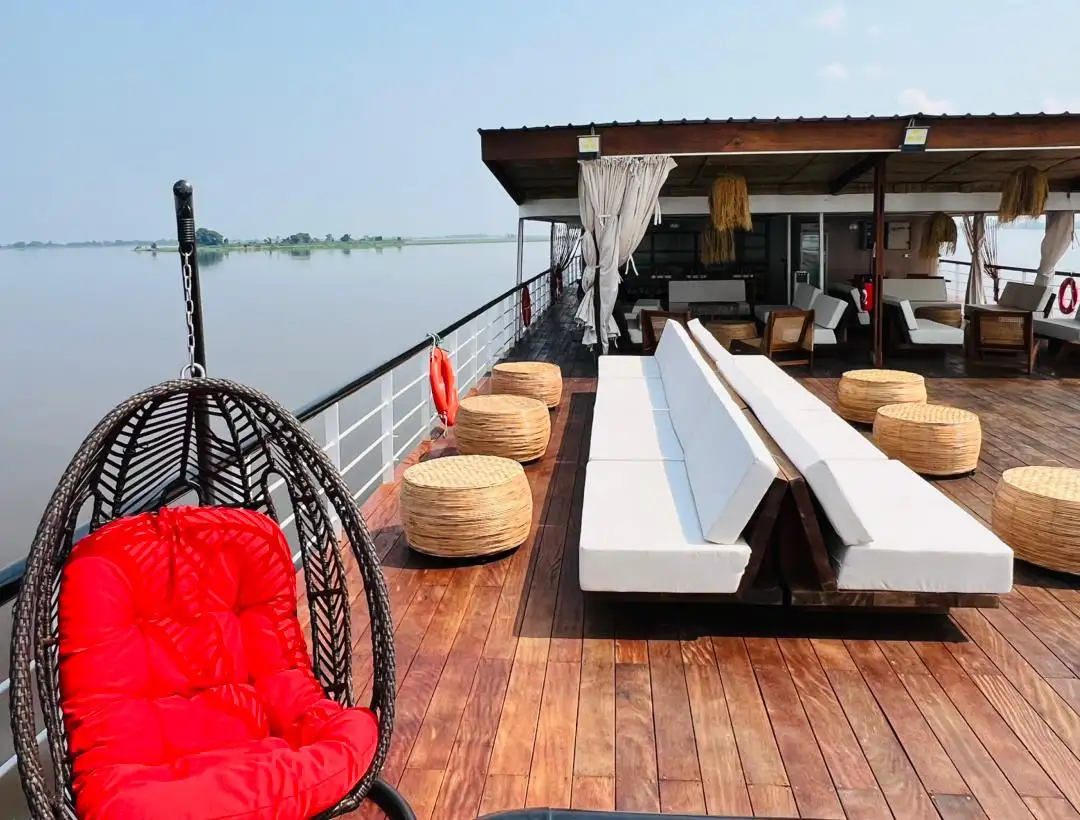
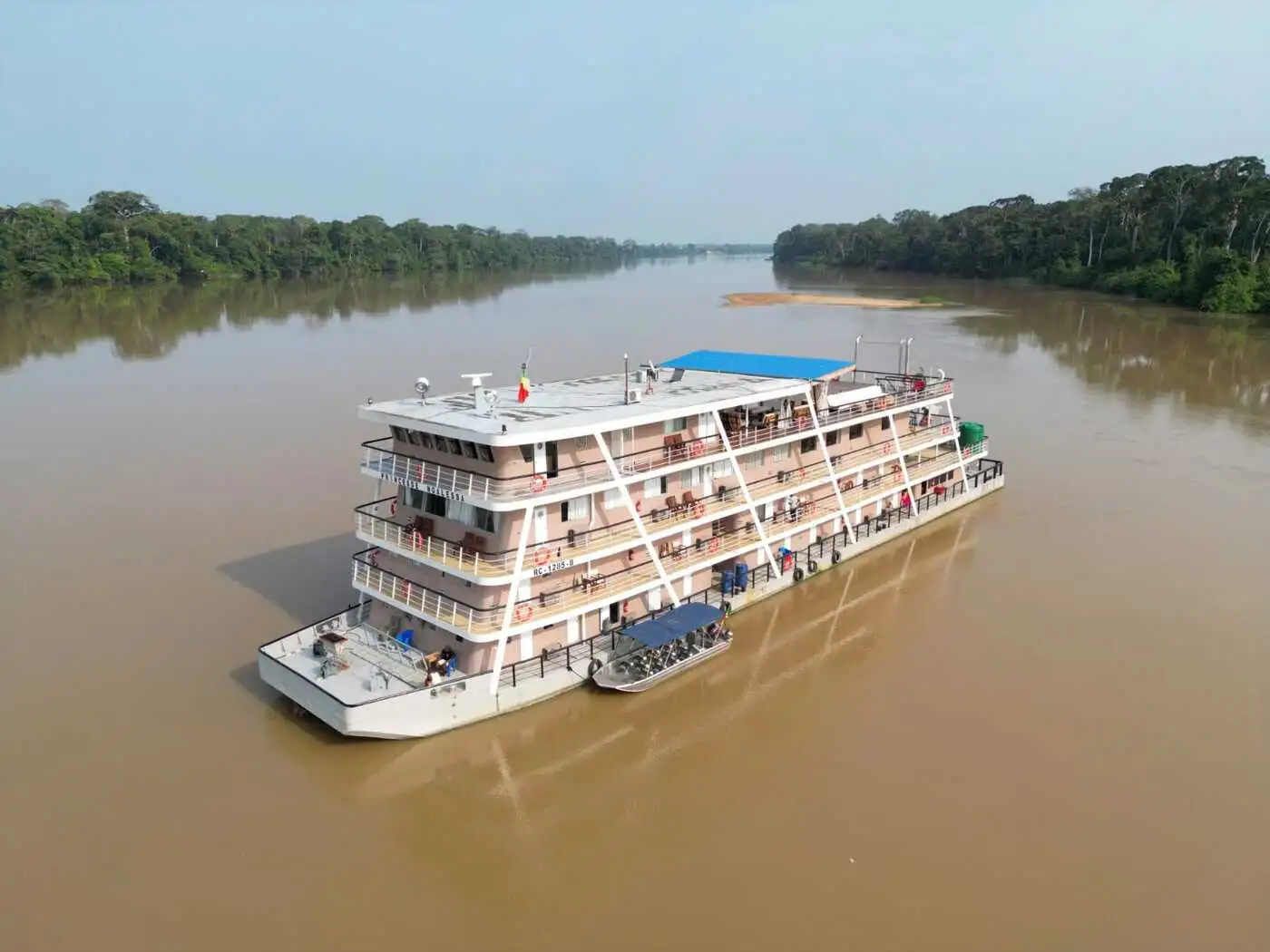
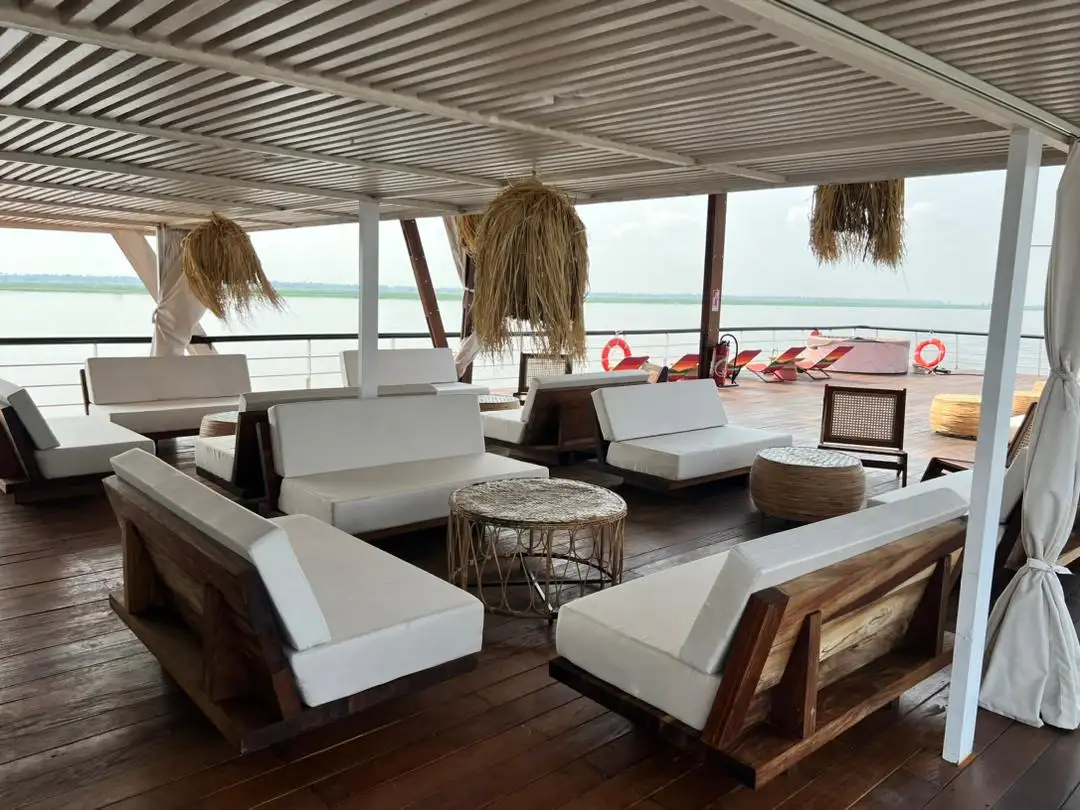
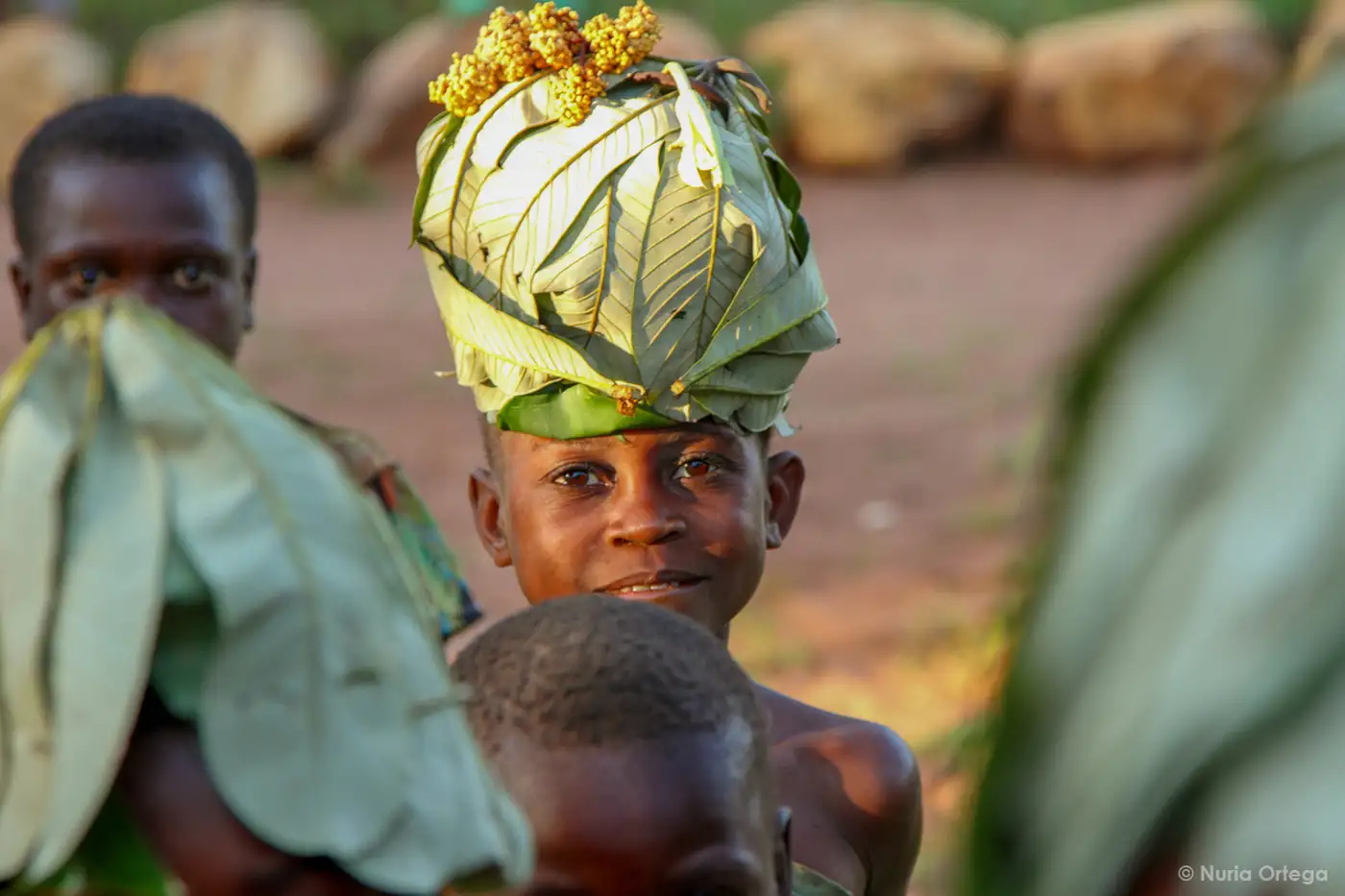
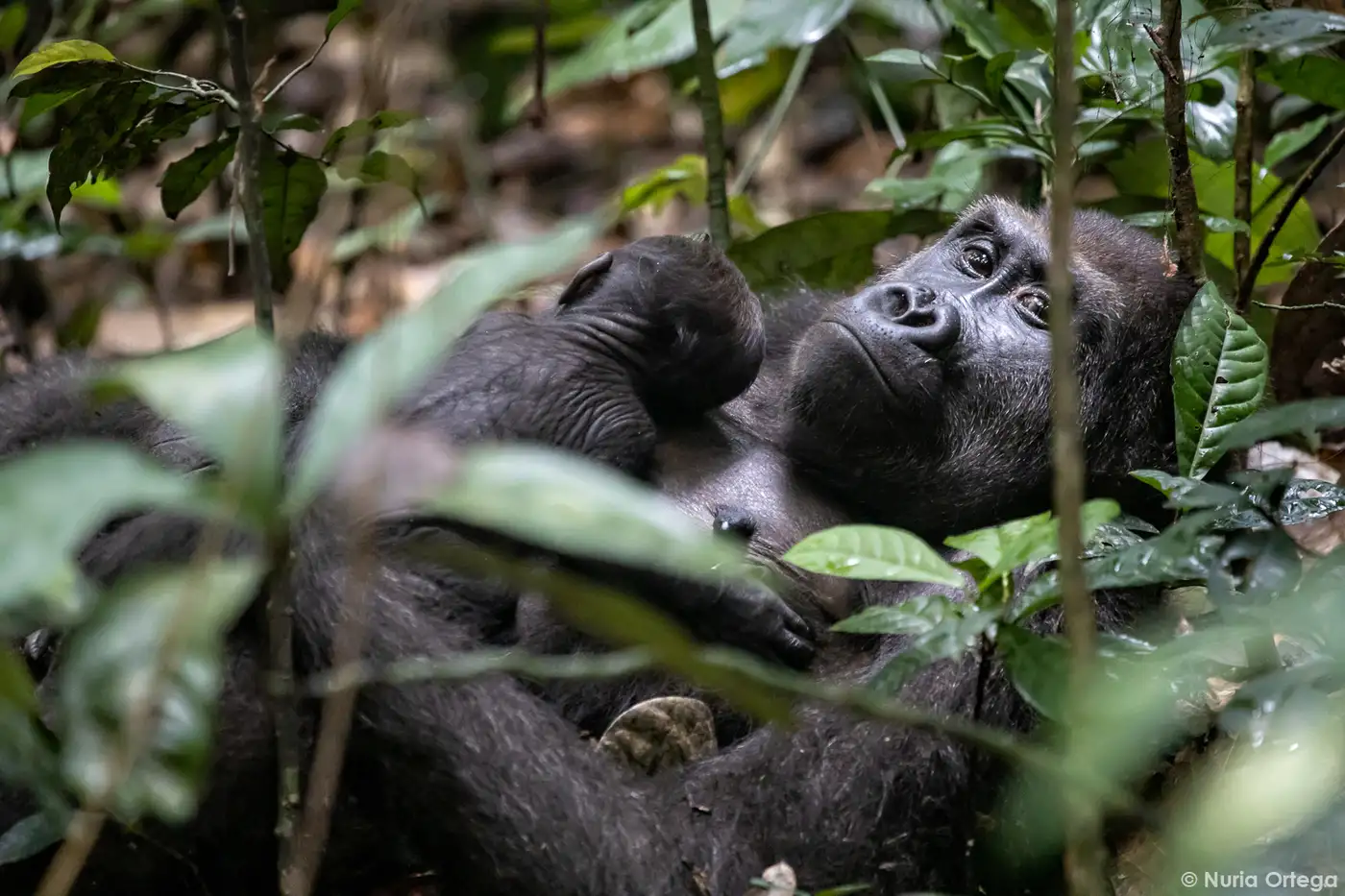
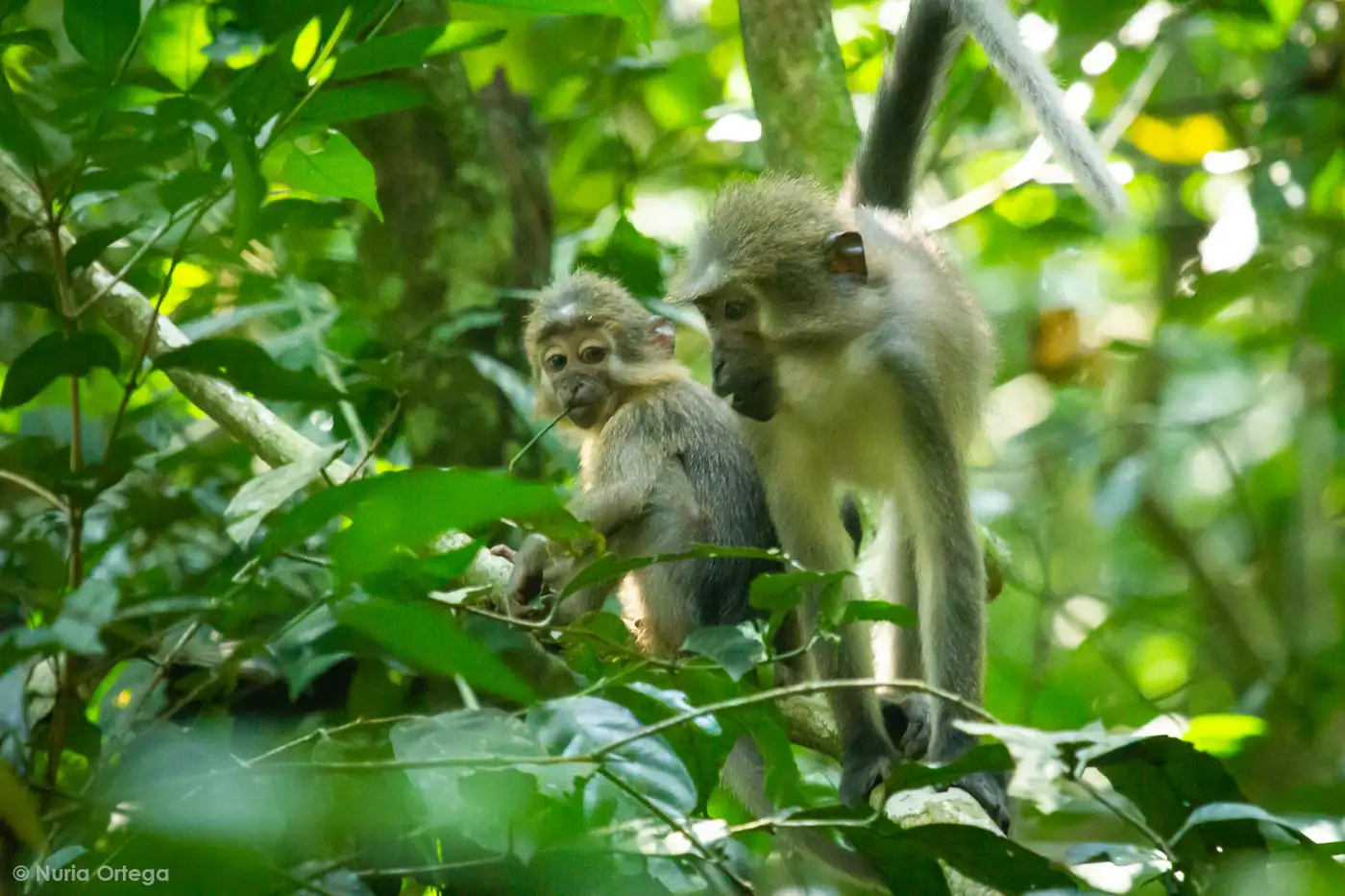
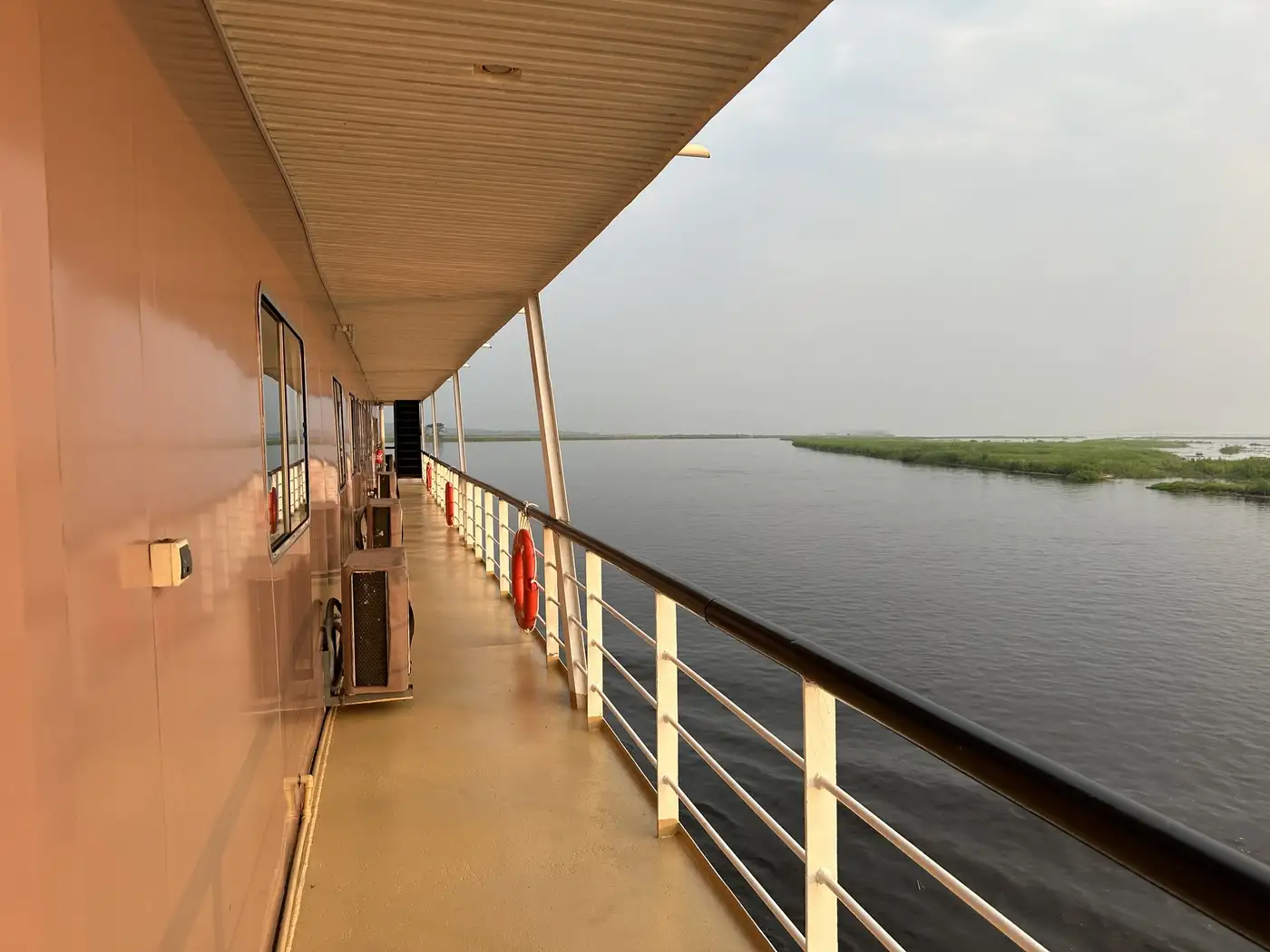
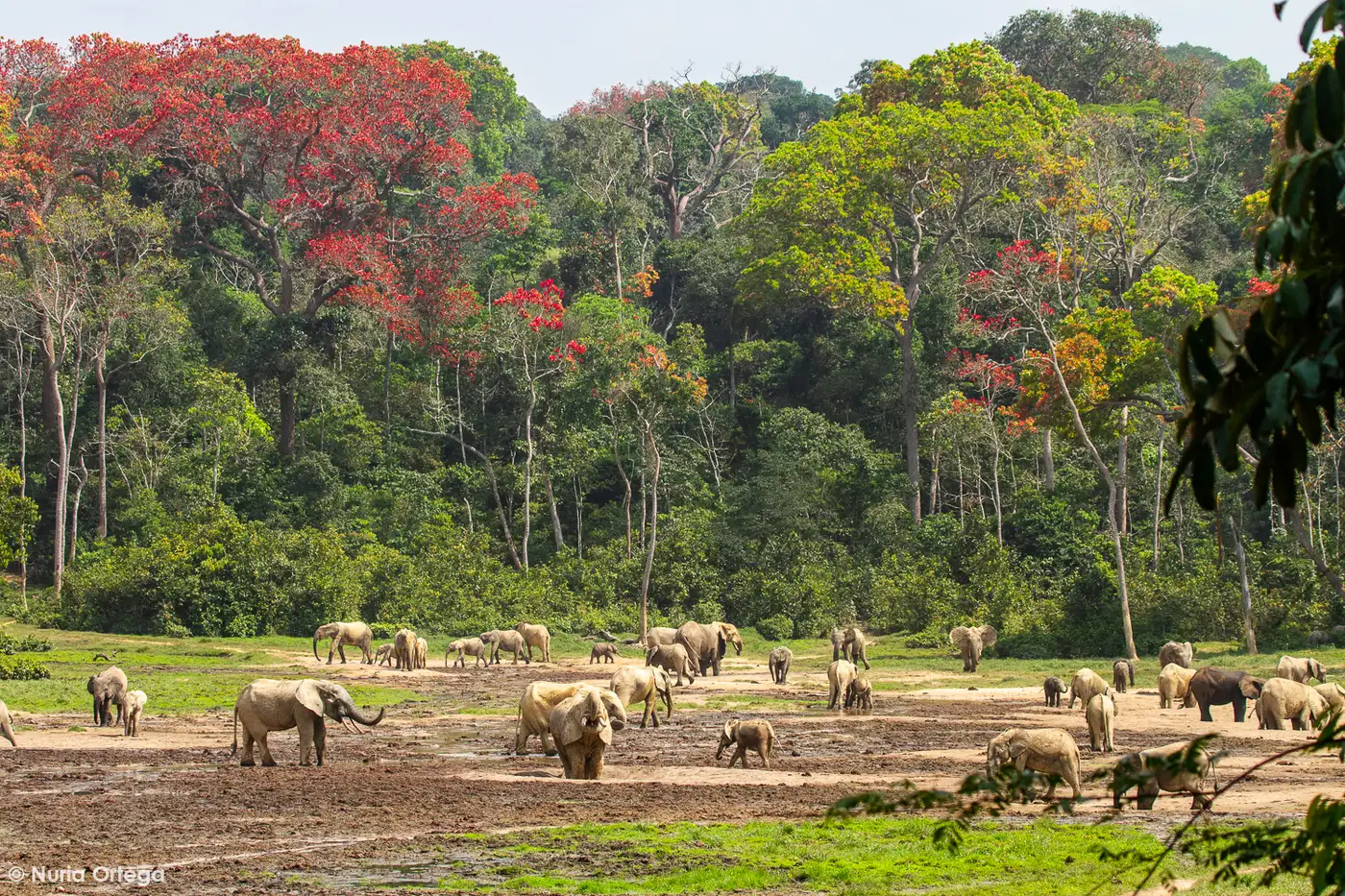
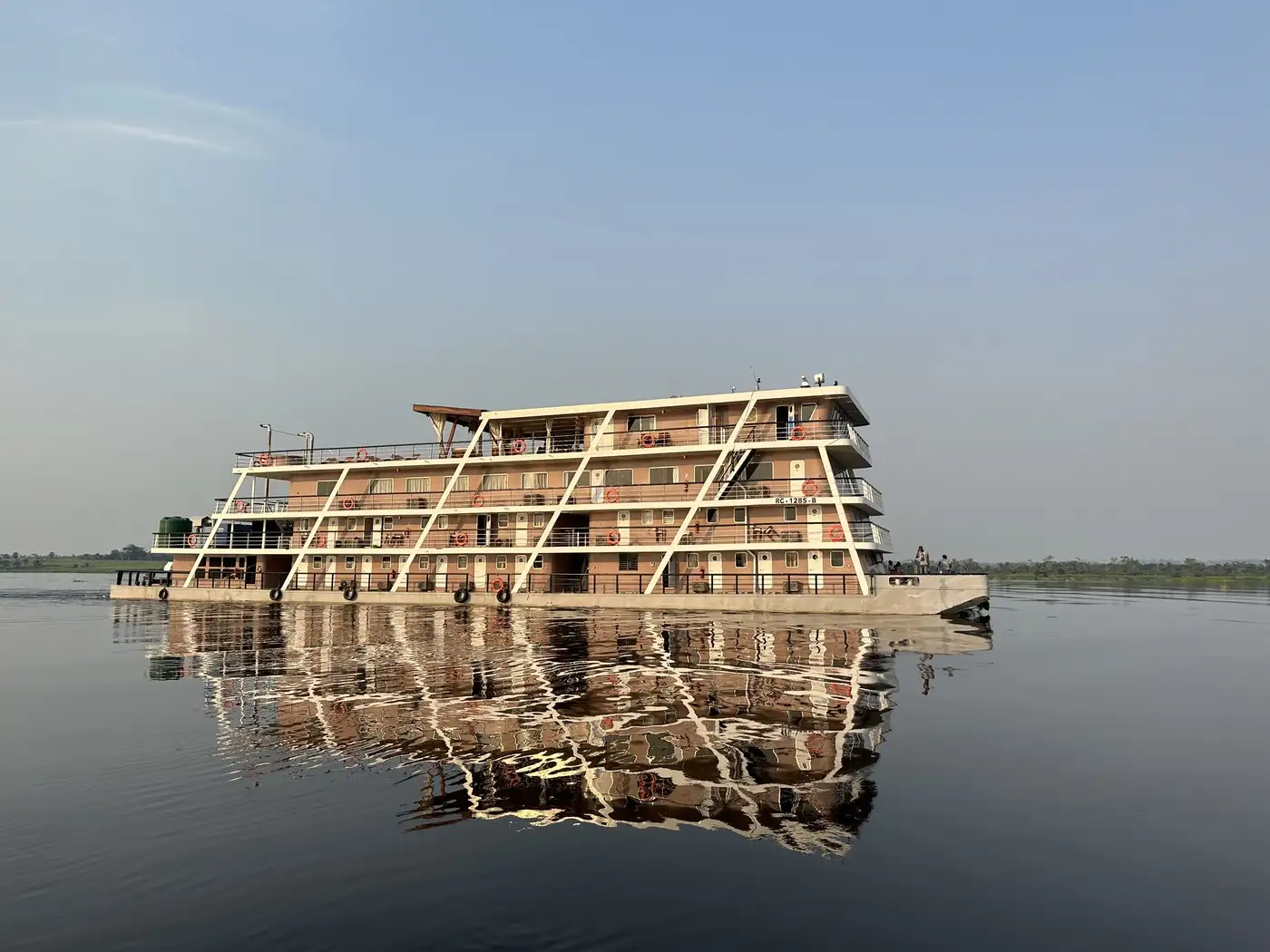
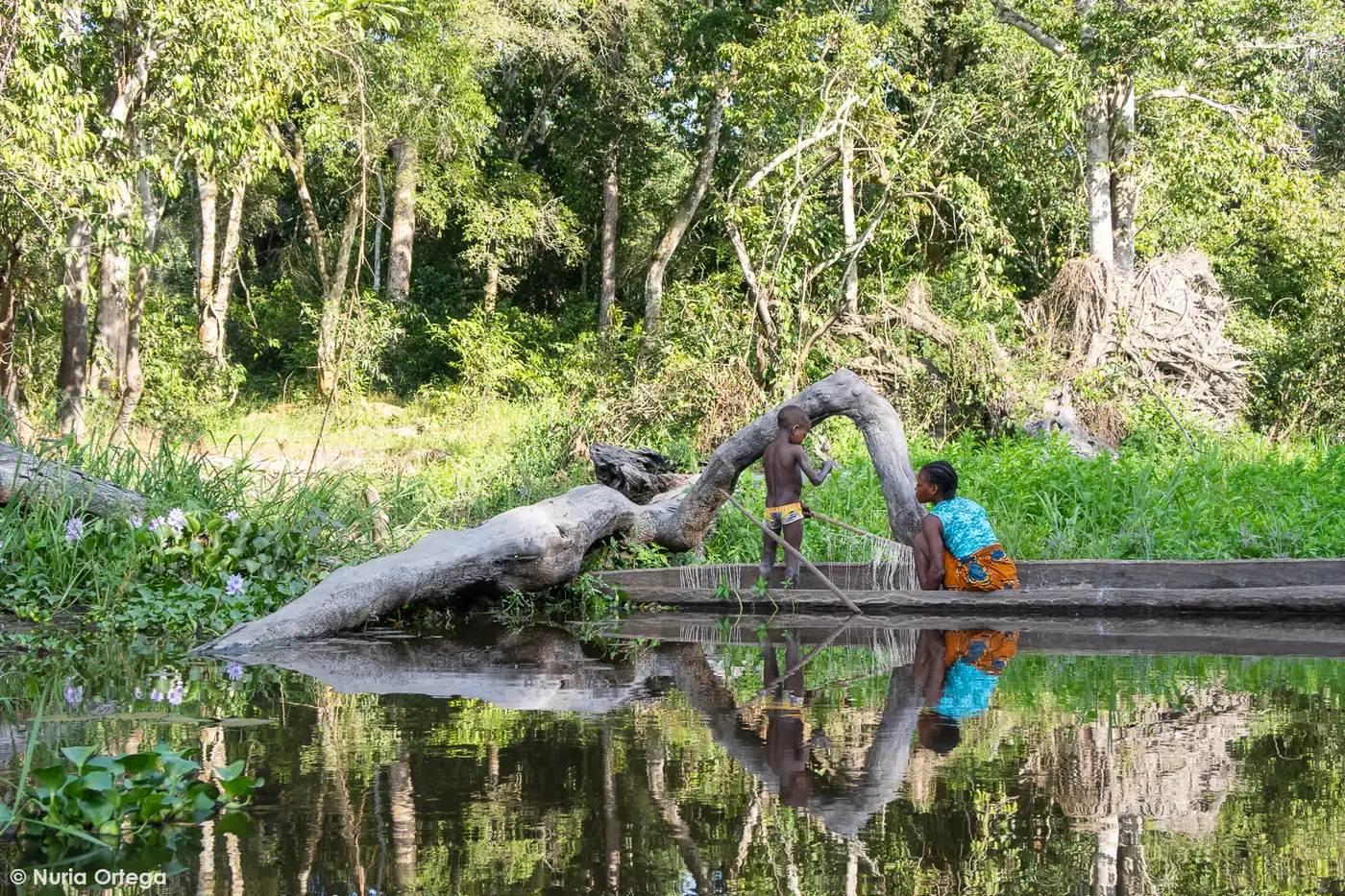
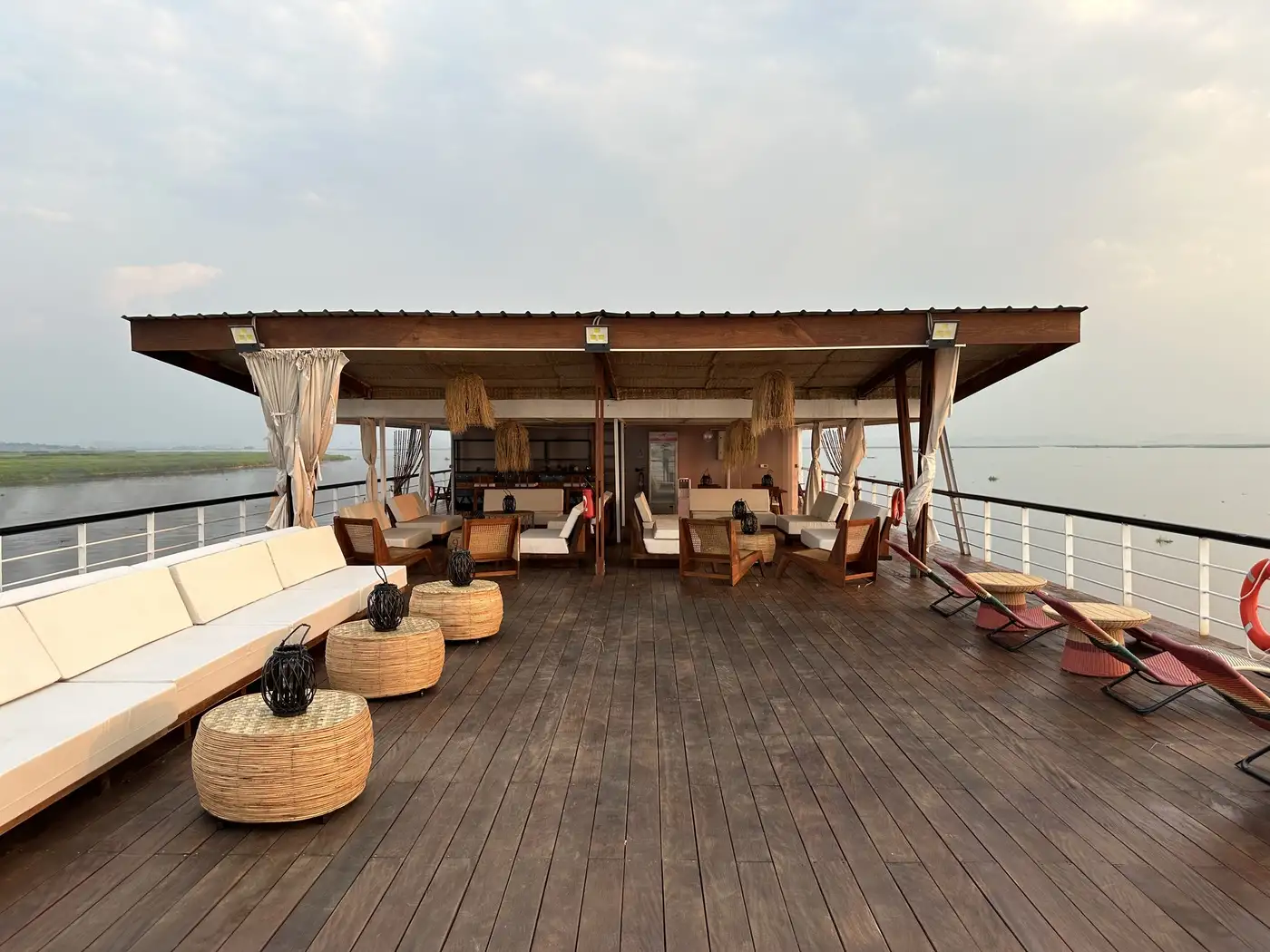
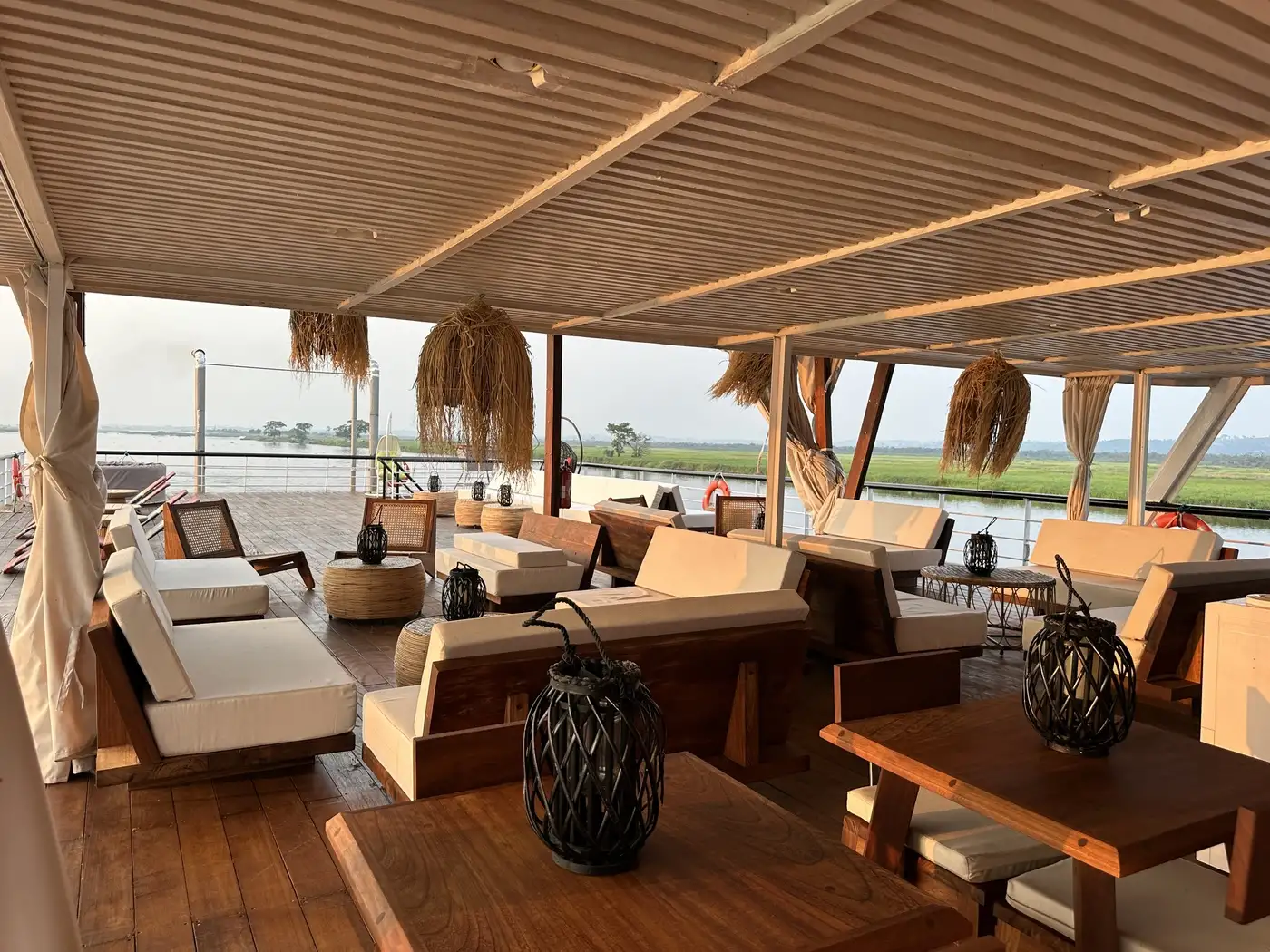
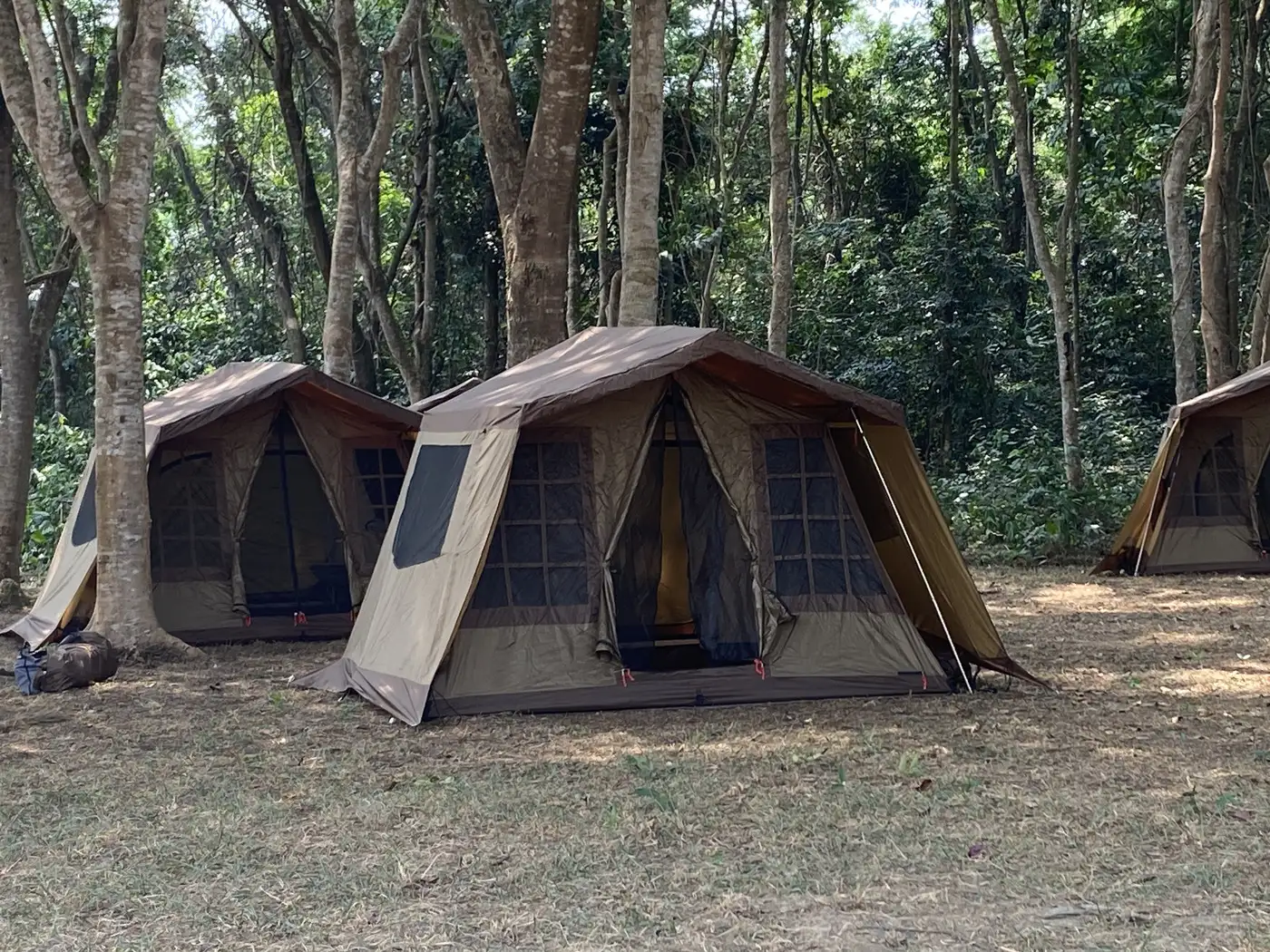
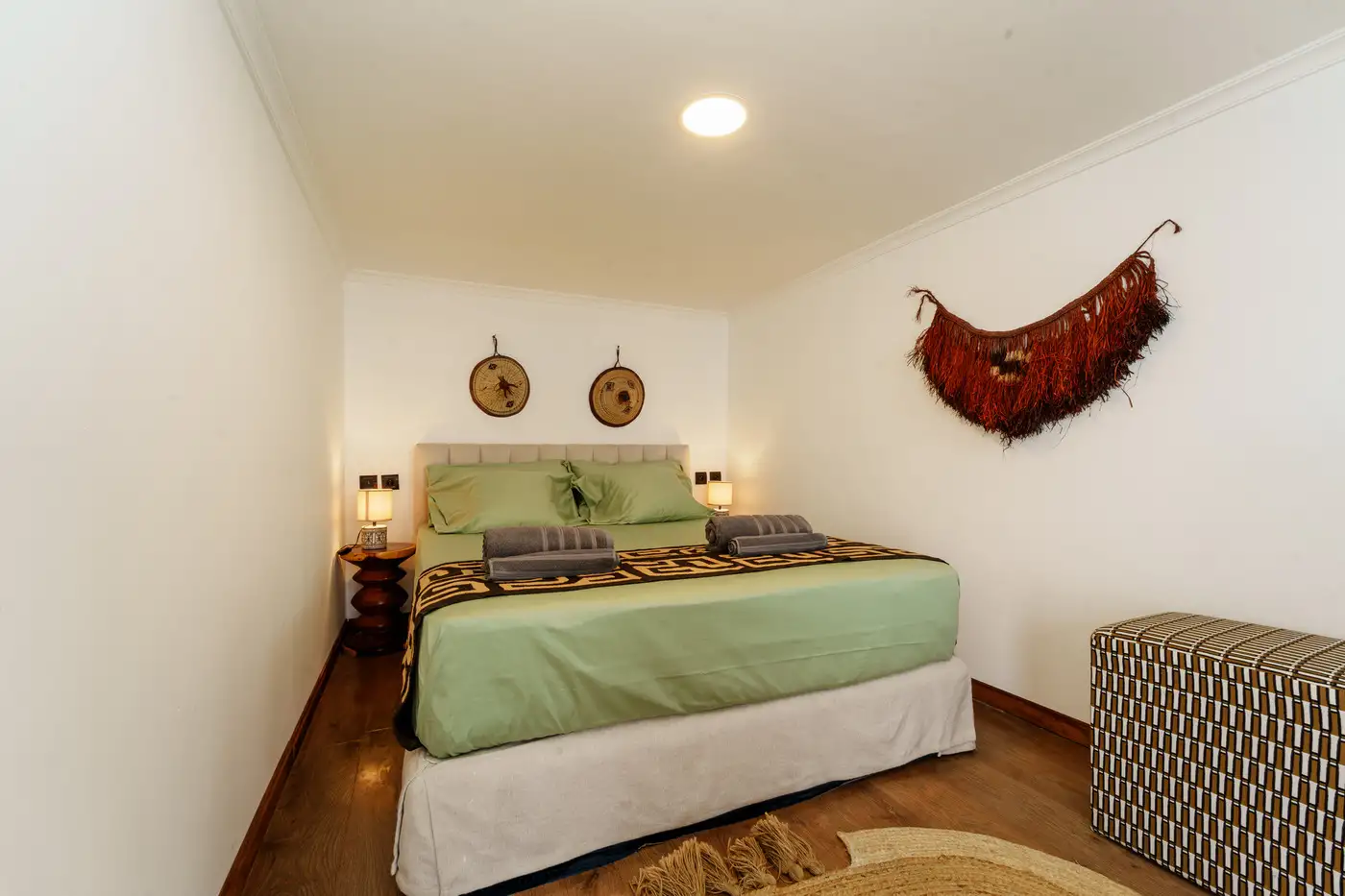
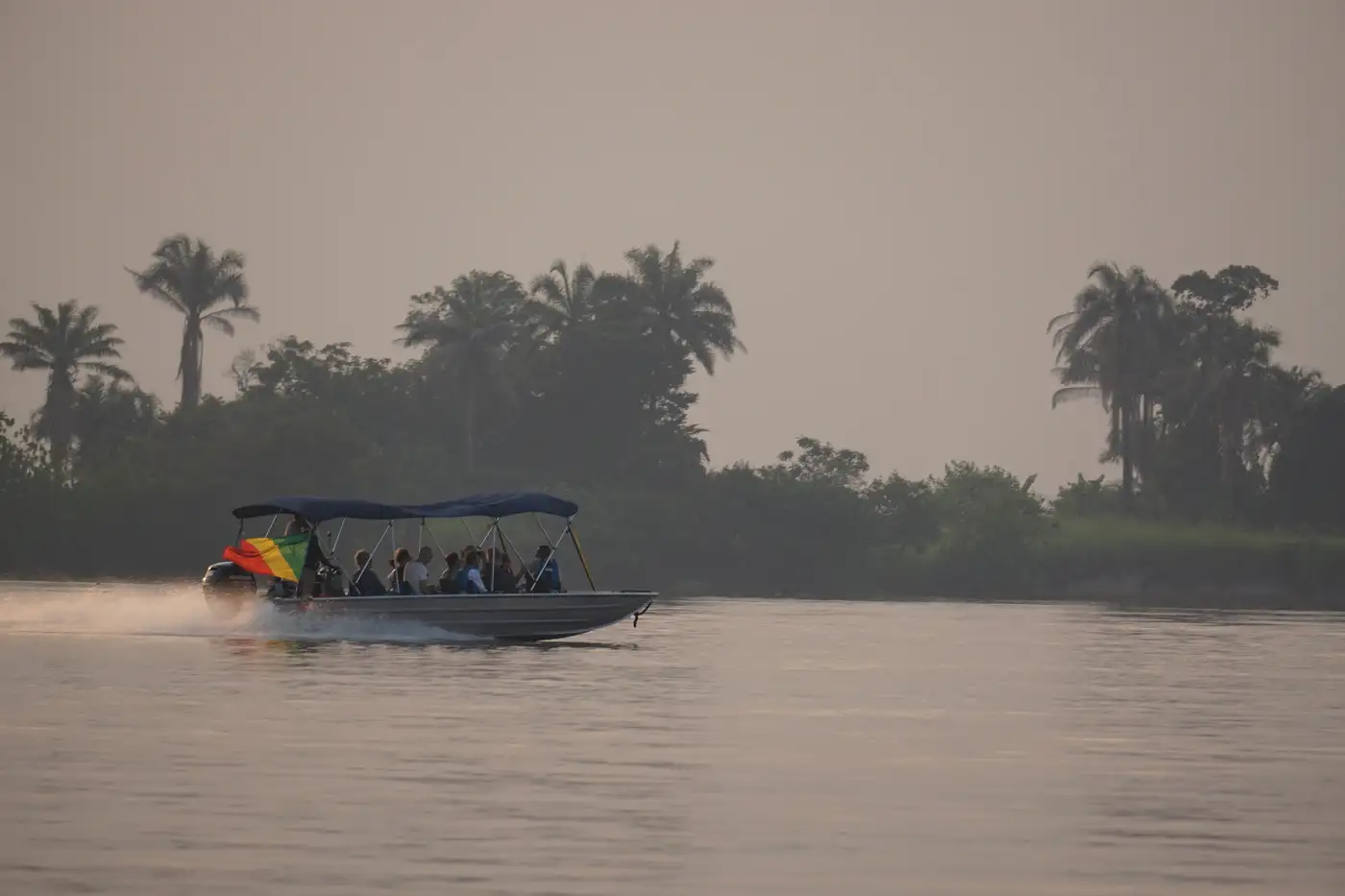
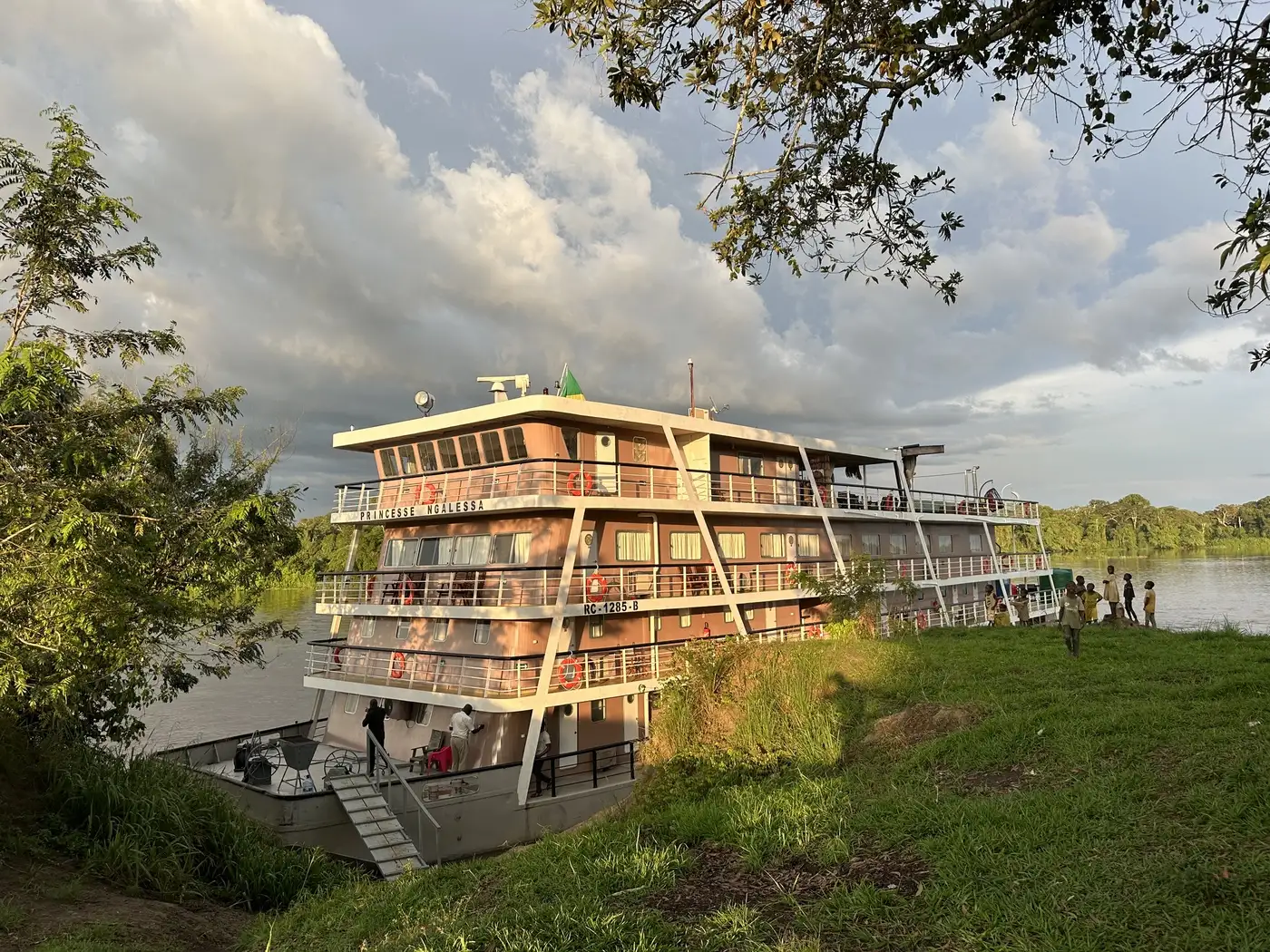
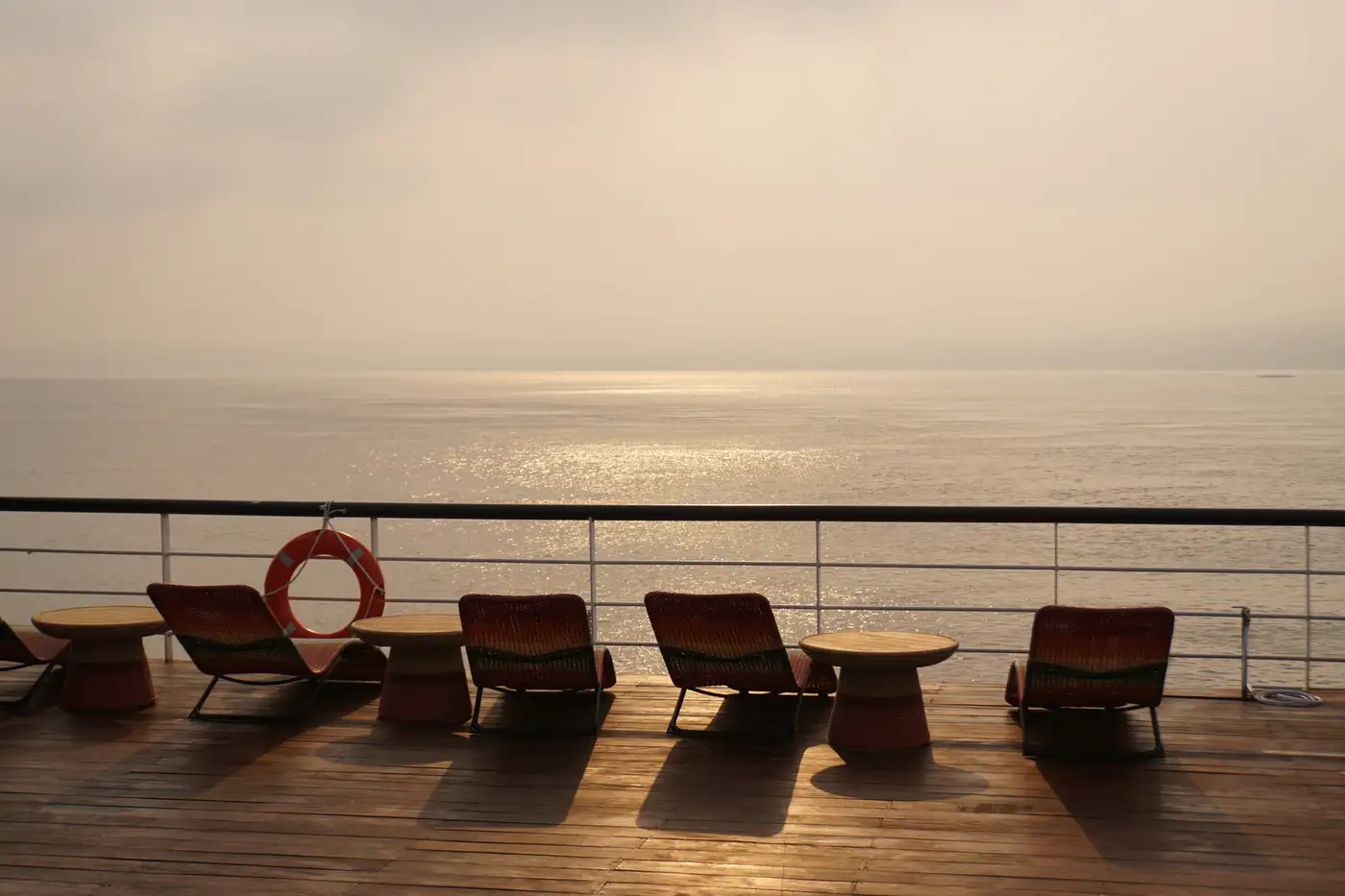
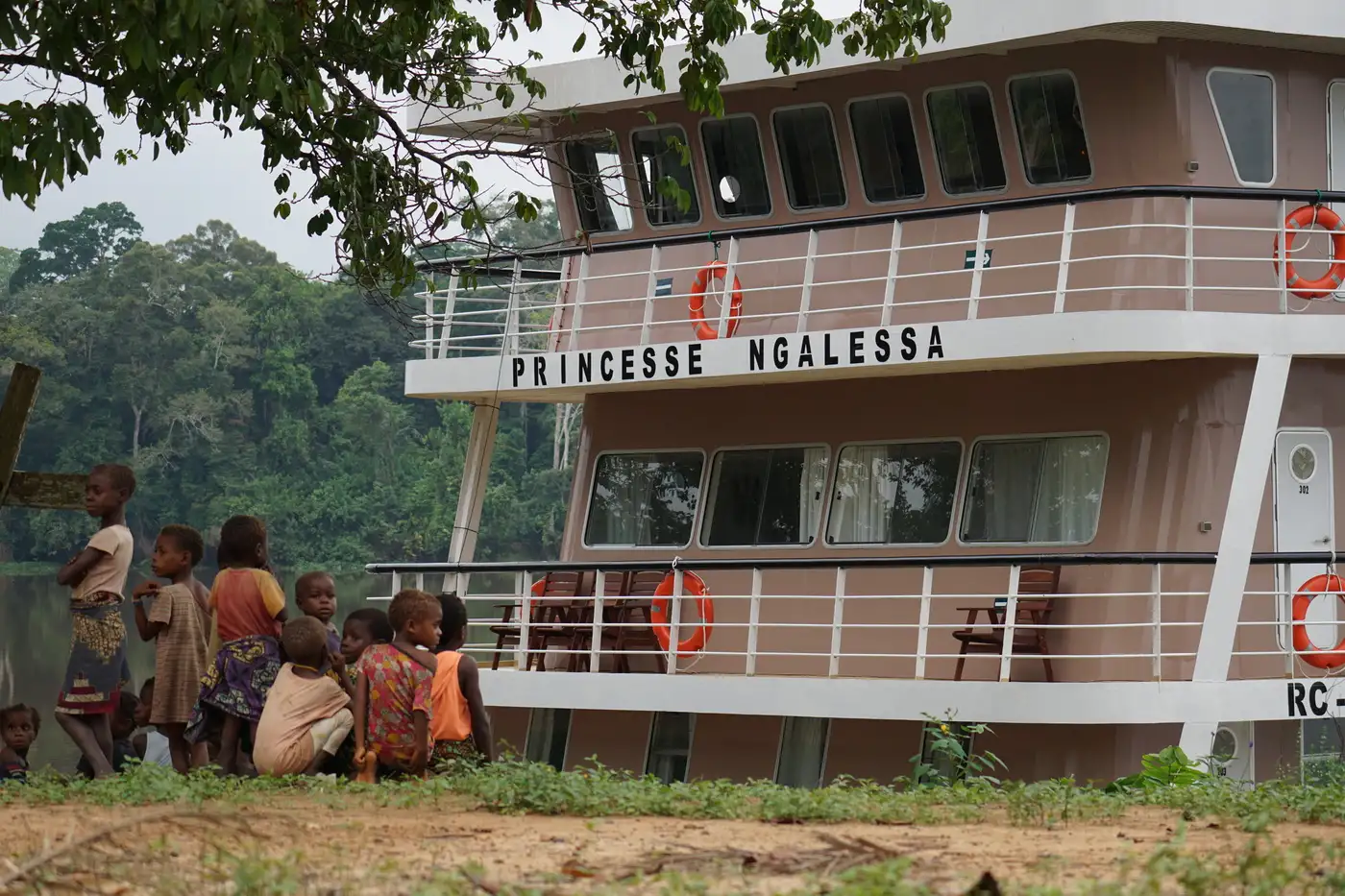
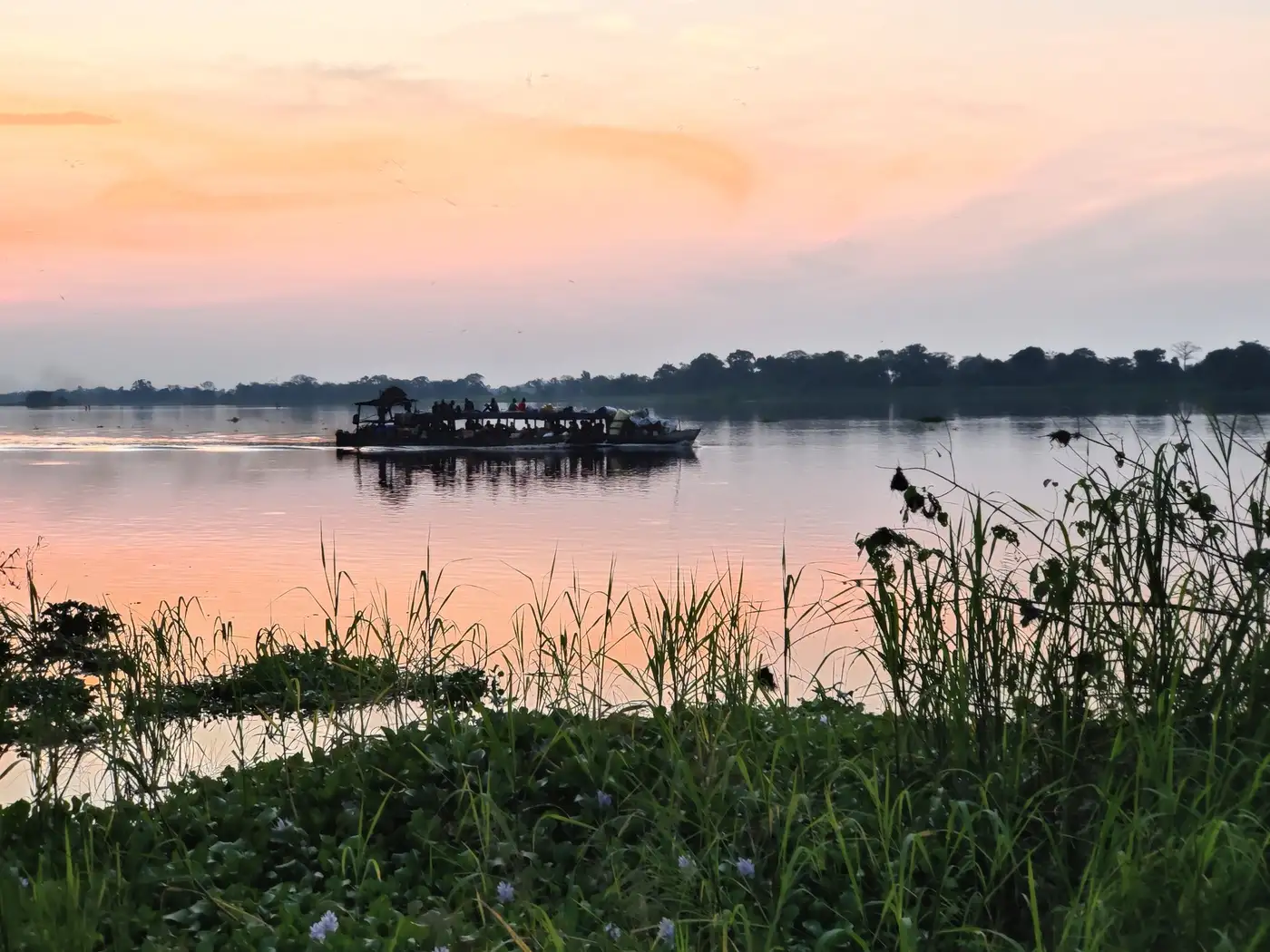
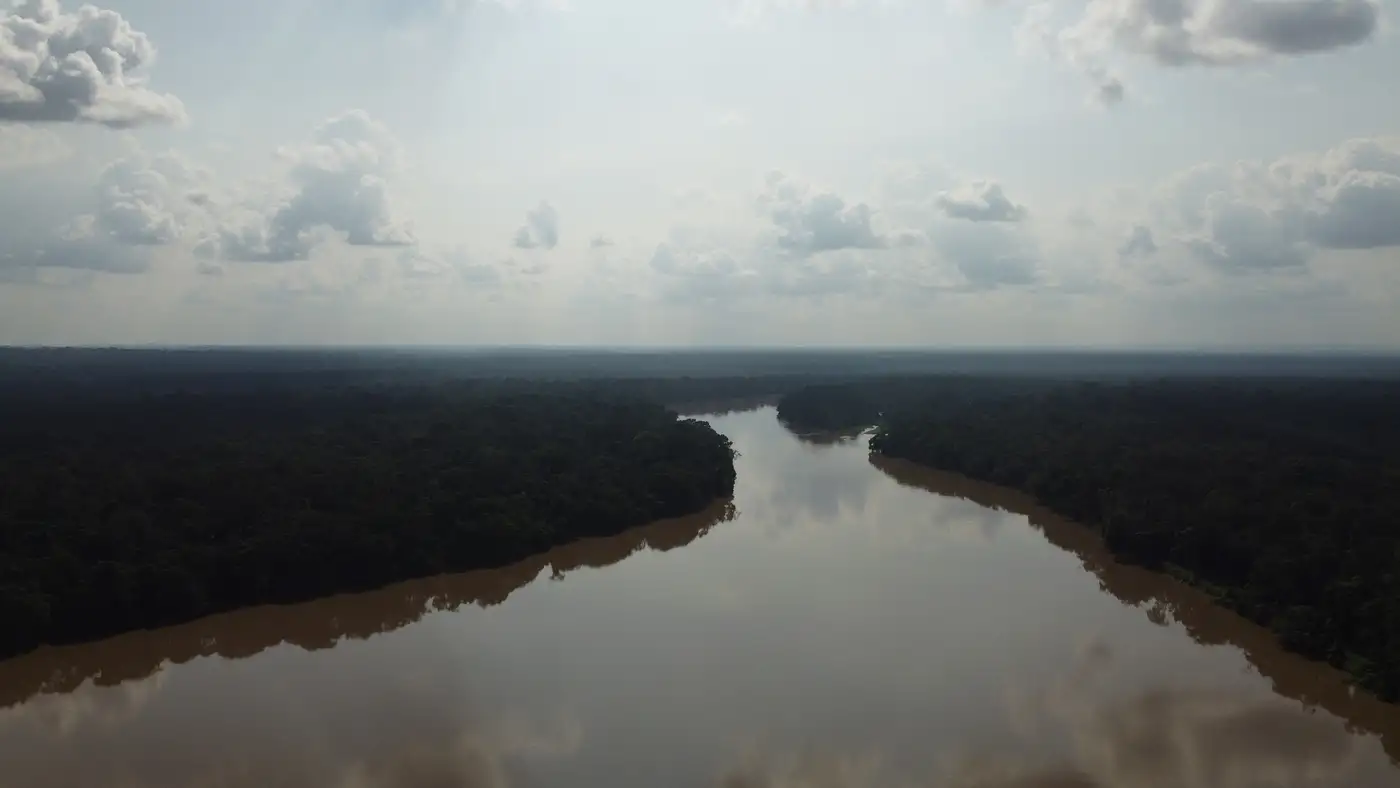
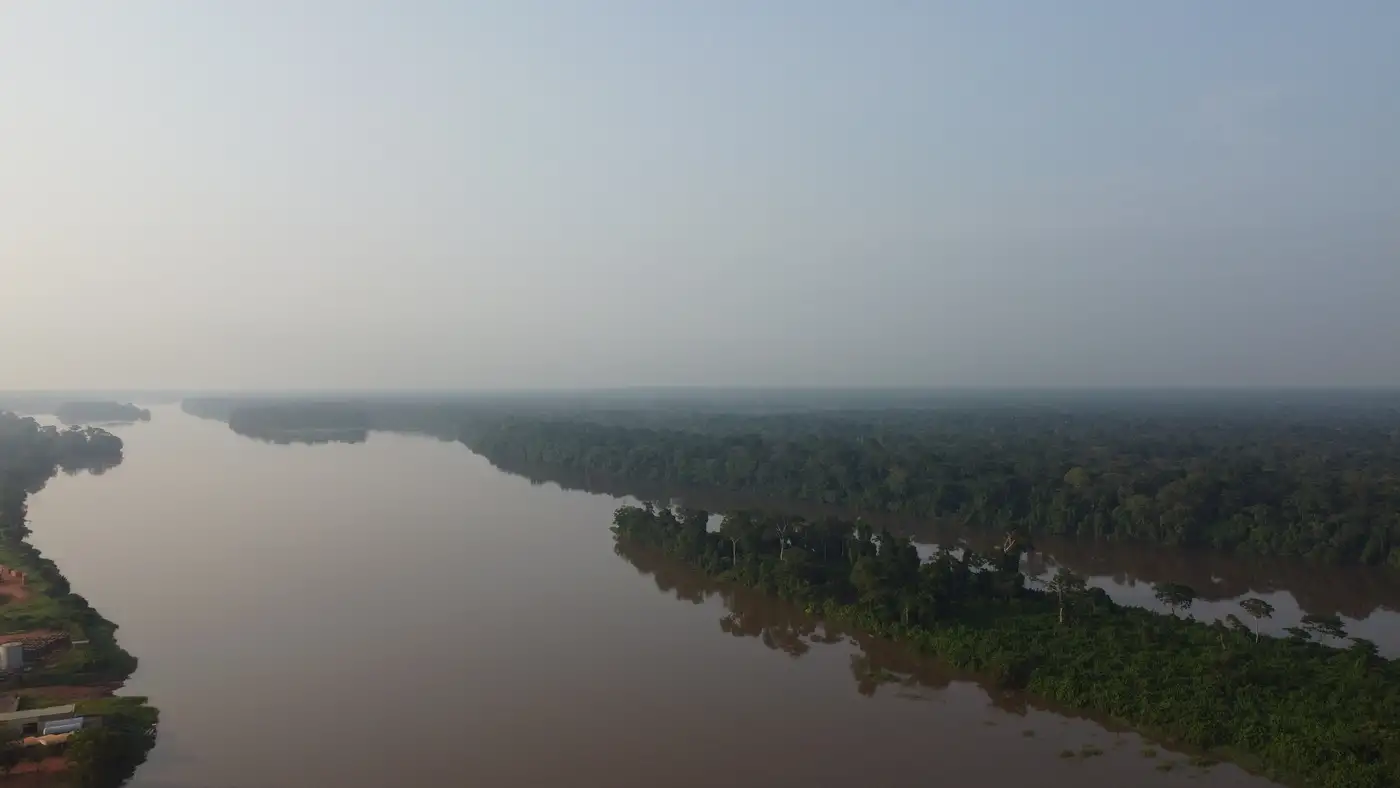
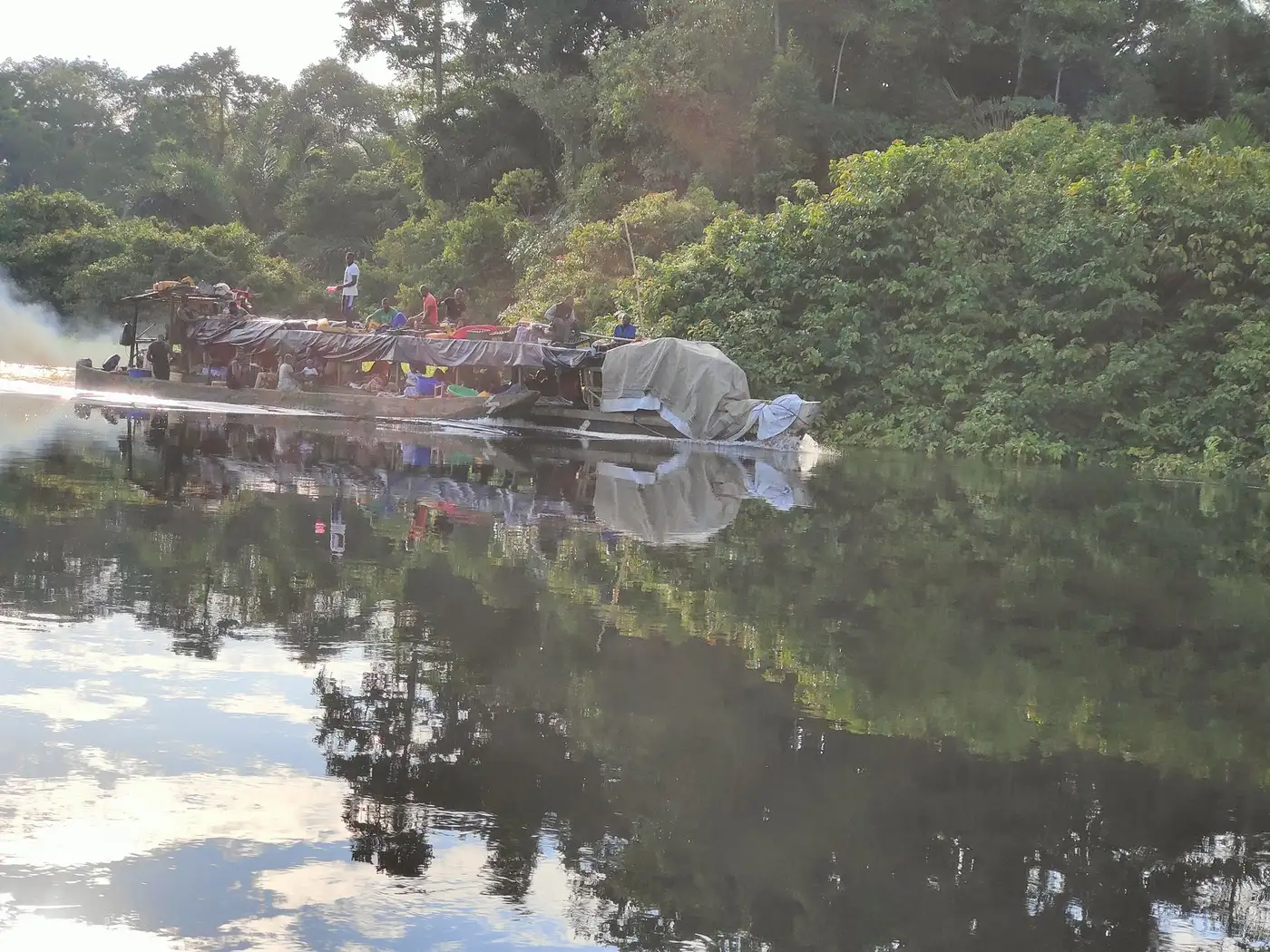
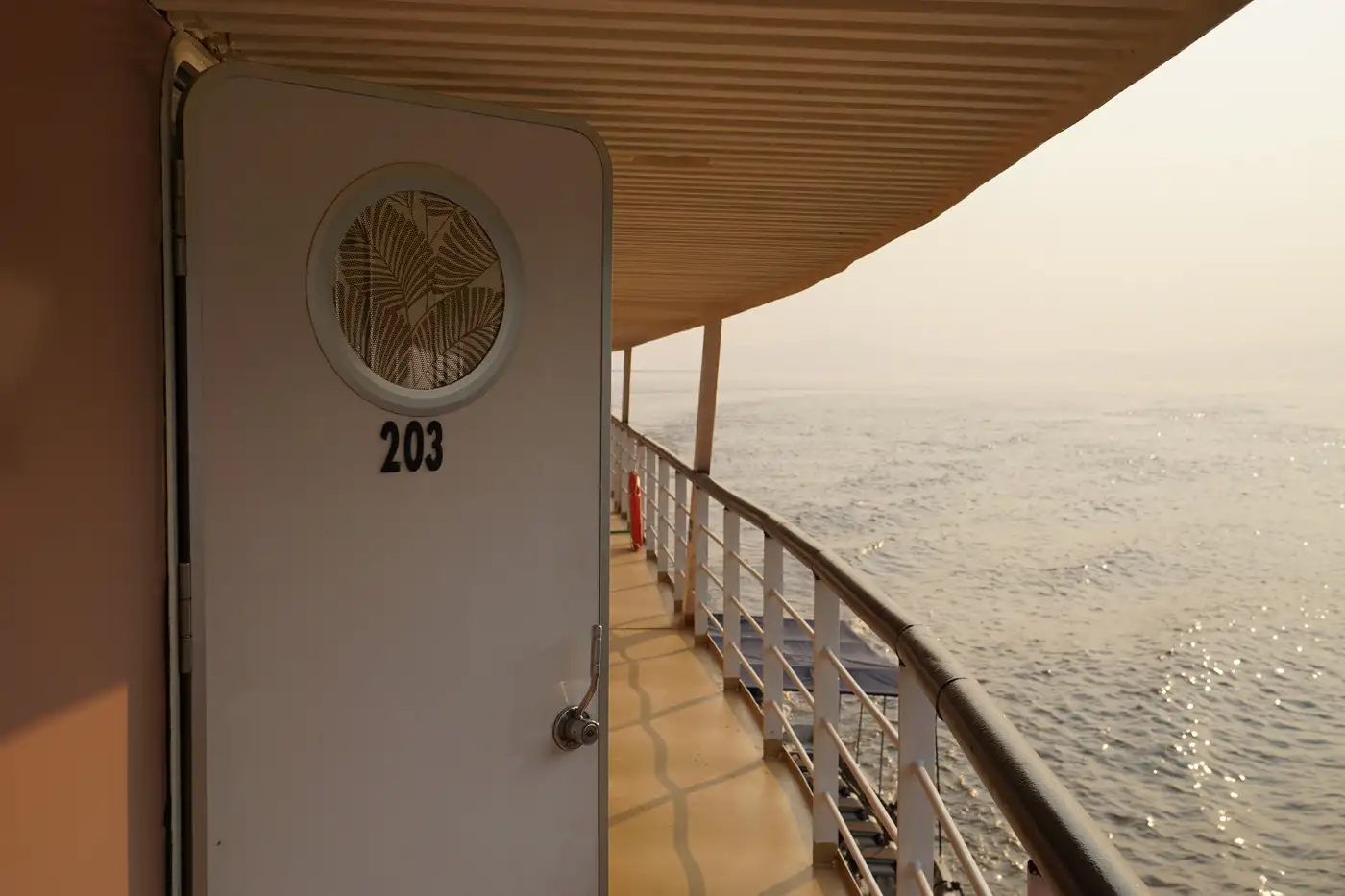
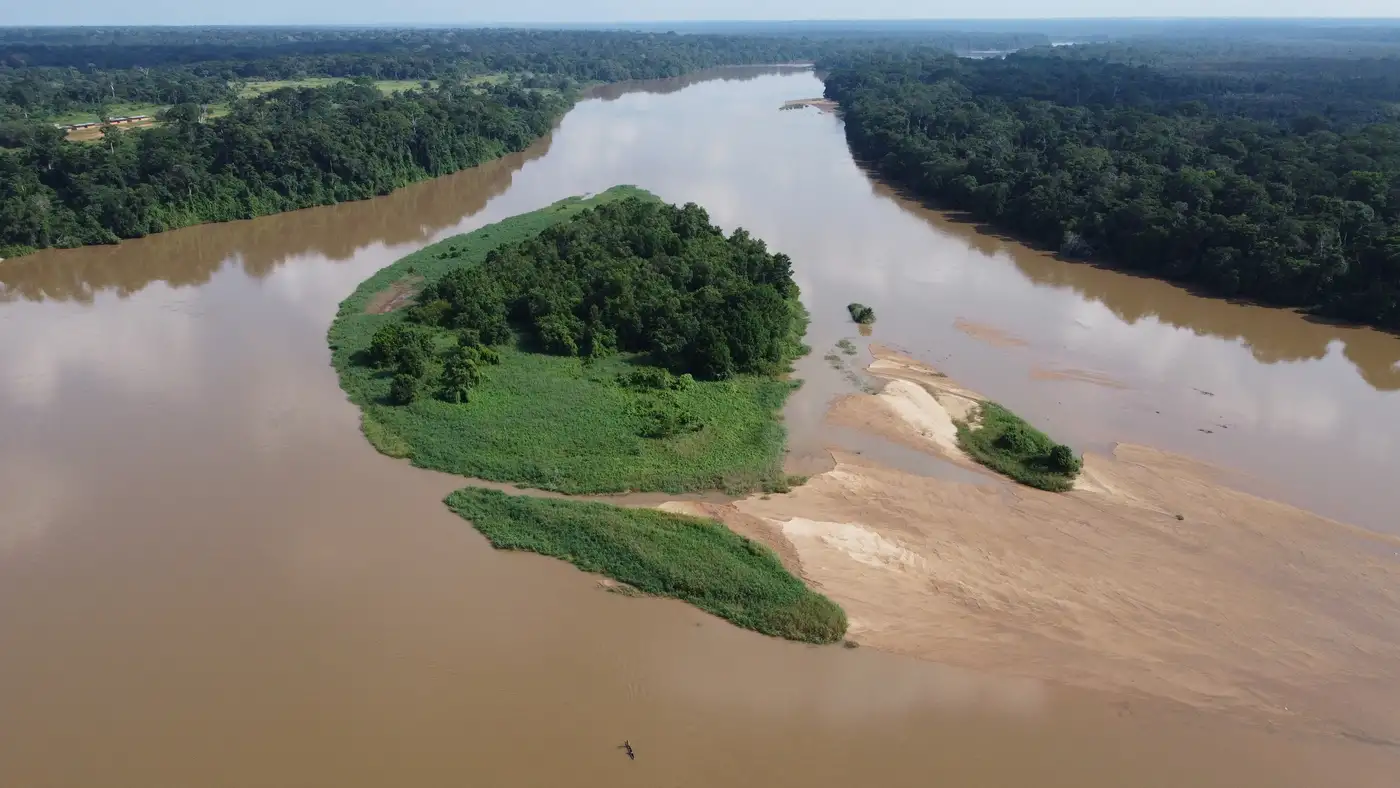
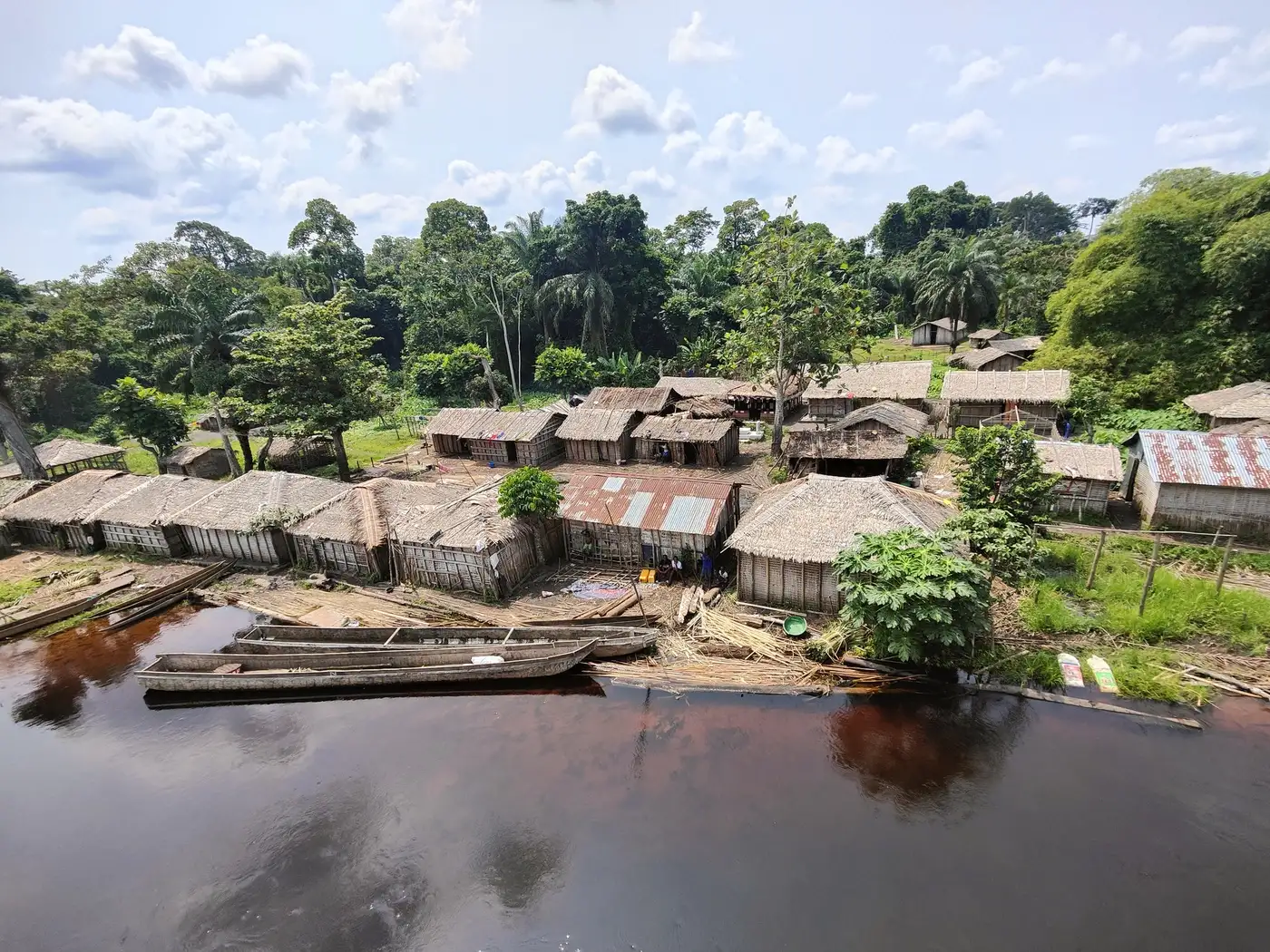
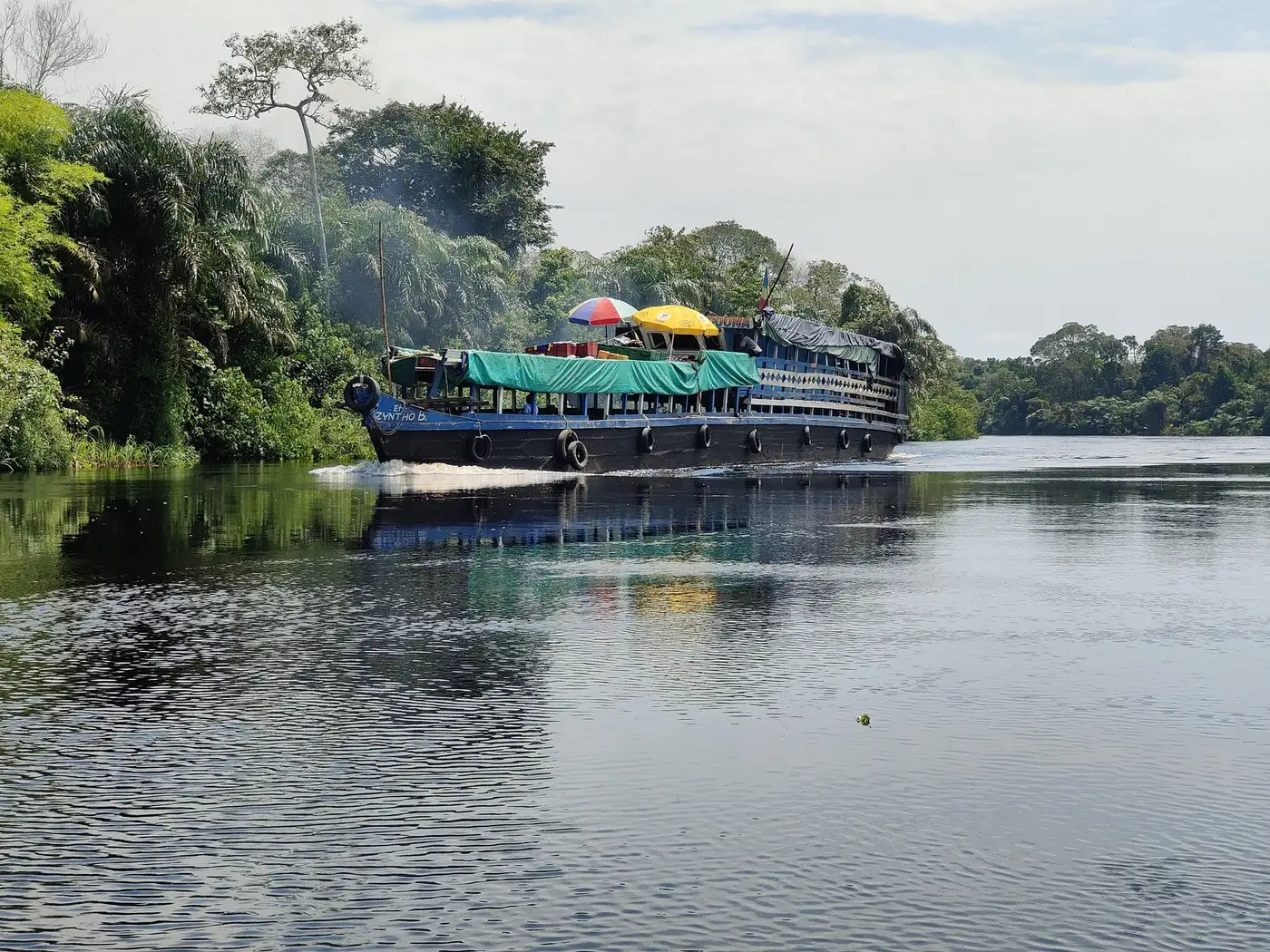
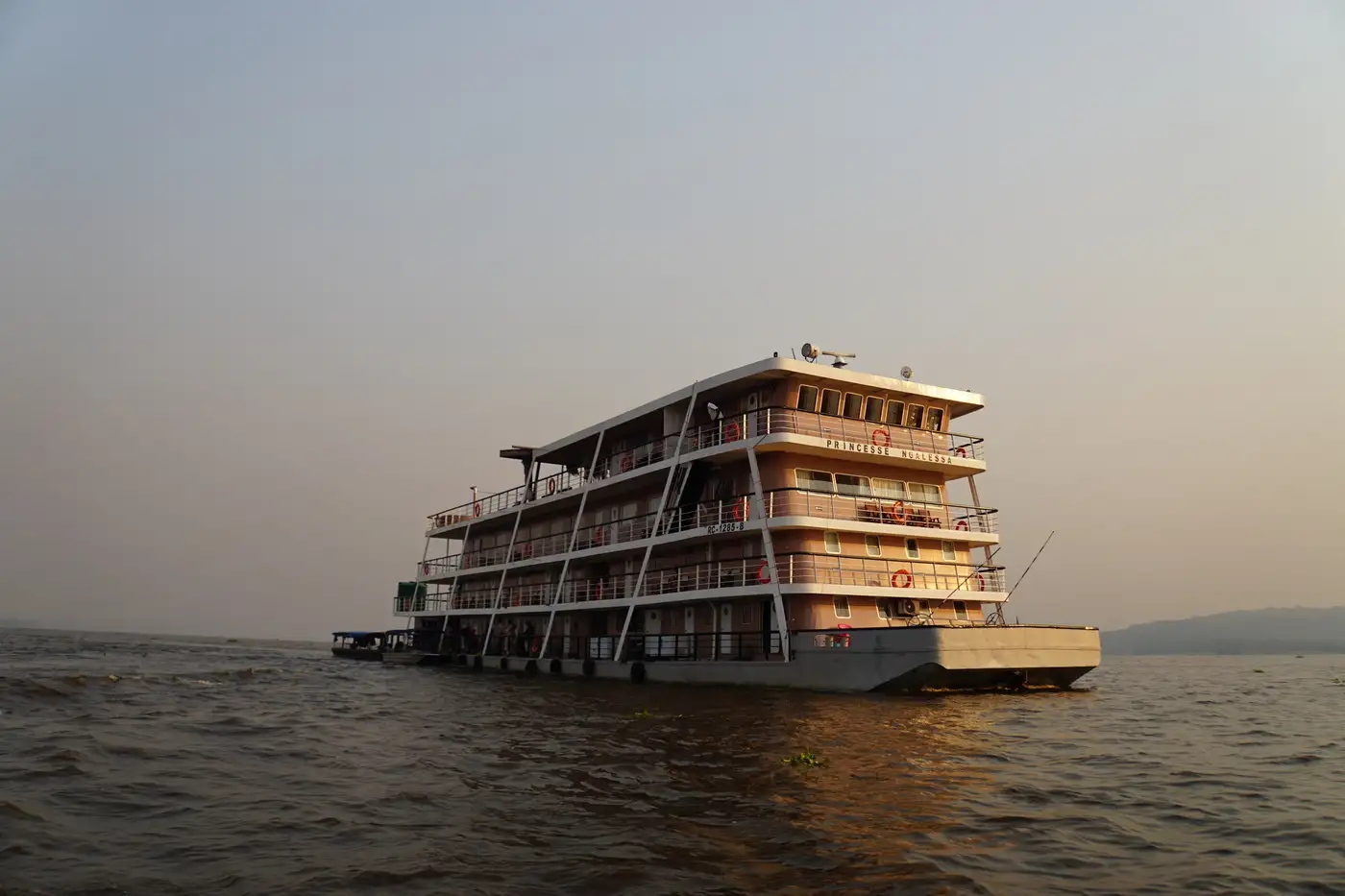
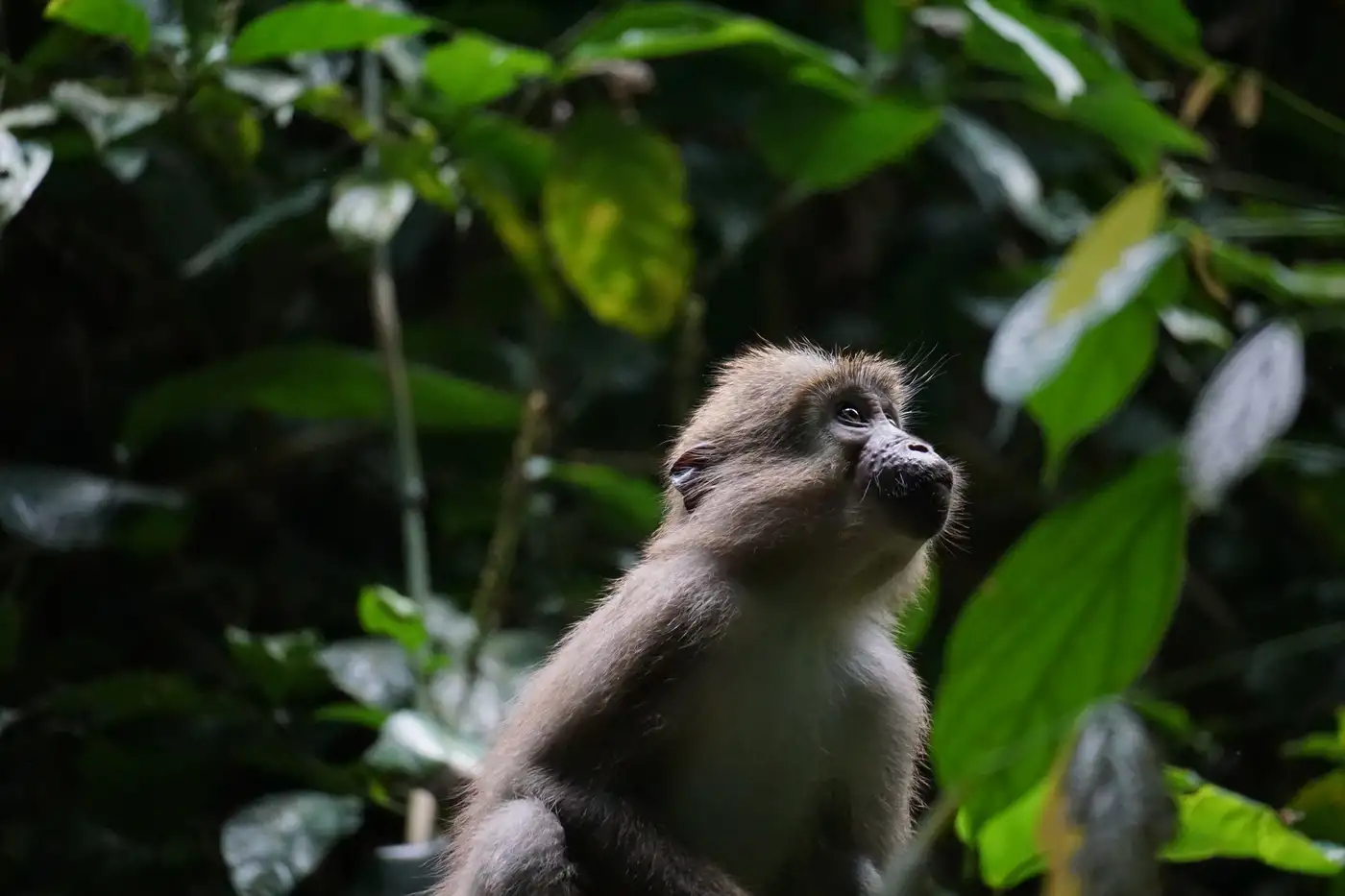
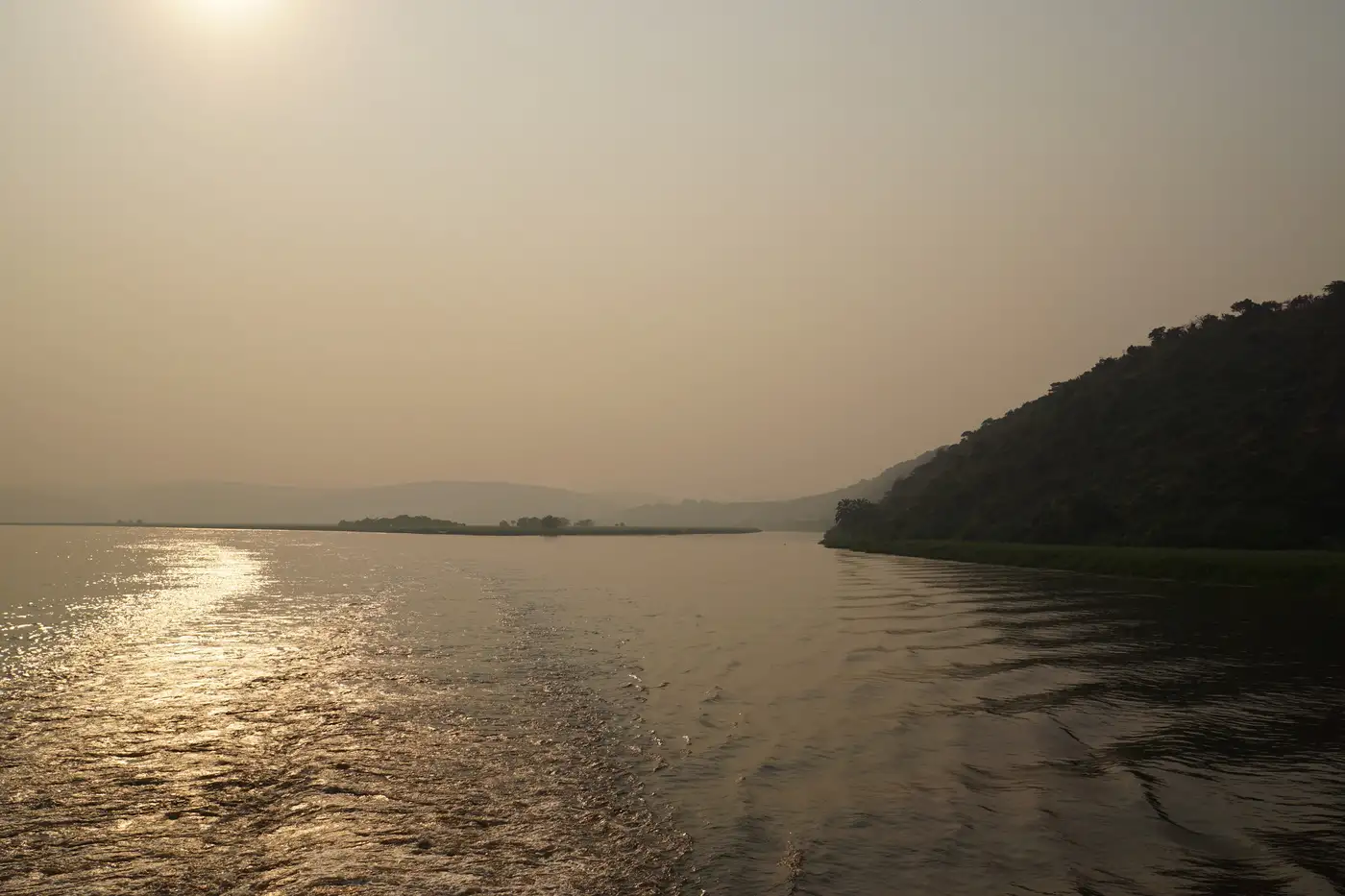
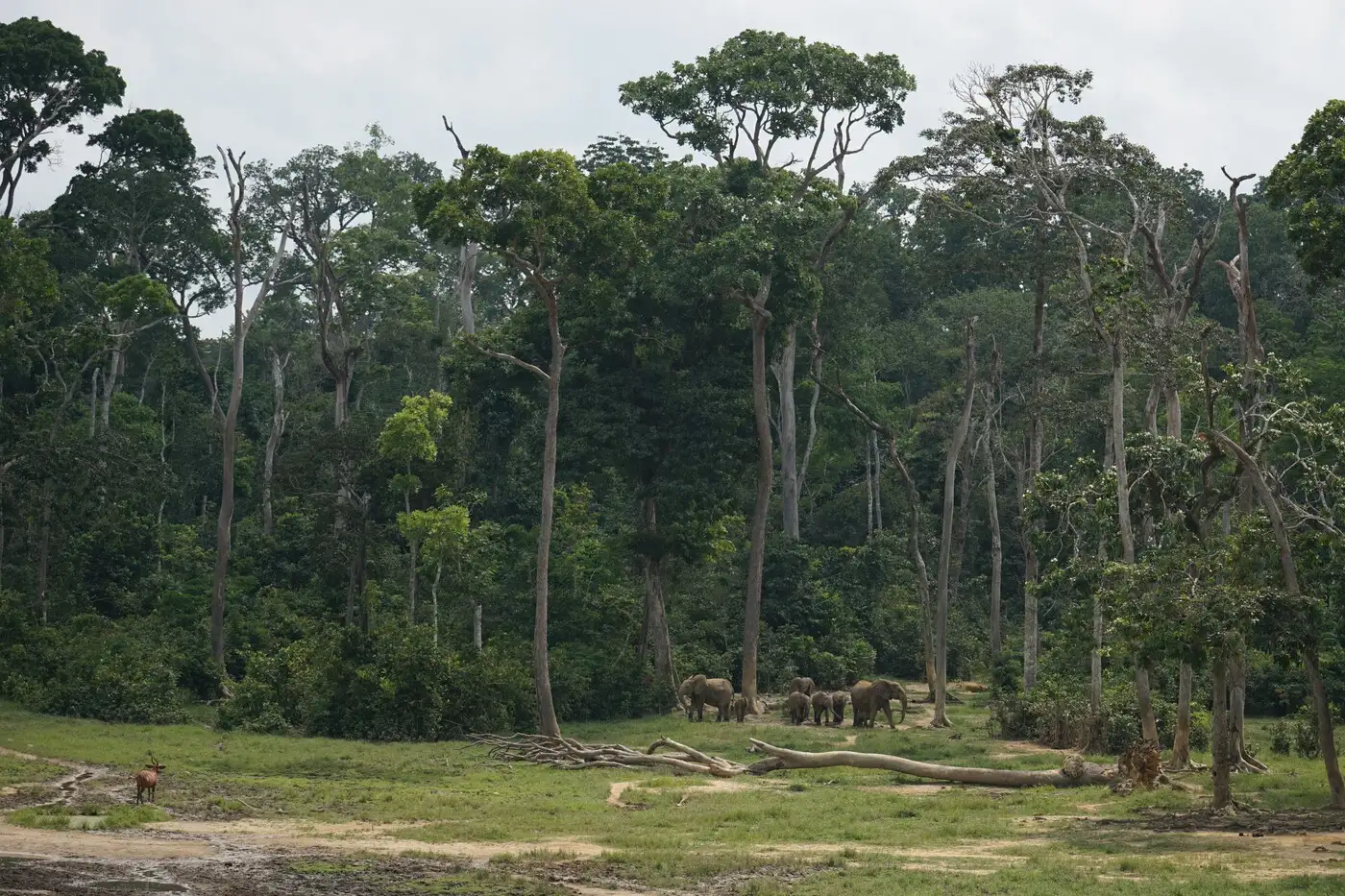
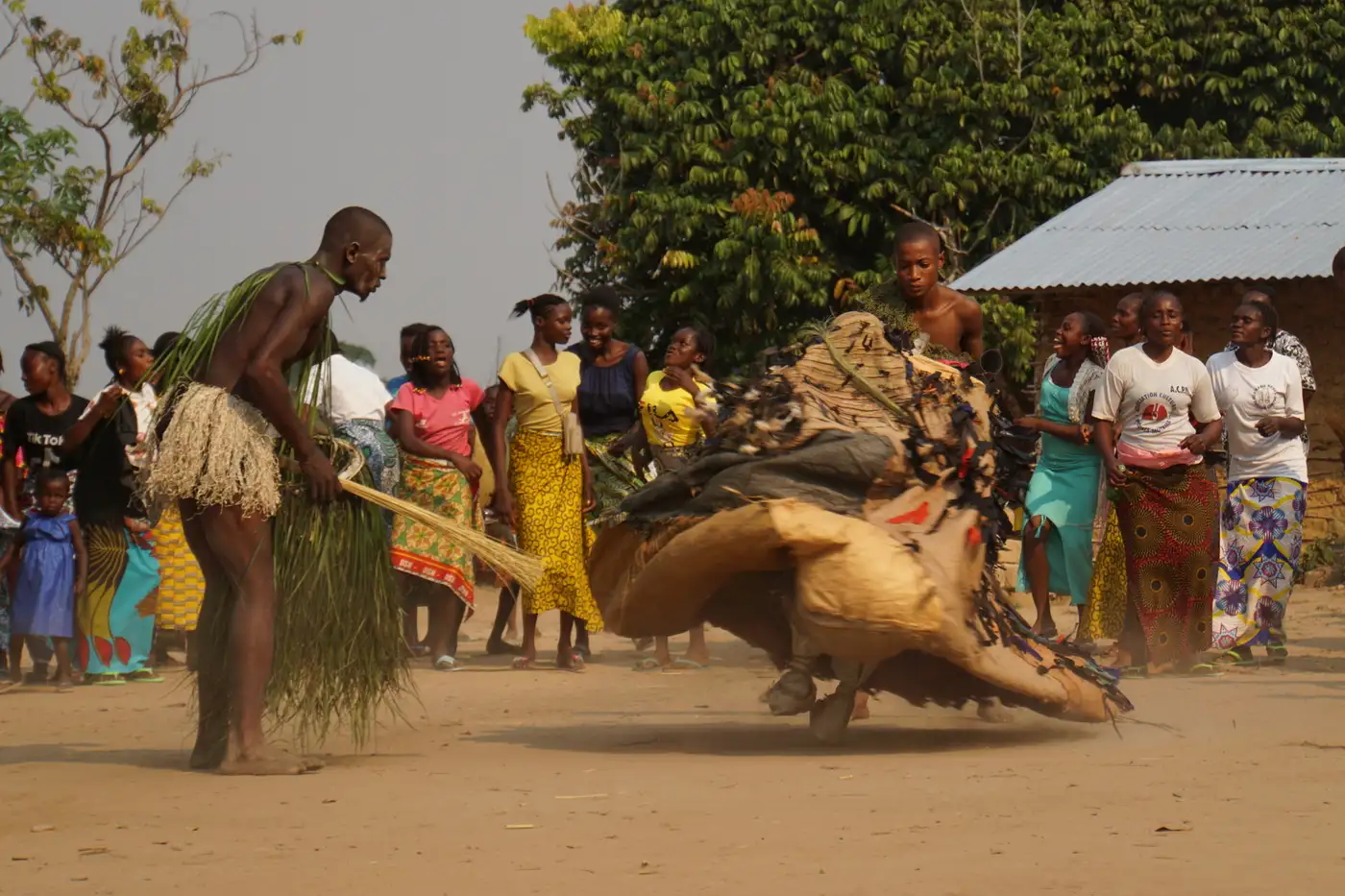
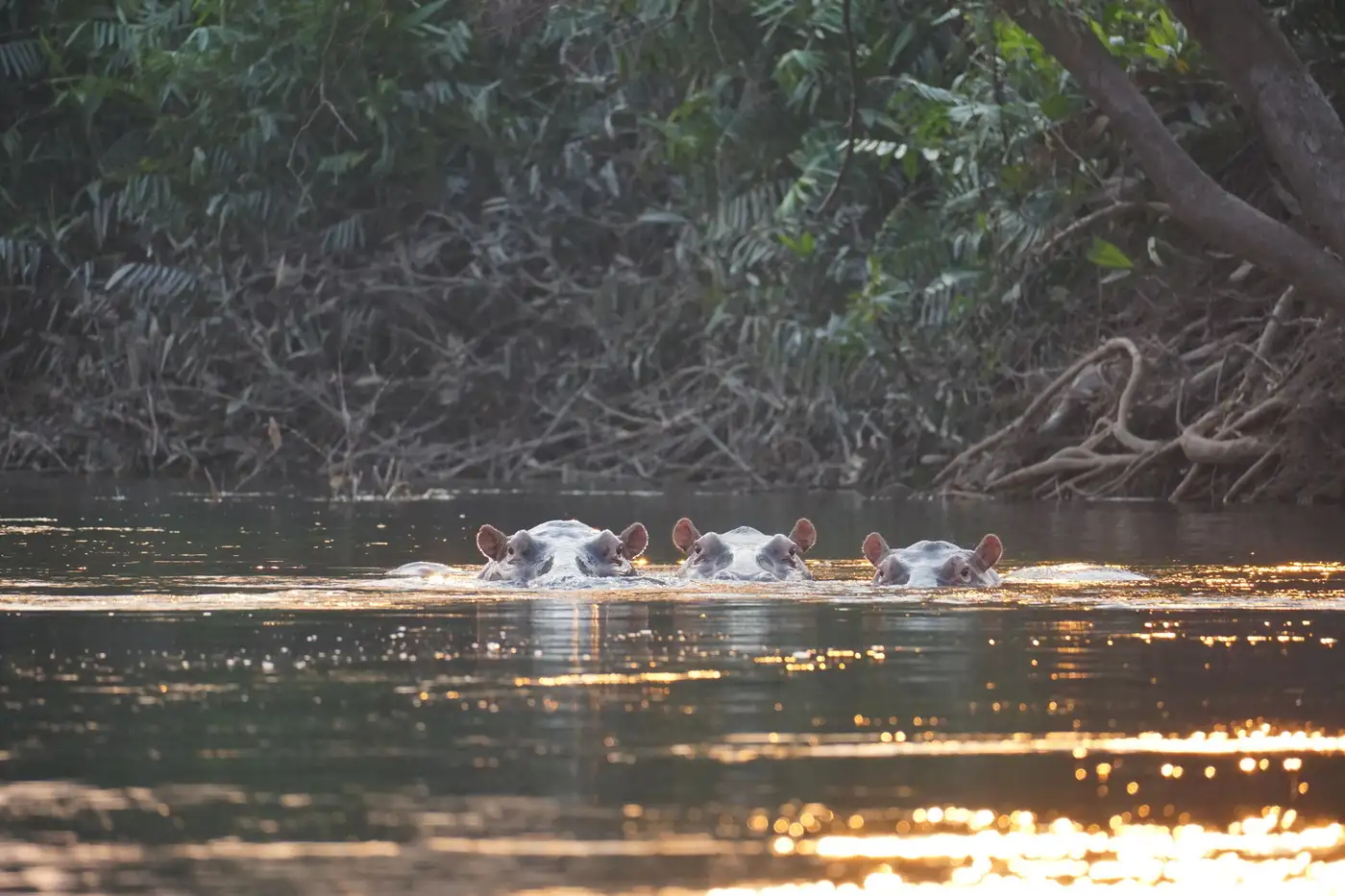
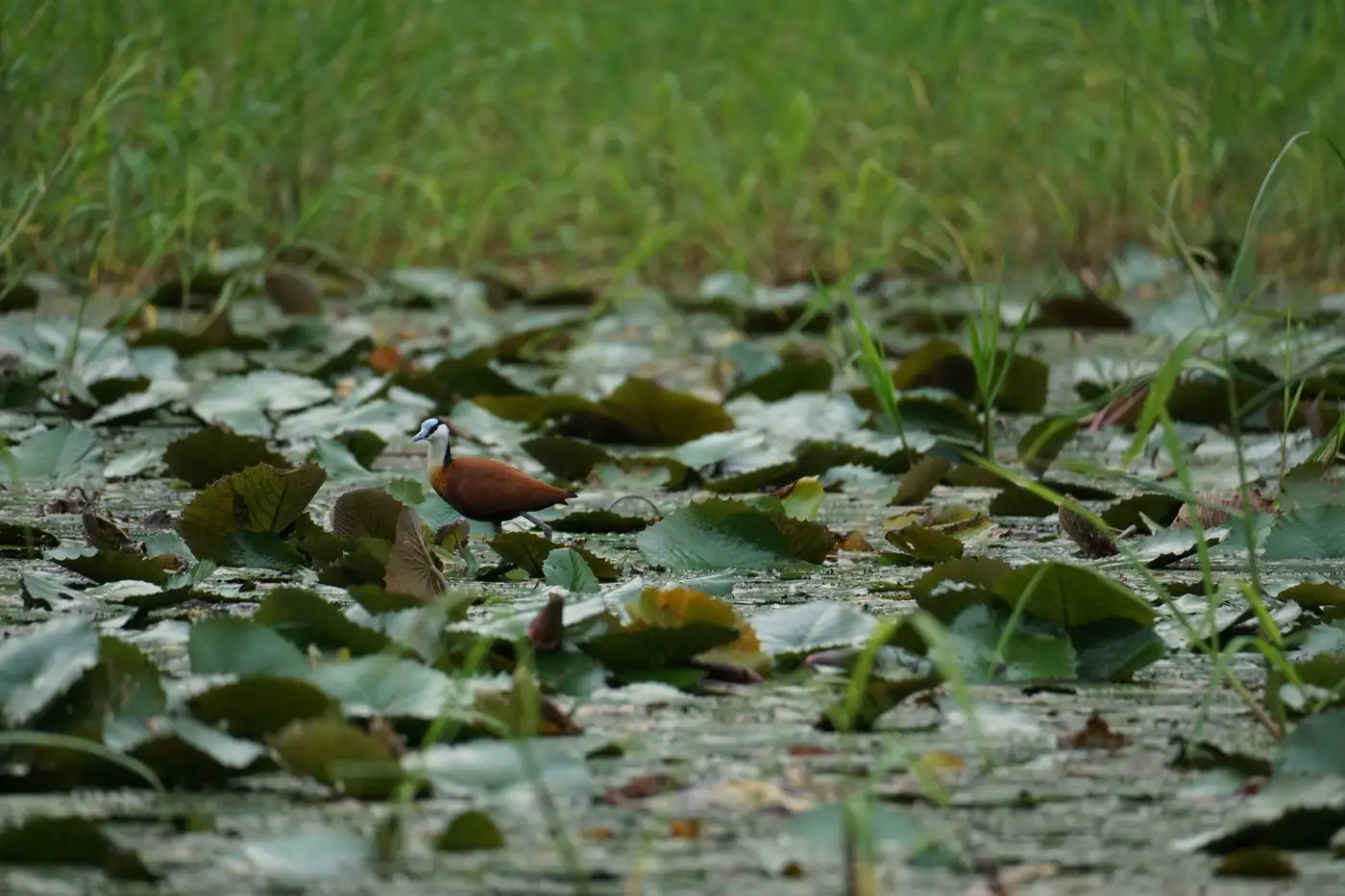
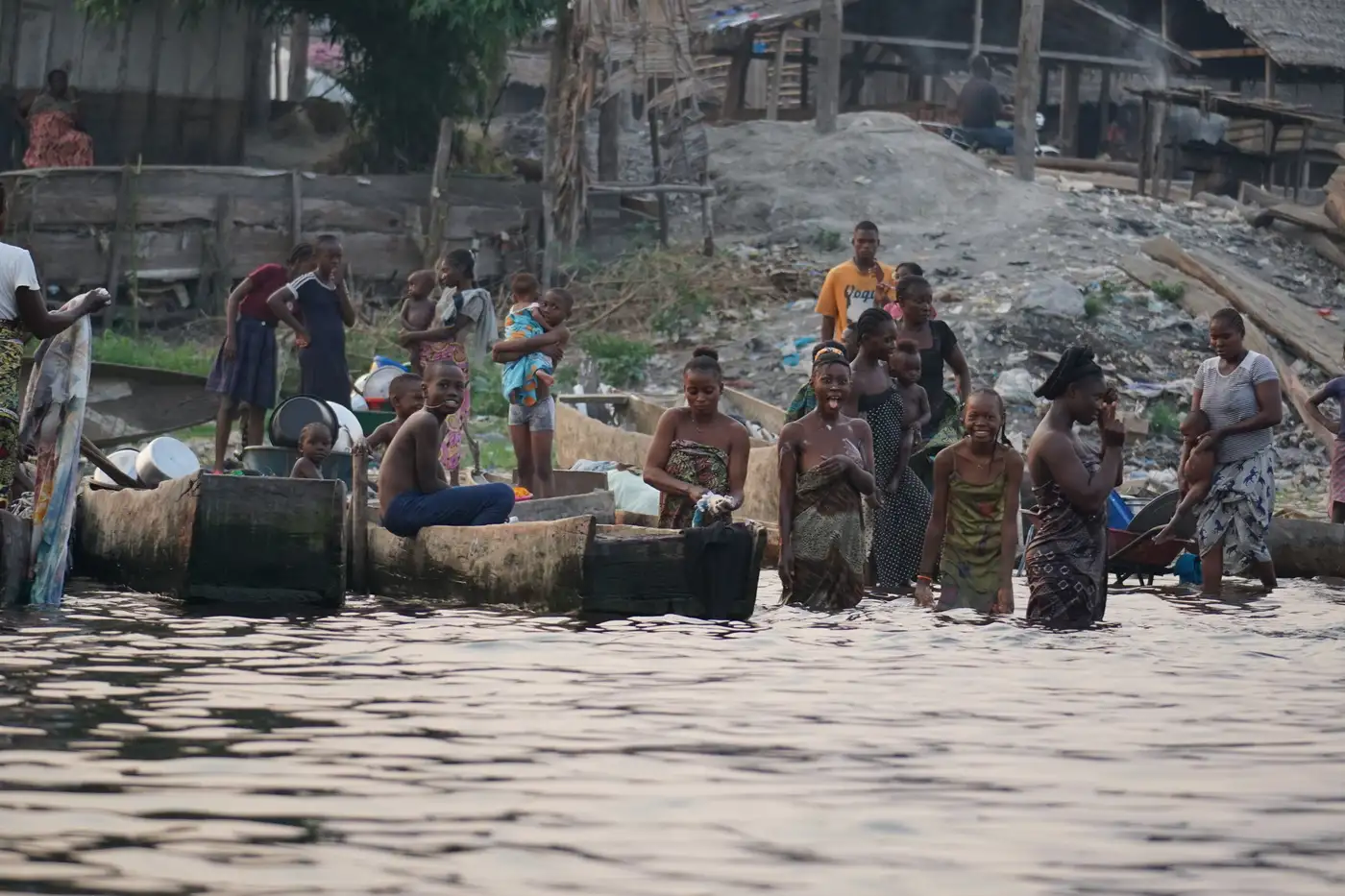
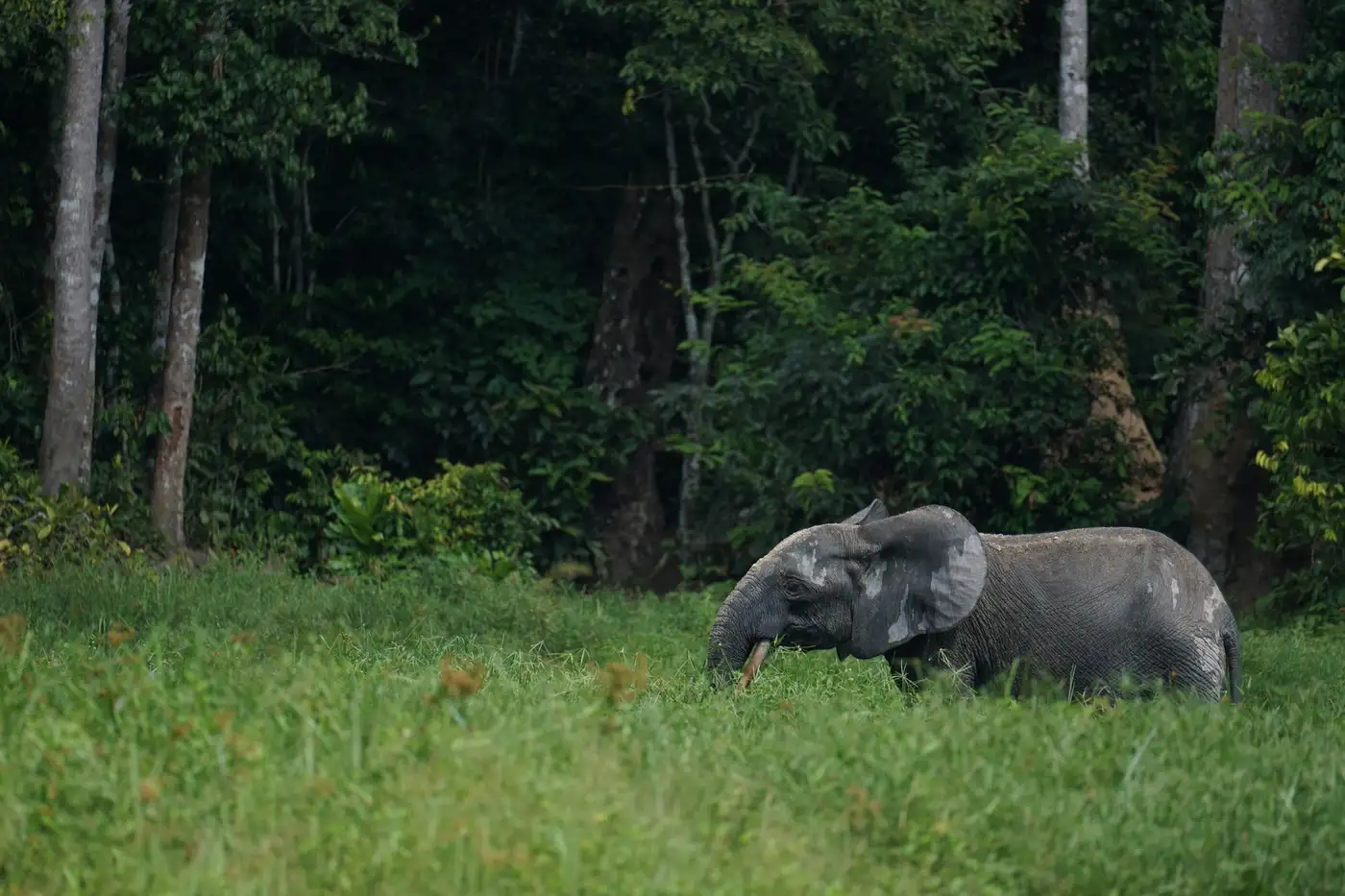
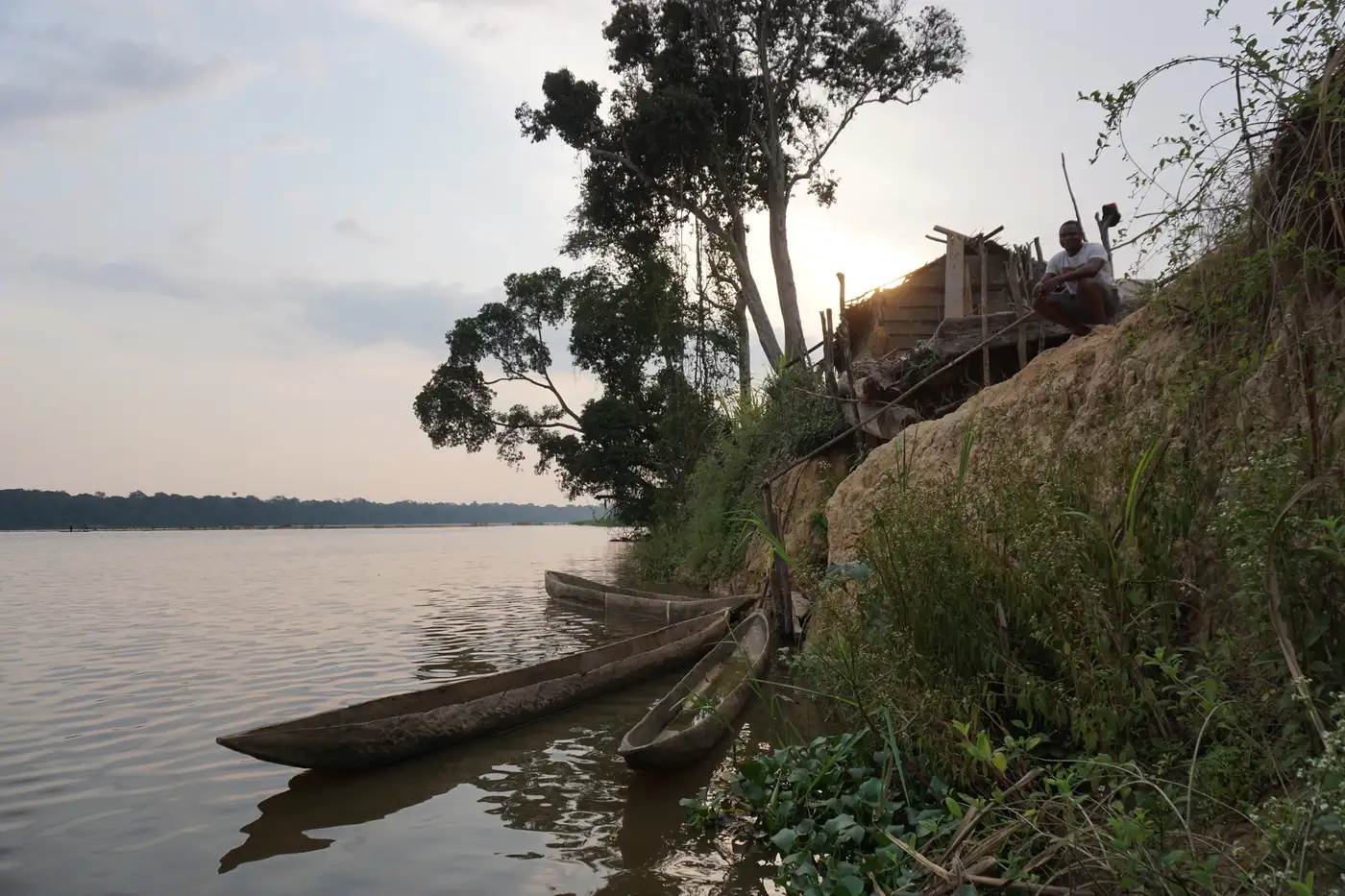
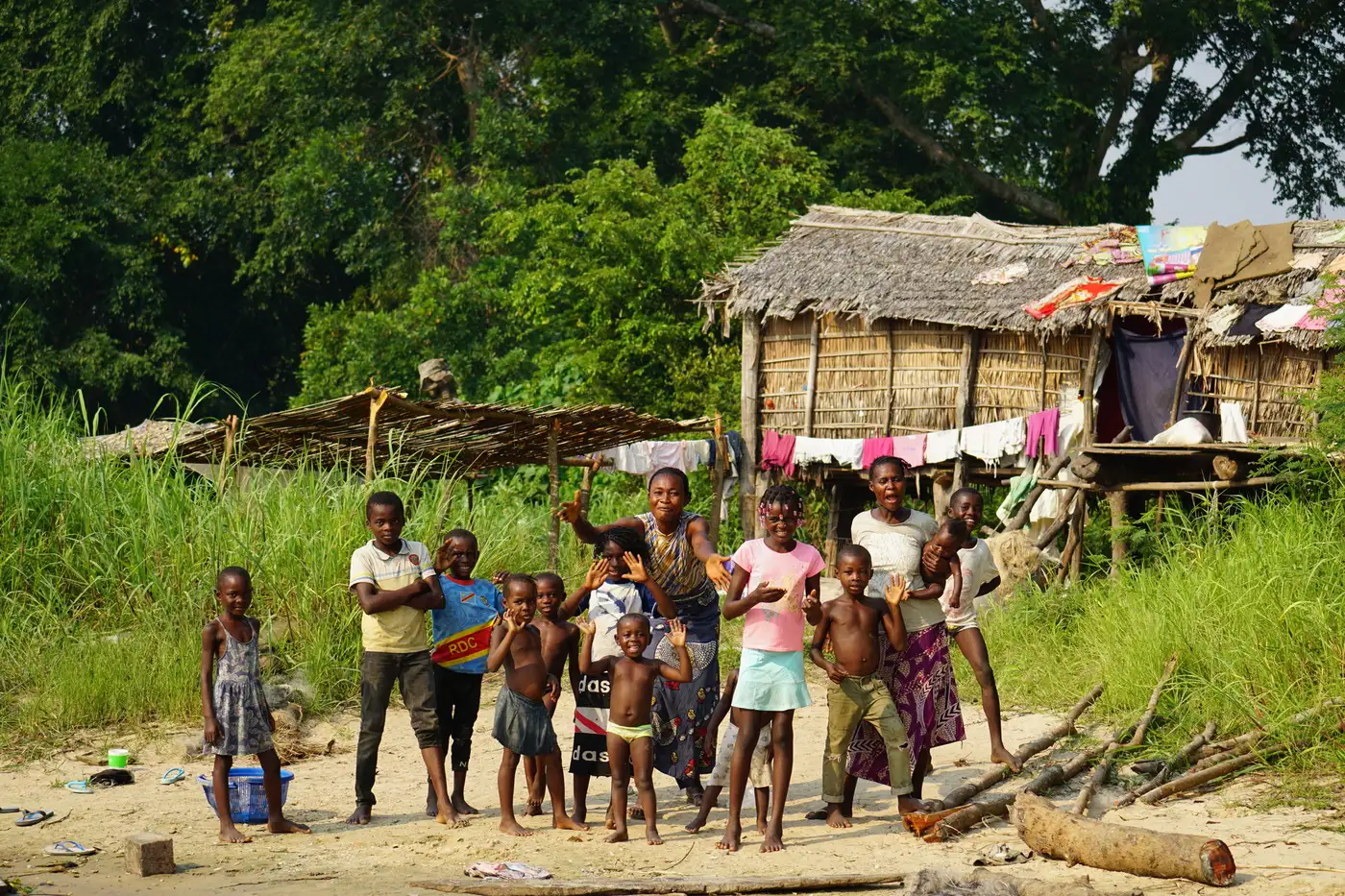
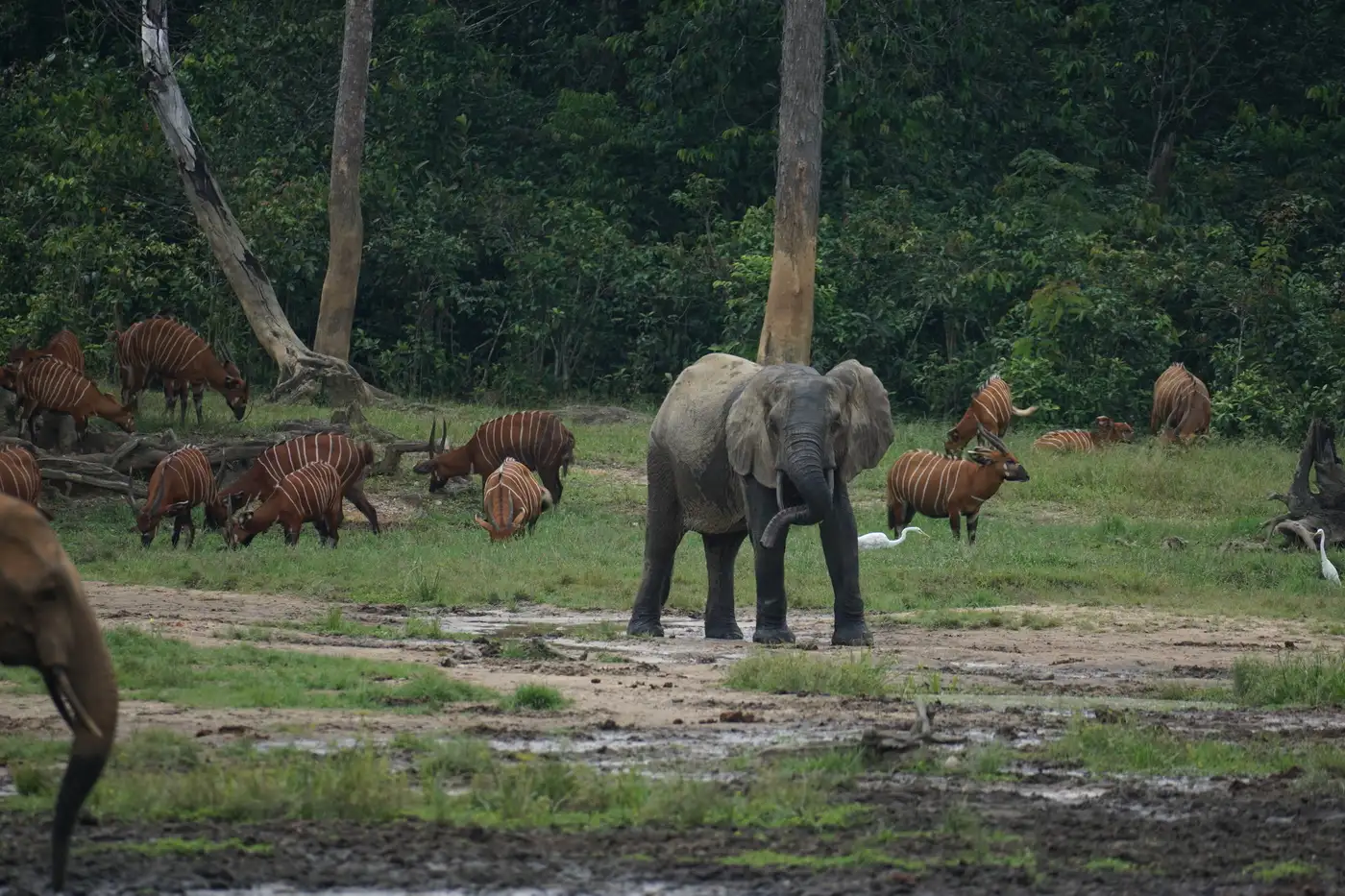
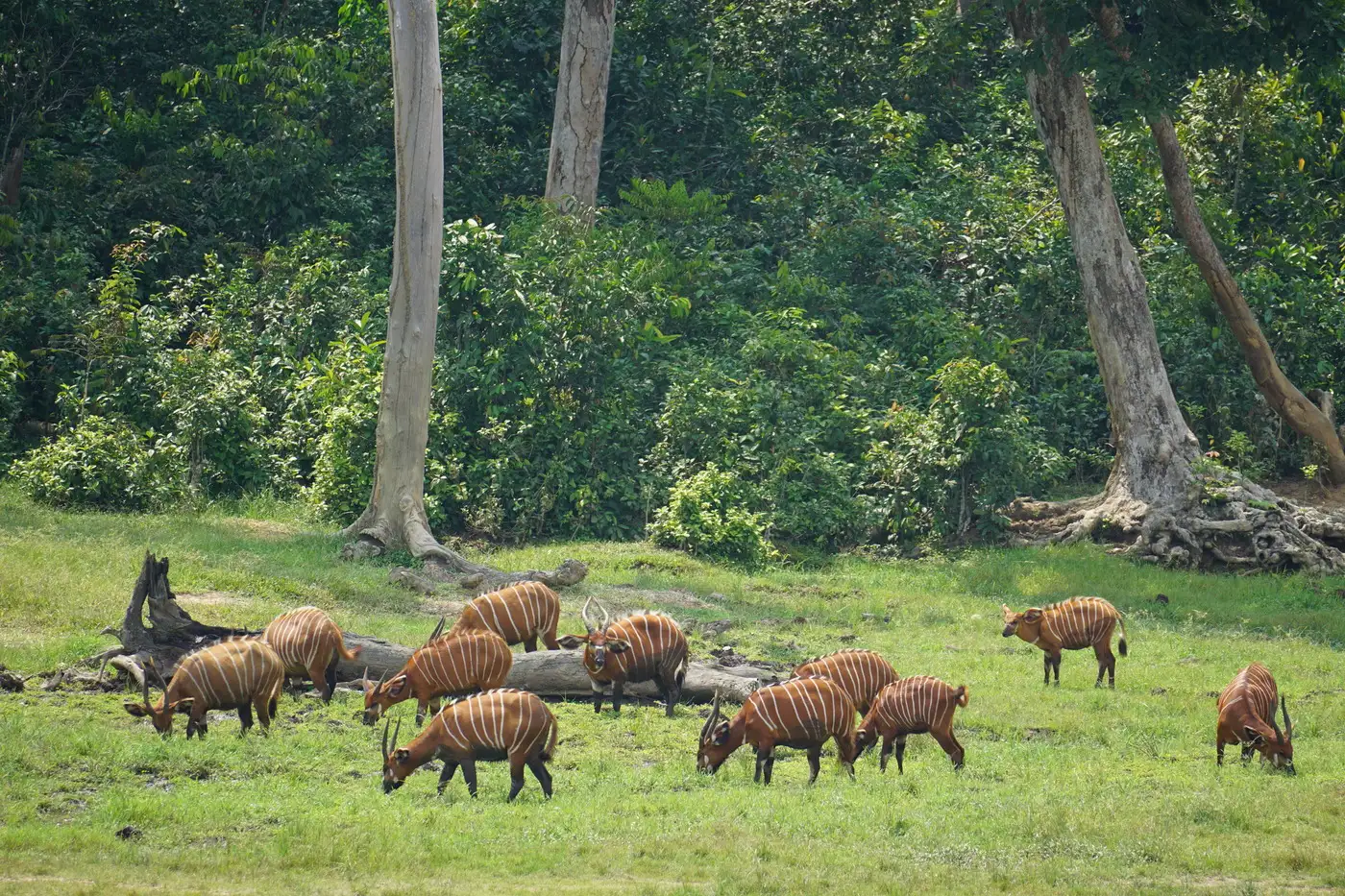
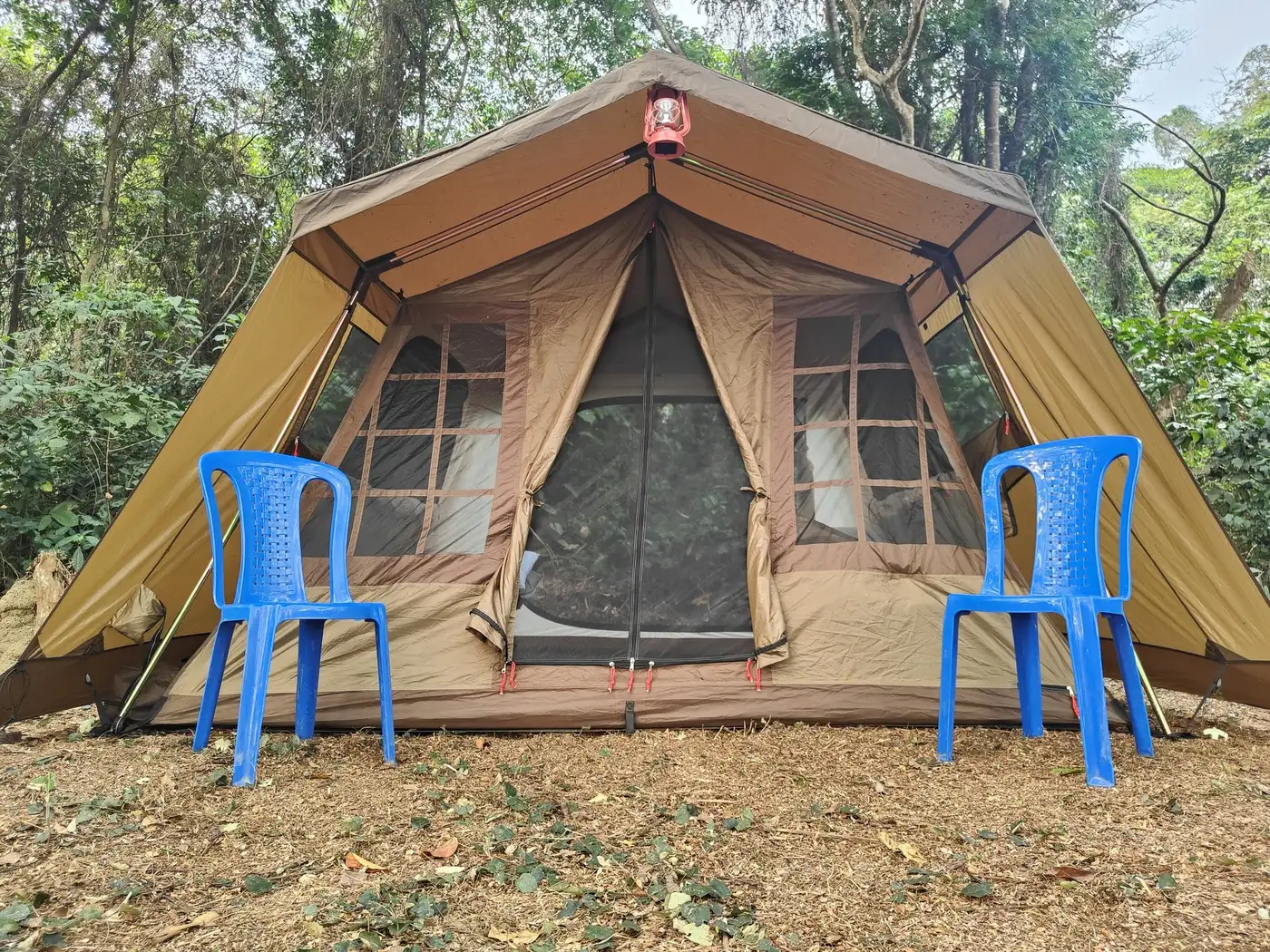
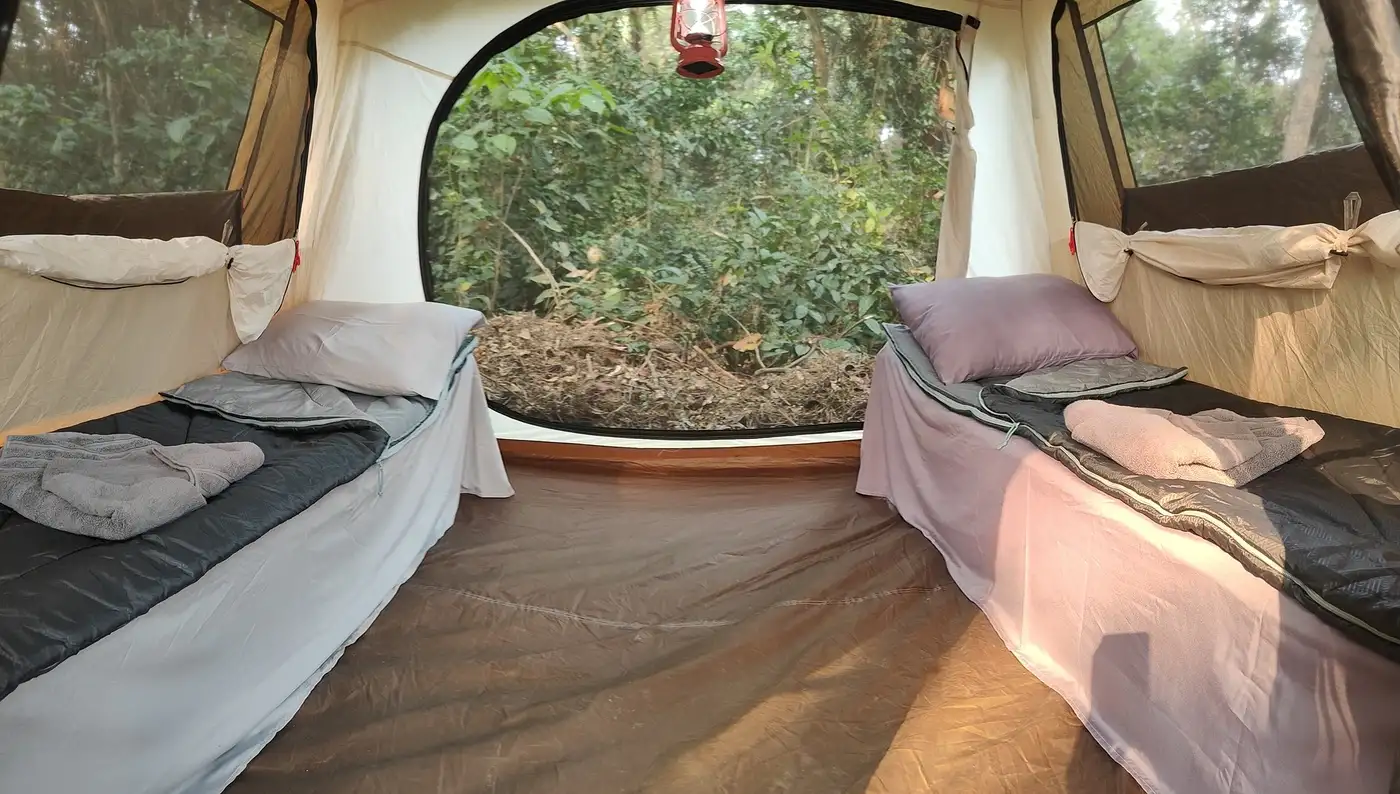
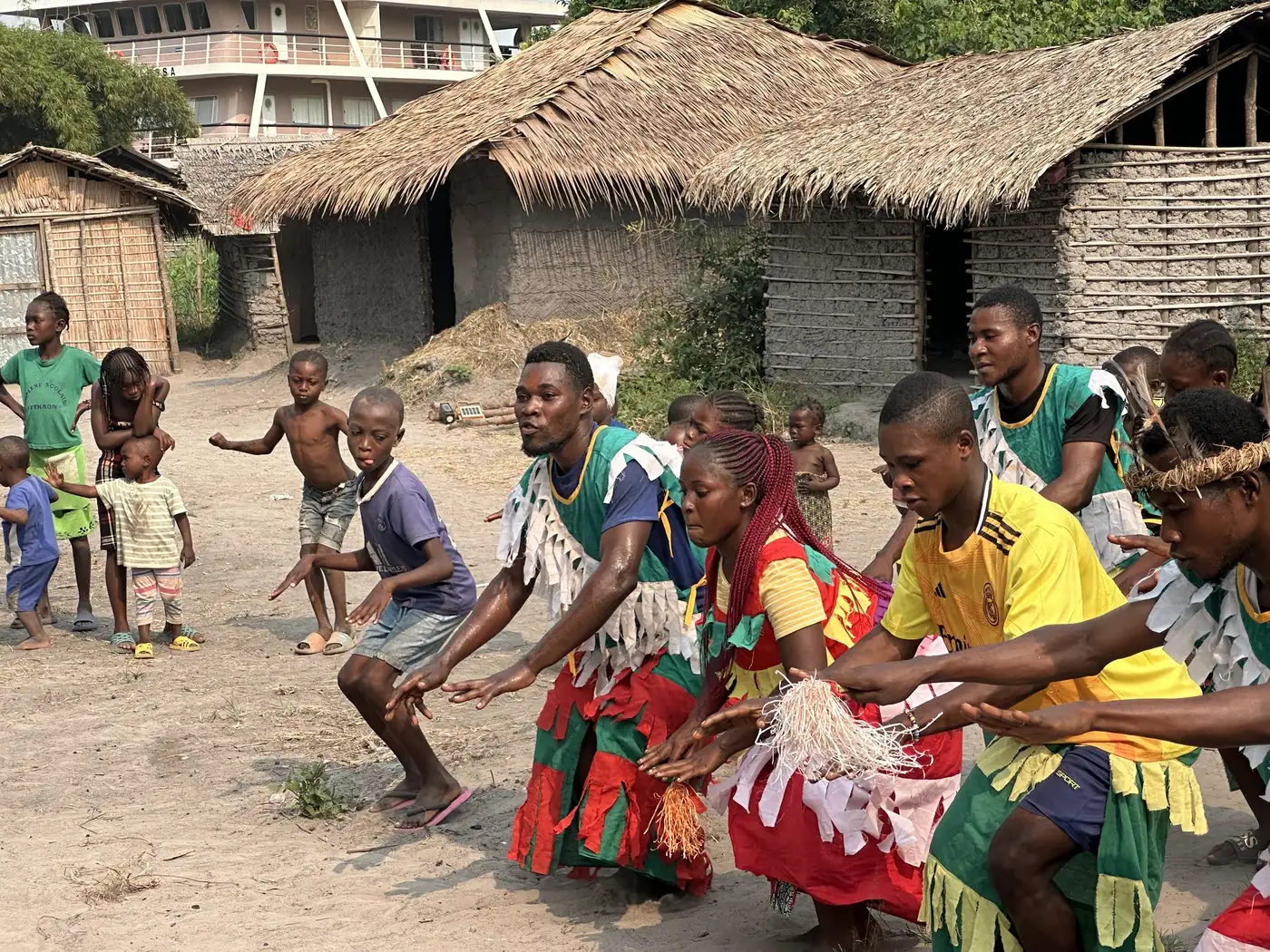
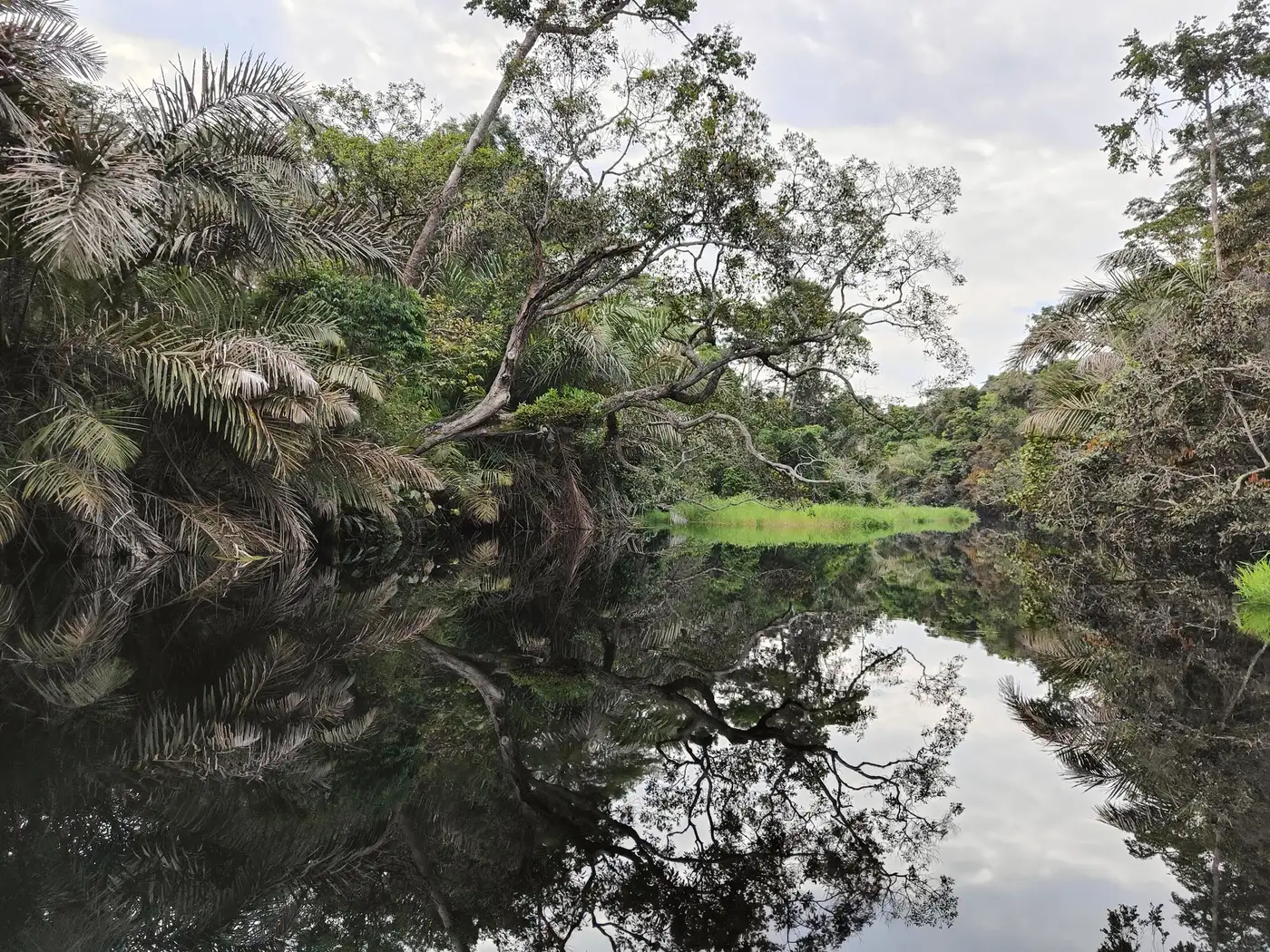
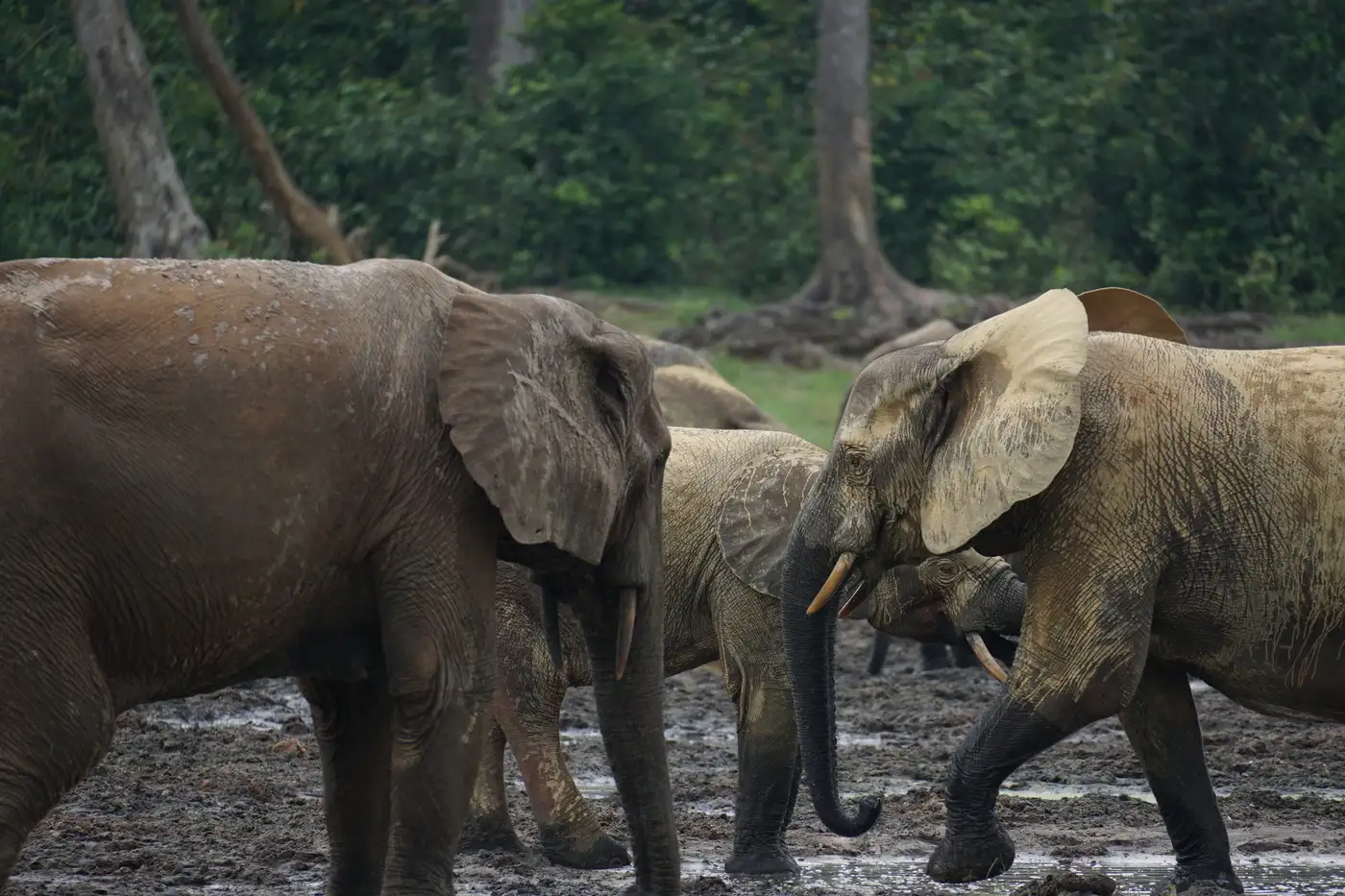
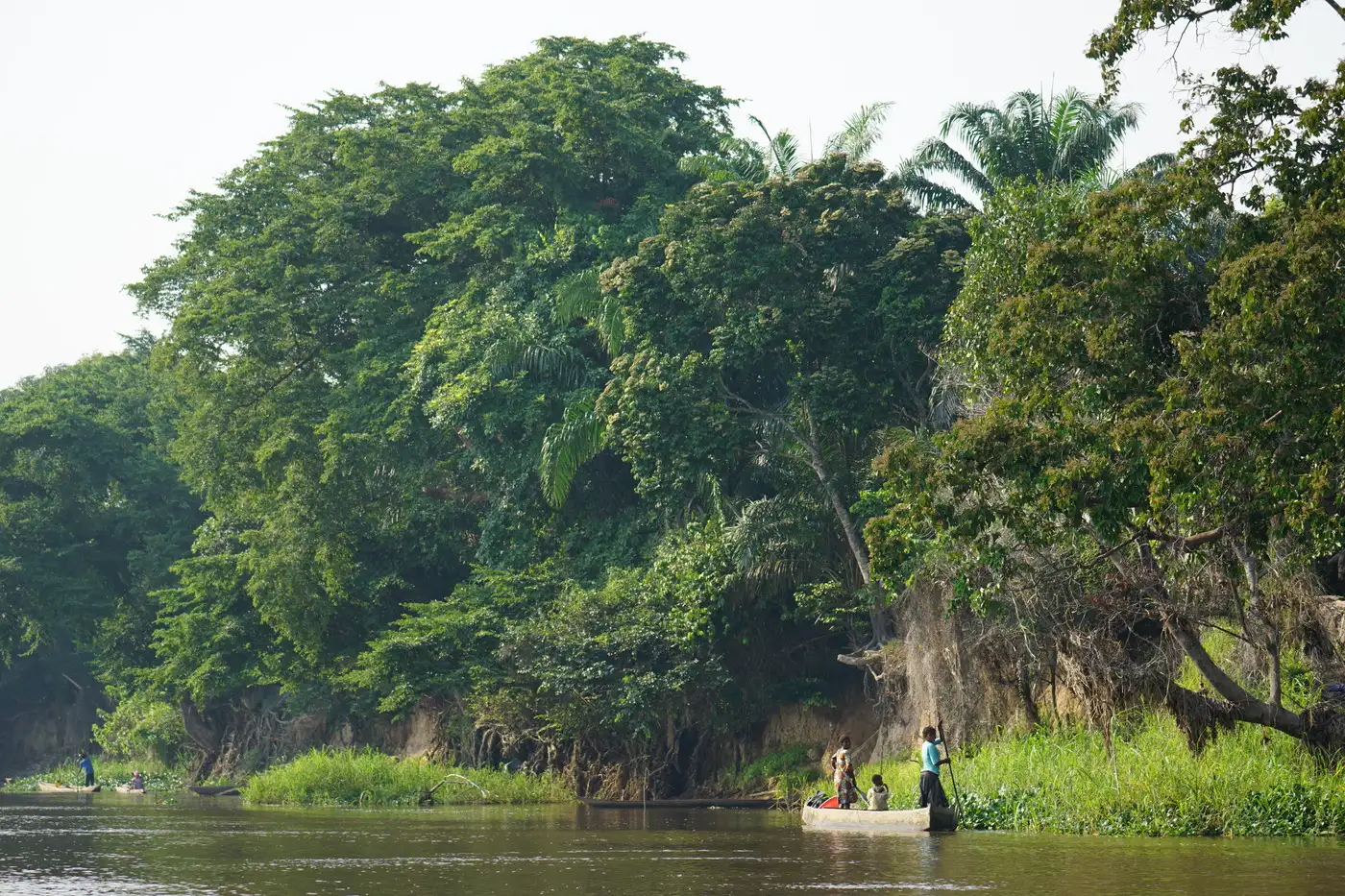
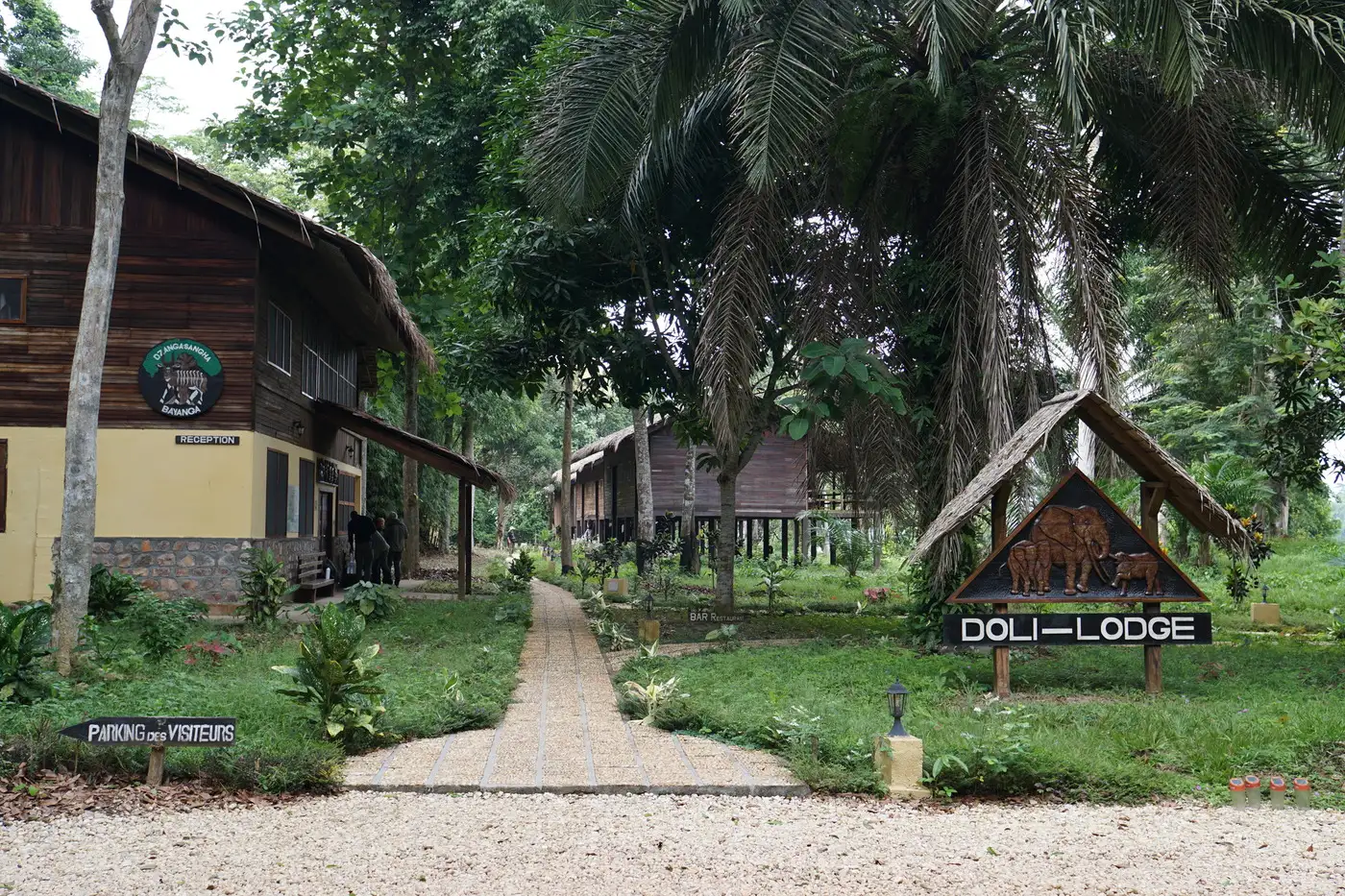
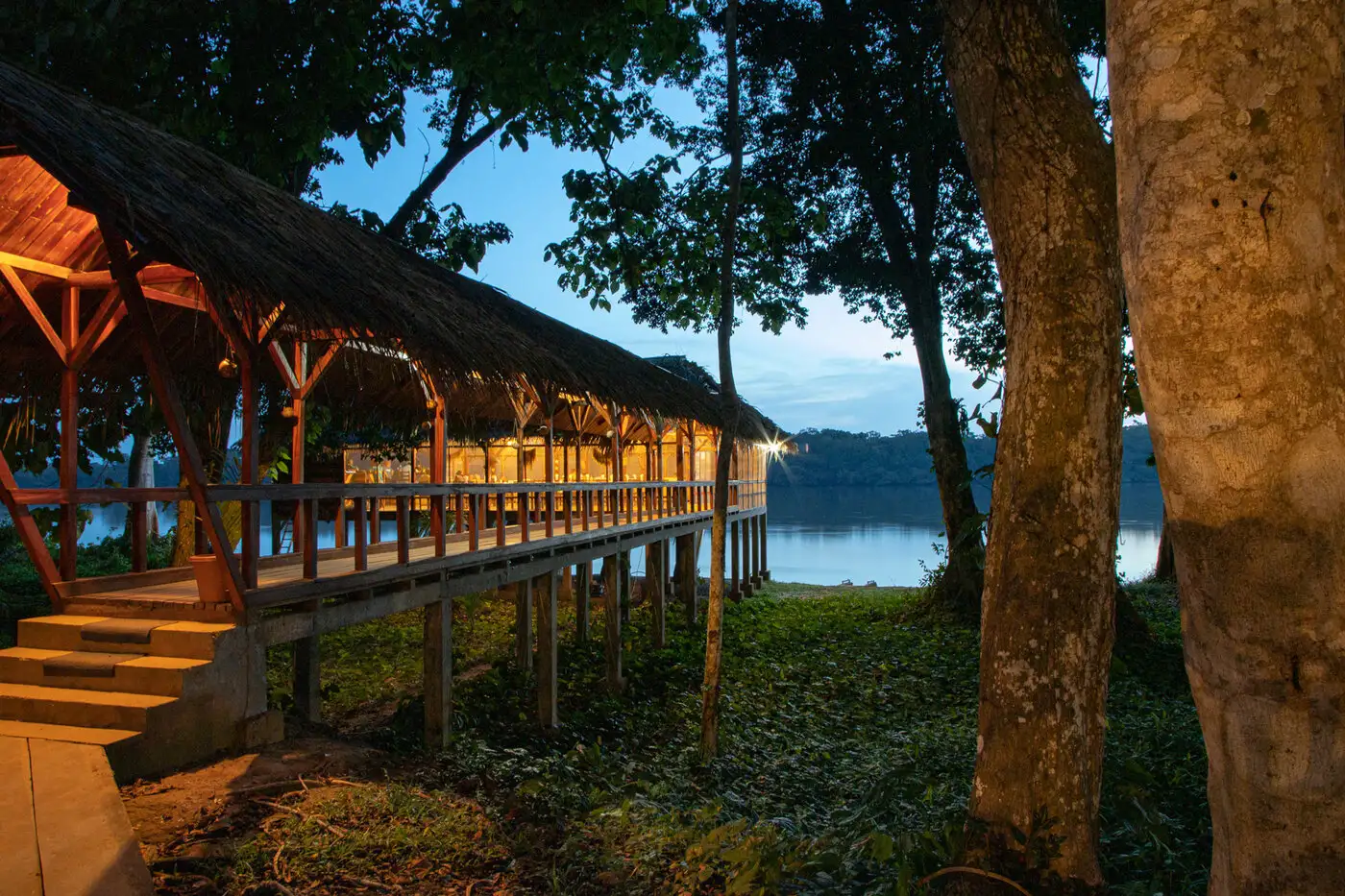
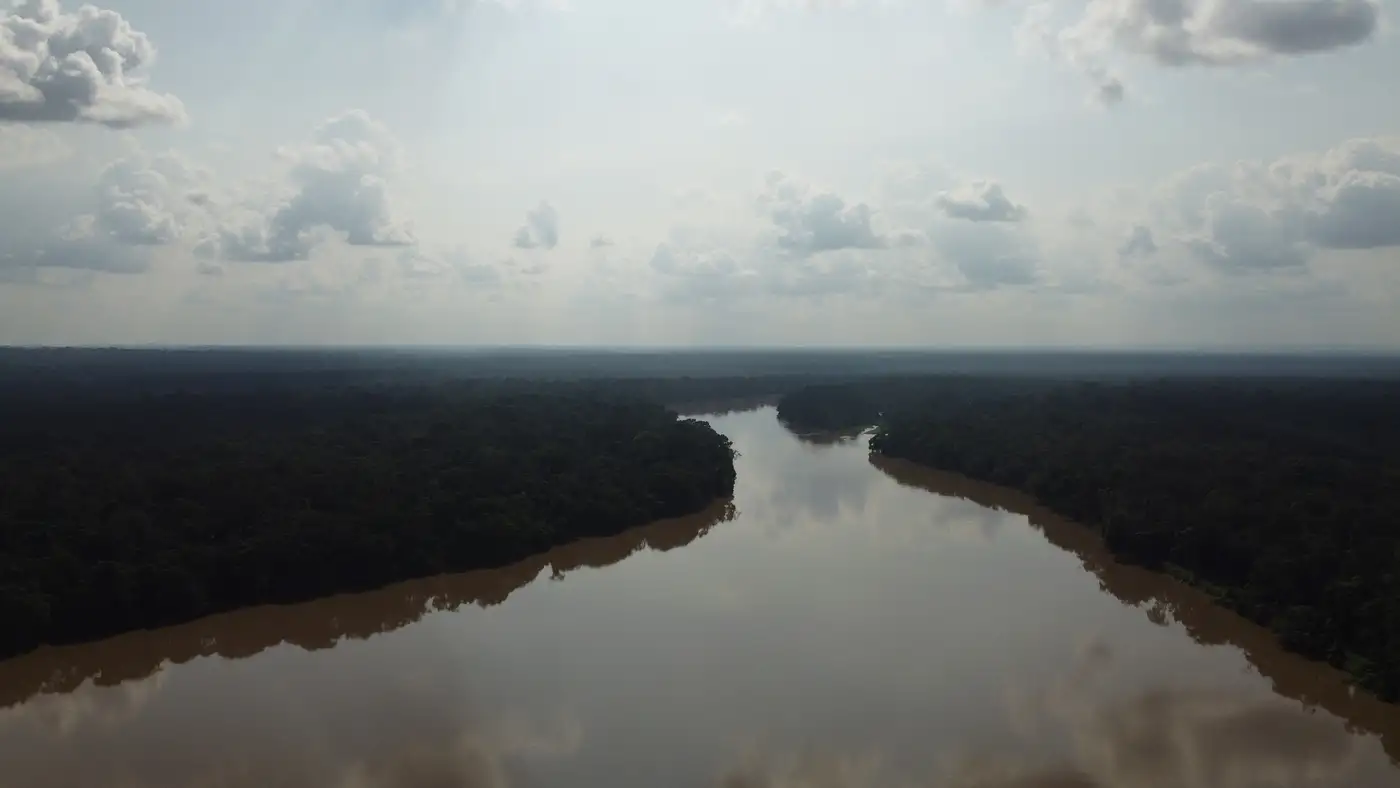
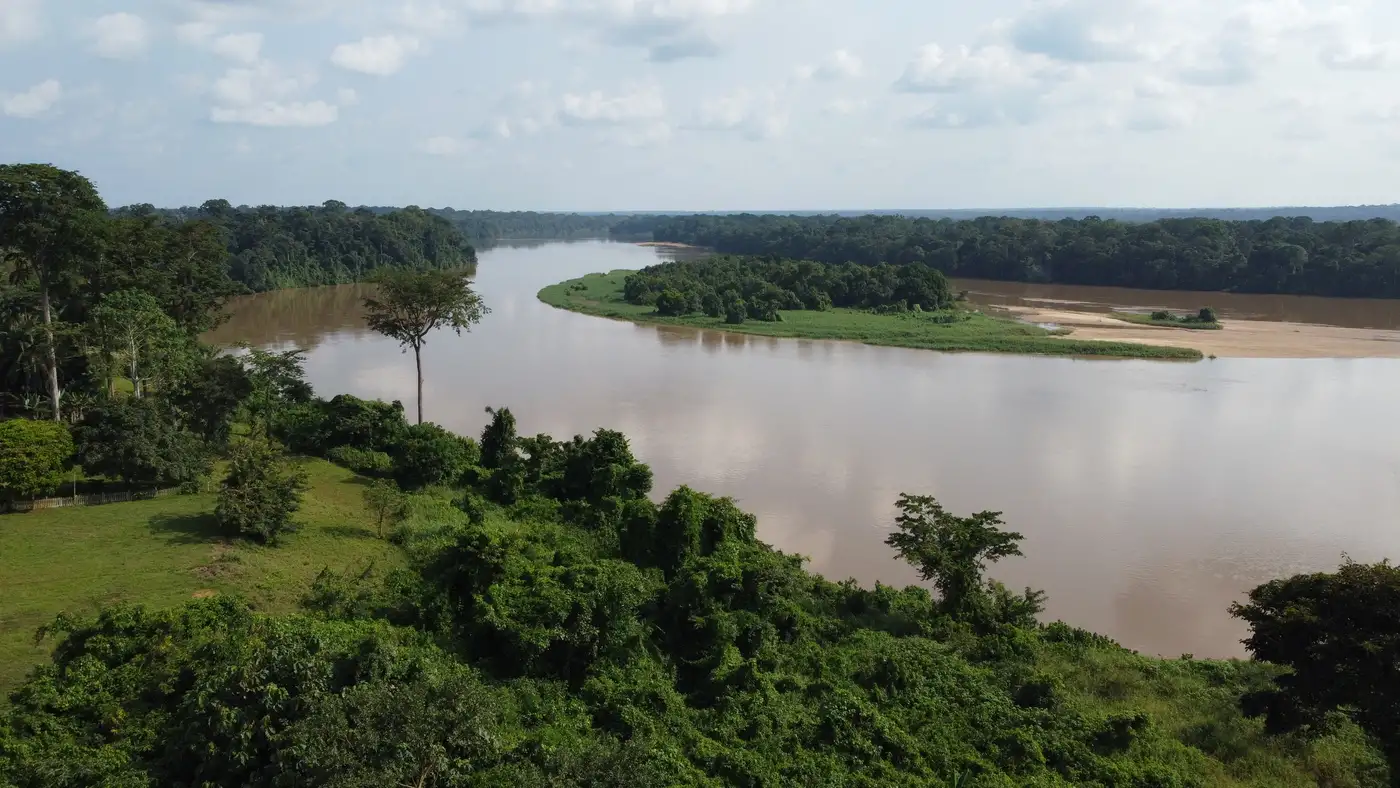
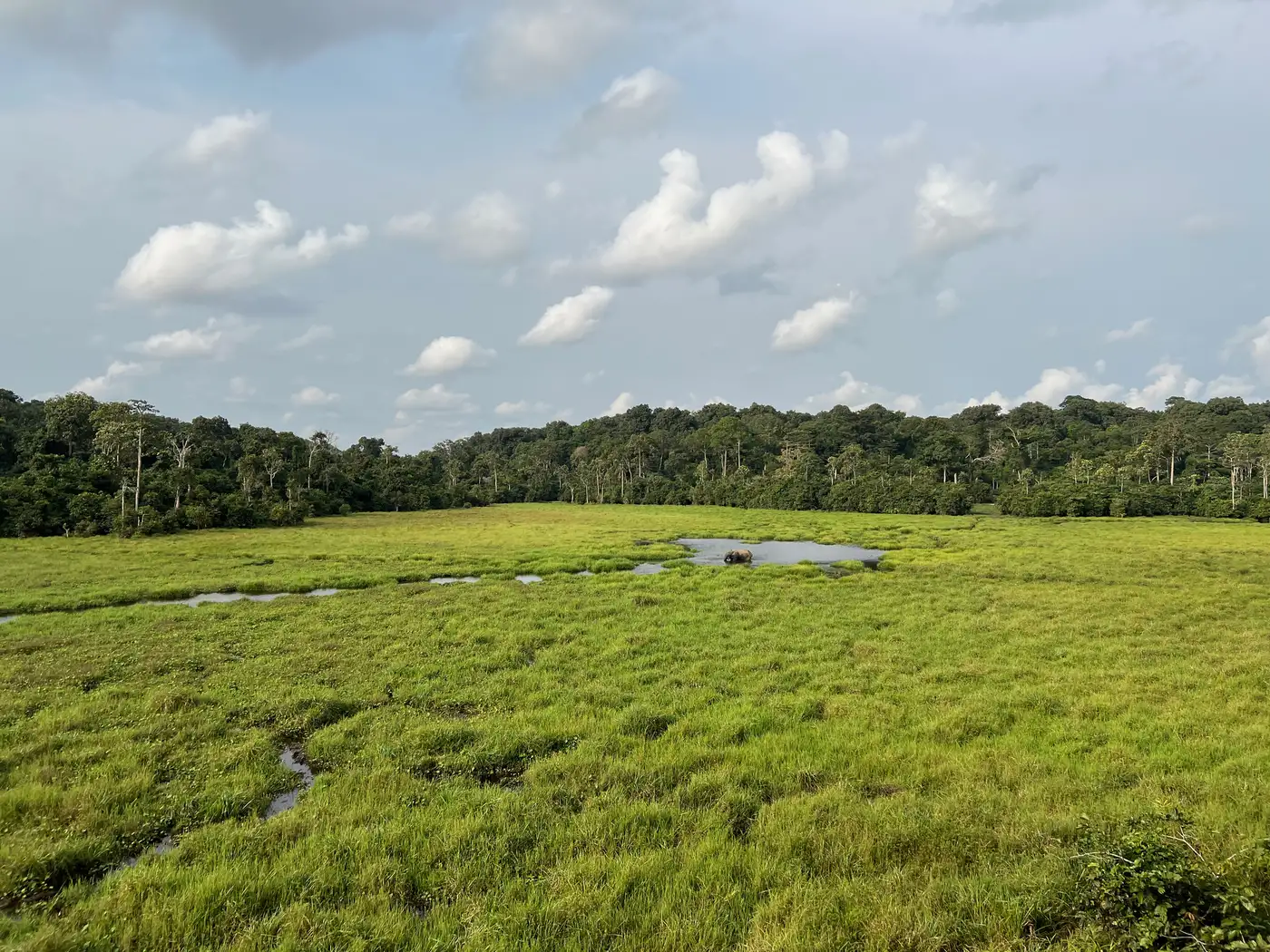
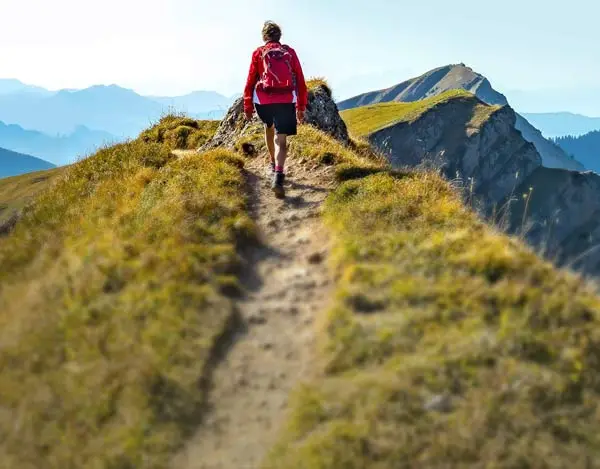
Book This Tour
- Final payment: Due 195 days prior to departure.
- Deposit: A non-refundable $4000 CAD Deposit is required at booking.
- Optional Single Supplement: $5450 CAD (number of singles limited).
(View options forsingle travellers) - $4000 per person deposit required, non-refundable/non-transferable once tour becomes 'guaranteed.' Final payment due at 195 days prior to tour start date.
Prices below are per person, twin-sharing costs in Canadian Dollars (CAD). Pricing does not include airfare to/from the tour and any applicable taxes.
Frequently Asked Questions
- What is the maximum number of participants on a trip?Most of our tours carry a maximum of 18 participants; some tours (ie hiking tours) top out at 16. In the event that we do not achieve our minimum complement by our 90-day deadline, we may offer group members the option of paying a "small-group surcharge" as an alternative to cancellation. If all group members agree, we will confirm the trip at existing numbers; this surcharge is refundable in the event that we ultimately achieve our regular minimum. If the small group surcharge is not accepted, we will offer a refund of your deposit or a different trip of your choice.
- Can I extend my tour either at the beginning or end? What about stopovers?Yes, you can extend your tour either at the beginning or the end and we can book accommodation in our tour hotel. Stopovers are often permitted, depending on air routing. Stopovers usually carry a "stopover" fee levied by the airline.
- How do I make a reservation? How and when do I pay?The easiest way to make a reservation is via our website; during office hours, you are also more than welcome to contact us by telephone.
A non-refundable deposit is payable at the time of booking; if a reservation is made within 90 days, full payment is required. Some trips require a larger deposit. If international airline bookings require a non-refundable payment in order to secure space or the lowest available fare, we will require an increase in deposit equal to the cost of the ticket(s).
Early enrolment is always encouraged as group size is limited and some trips require greater preparation time.
Once we have received your deposit, we will confirm your space and send you a confirmation package containing your trip itinerary, any visa/travel permit related documents, invoice, clothing and equipment recommendations, general information on your destination(s), and forms for you to complete, sign and return to us. Your air e-tickets (if applicable), final hotel list, final trip itinerary, and instructions on how to join your tour, will be sent approximately 2-3 weeks prior to departure. - What about cancellations, refunds, and transfers?Please review our cancellation policy page for details.
- I am a single who prefers my own room. What is a single supplement?All of our tours have a single supplement for those who want to be guaranteed their own room at each location.
This supplement is a reflection of the fact that most hotels around the world do not discount the regular twin-share rate for a room by 50% for only one person occupying a room. Most hotels will give a break on the price, but usually in the range of 25-30% of the twin-share rate. This difference, multiplied by each night, amounts to the single supplement.
The conventional amount can also vary from country to country and some destinations are more expensive than others for single occupancy. In order to be "single friendly," the supplements we apply are not a profit centre for us and we do our best to keep them as reasonable as possible.
On most tours we limit the number of singles available, not to be punitive, but rather because many hotels allow for only a limited number of singles; some smaller hotels at remote locations also have a limited number of single rooms available.
Please note that most single rooms around the world are smaller than twin-share rooms and will likely have only one bed. - Do you have a shared accommodation program?Yes! If you are single traveller and are willing to share, we will do our best to pair you with a same-gender roommate. Please note that should we fail to pair you, we will absorb the single supplement fee and you will default to a single room at no extra charge.
